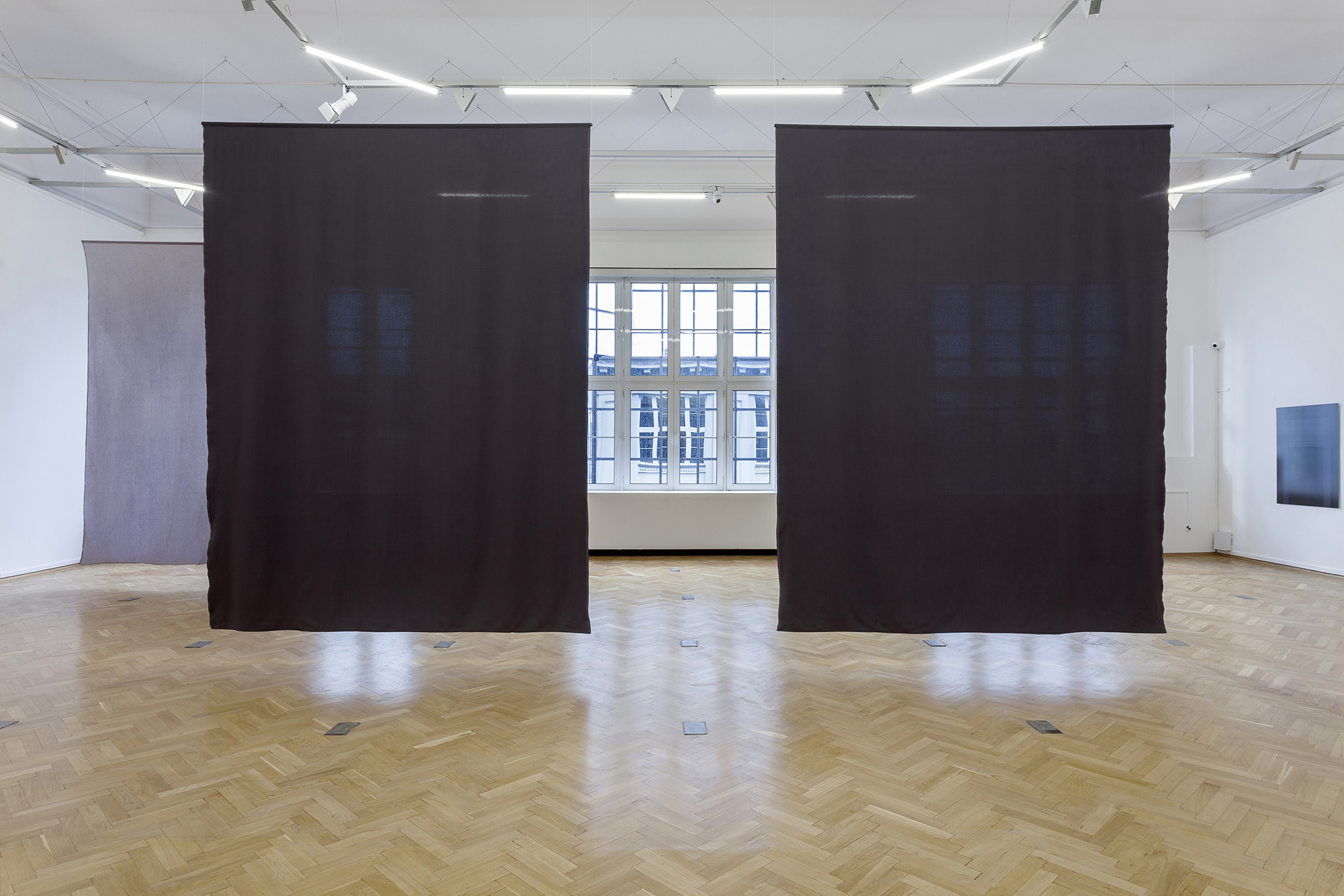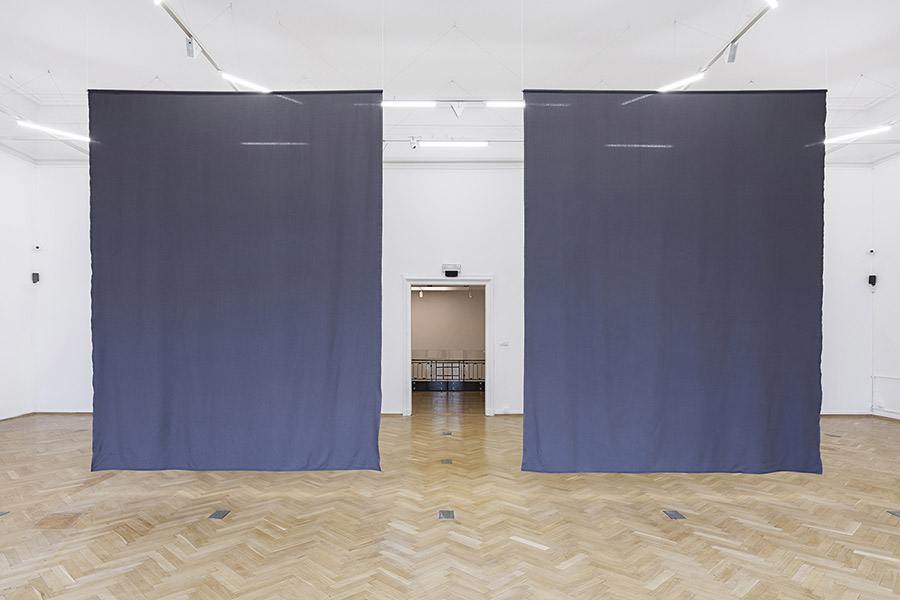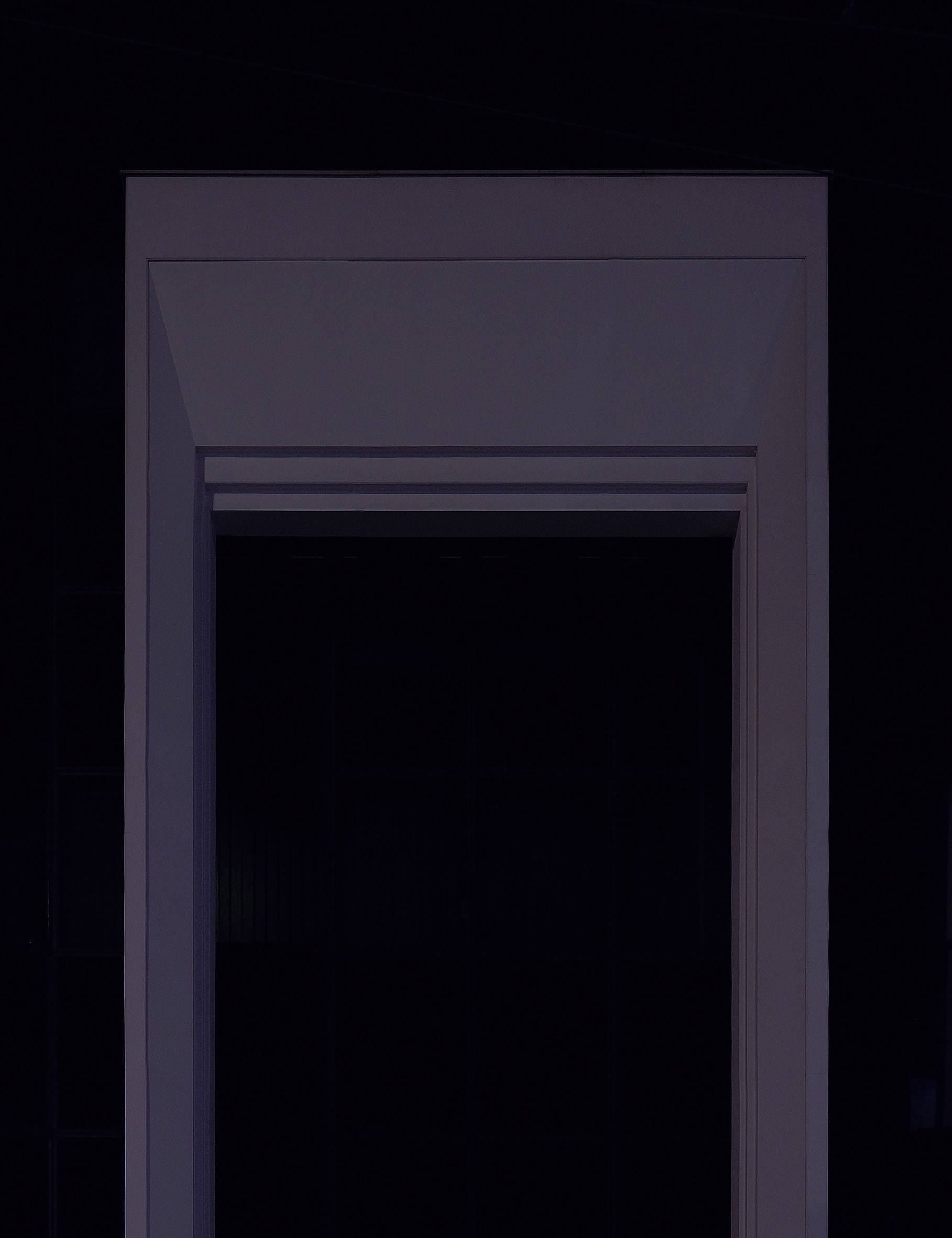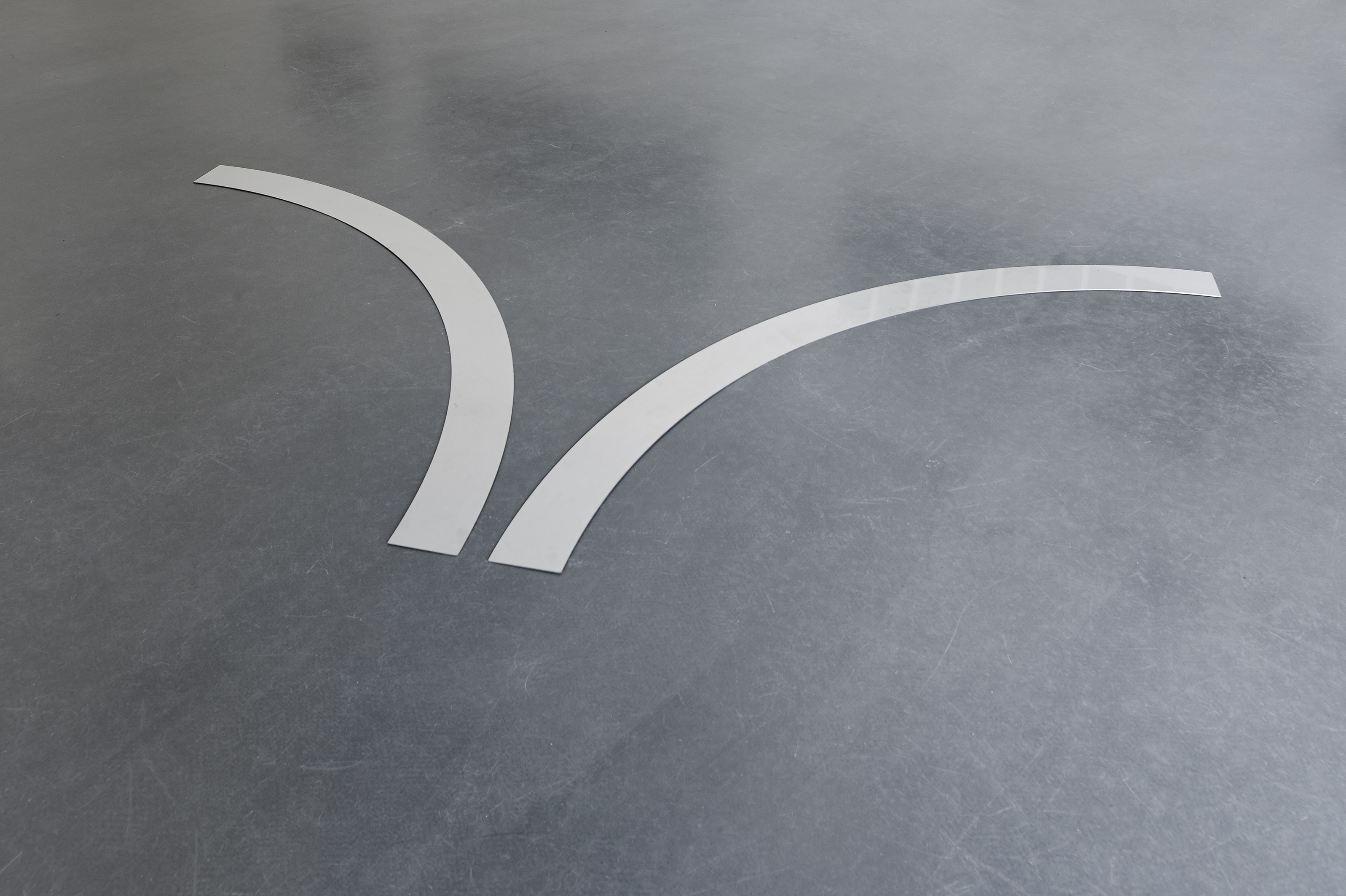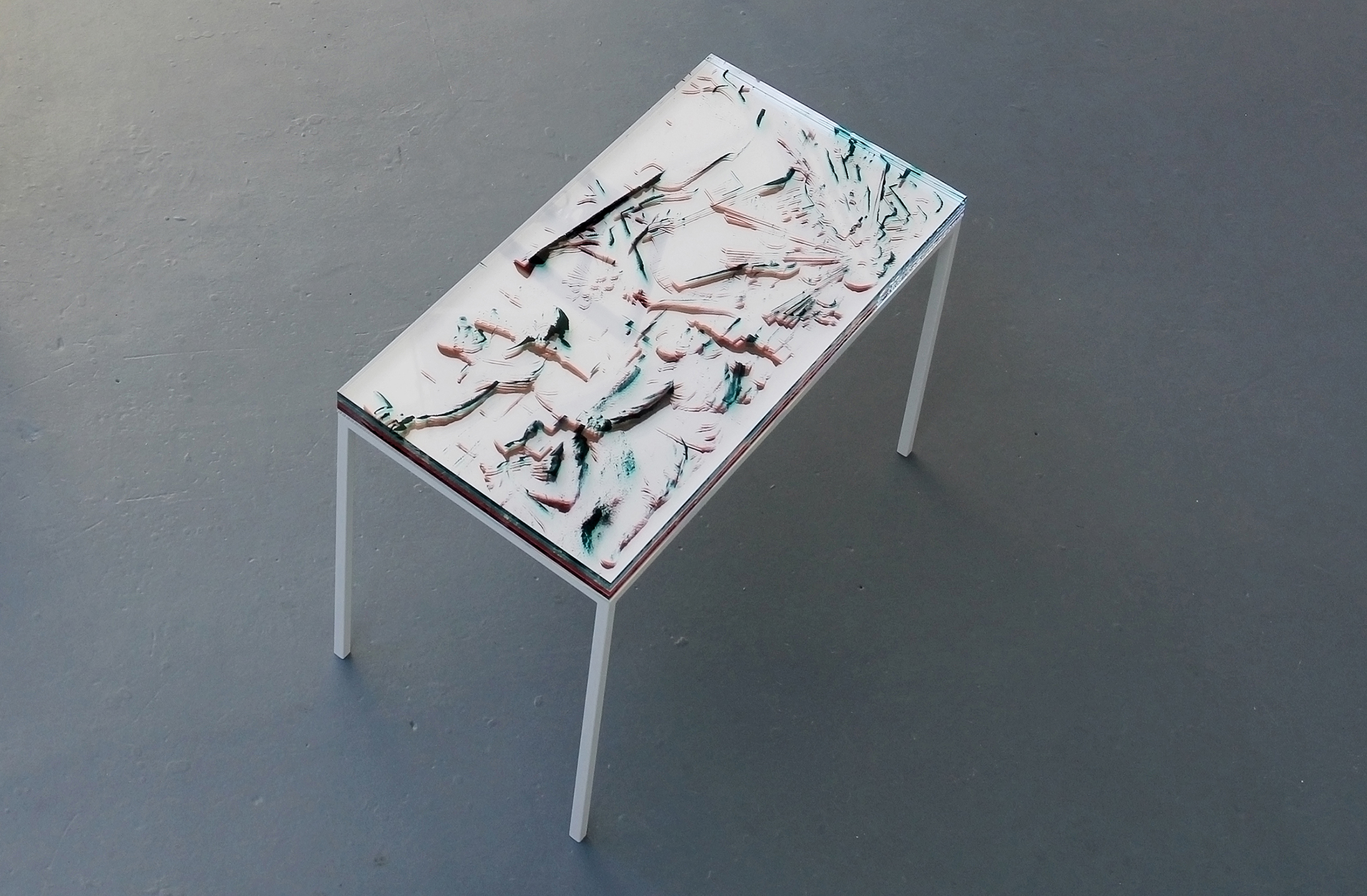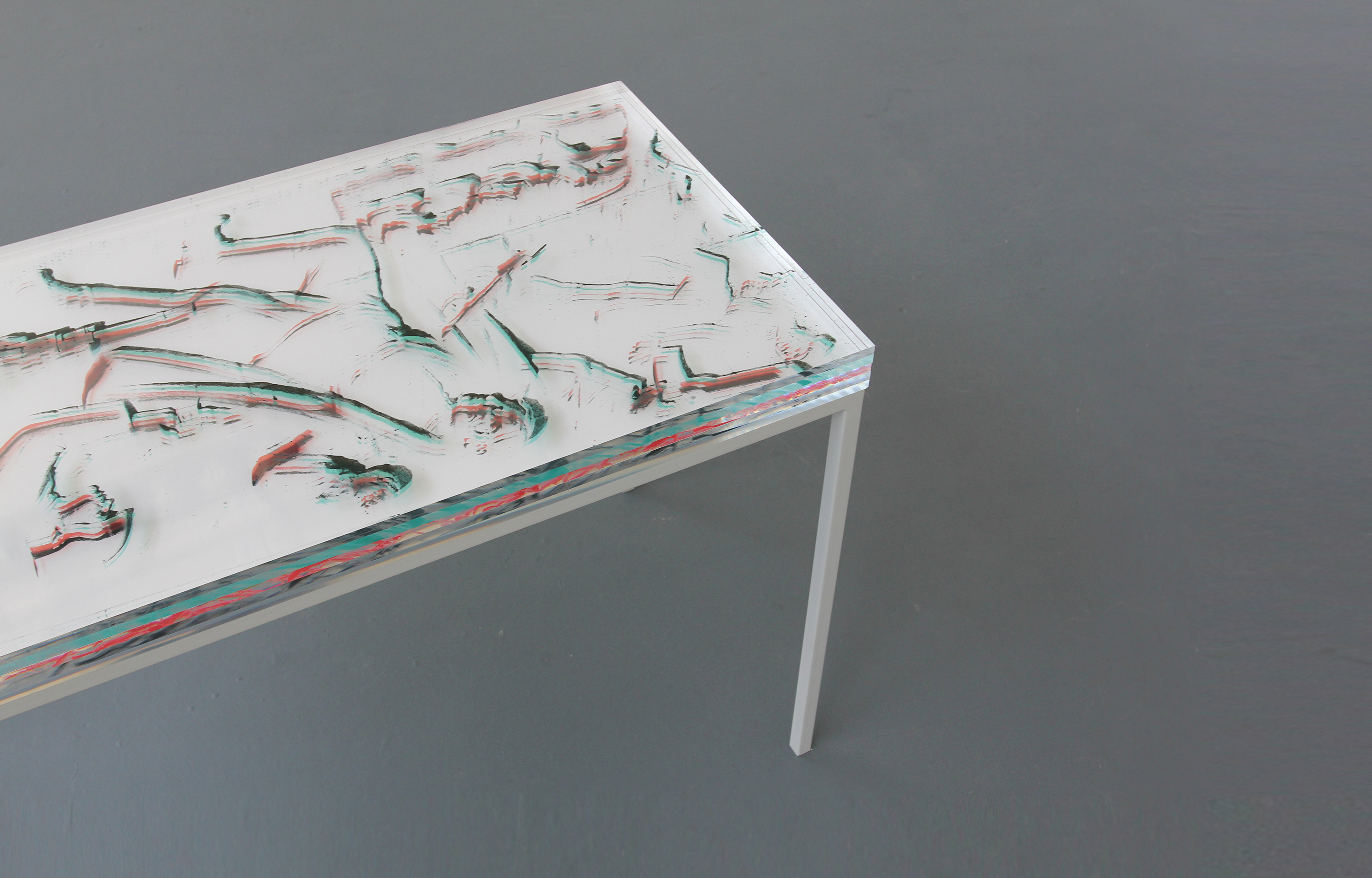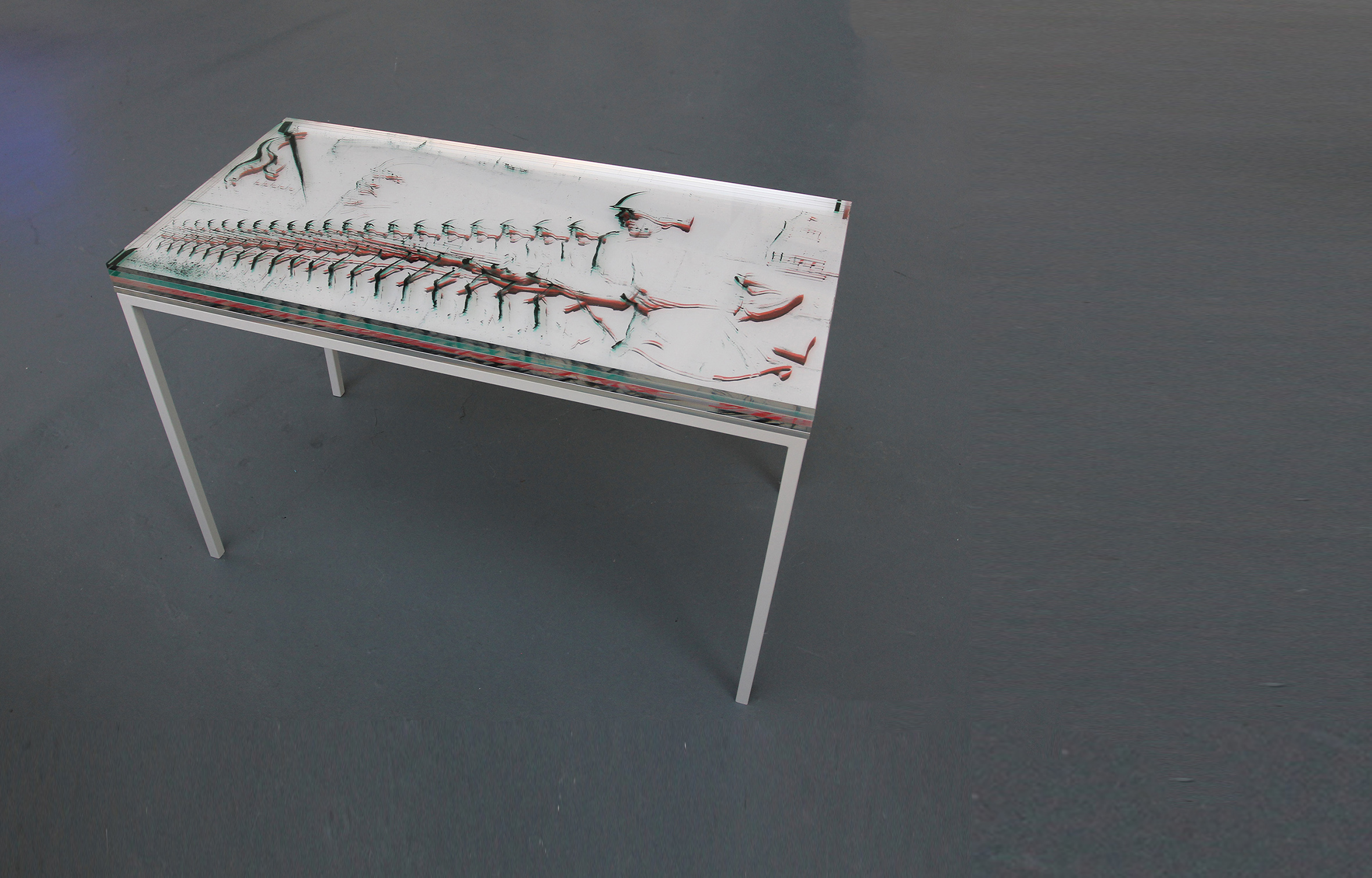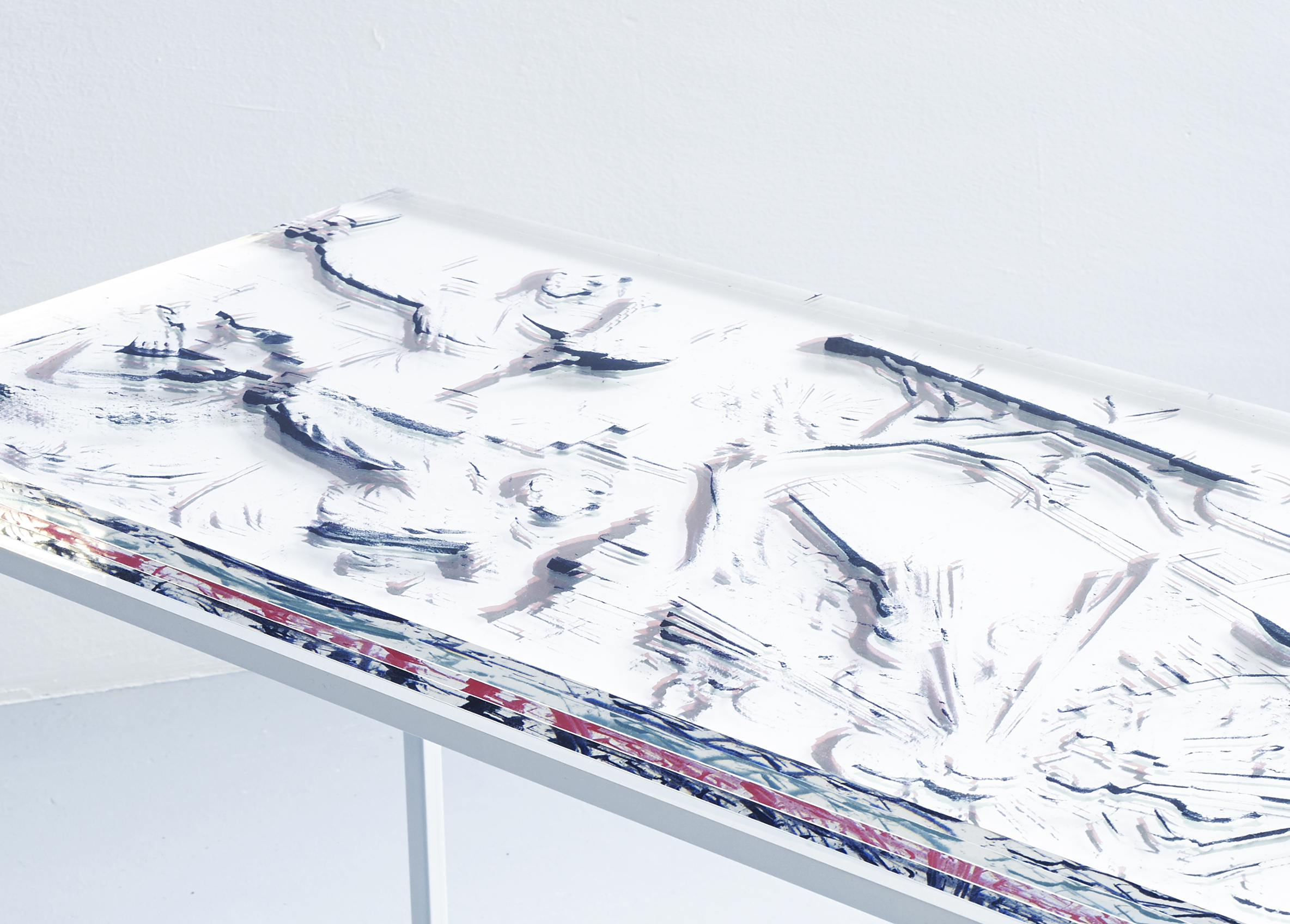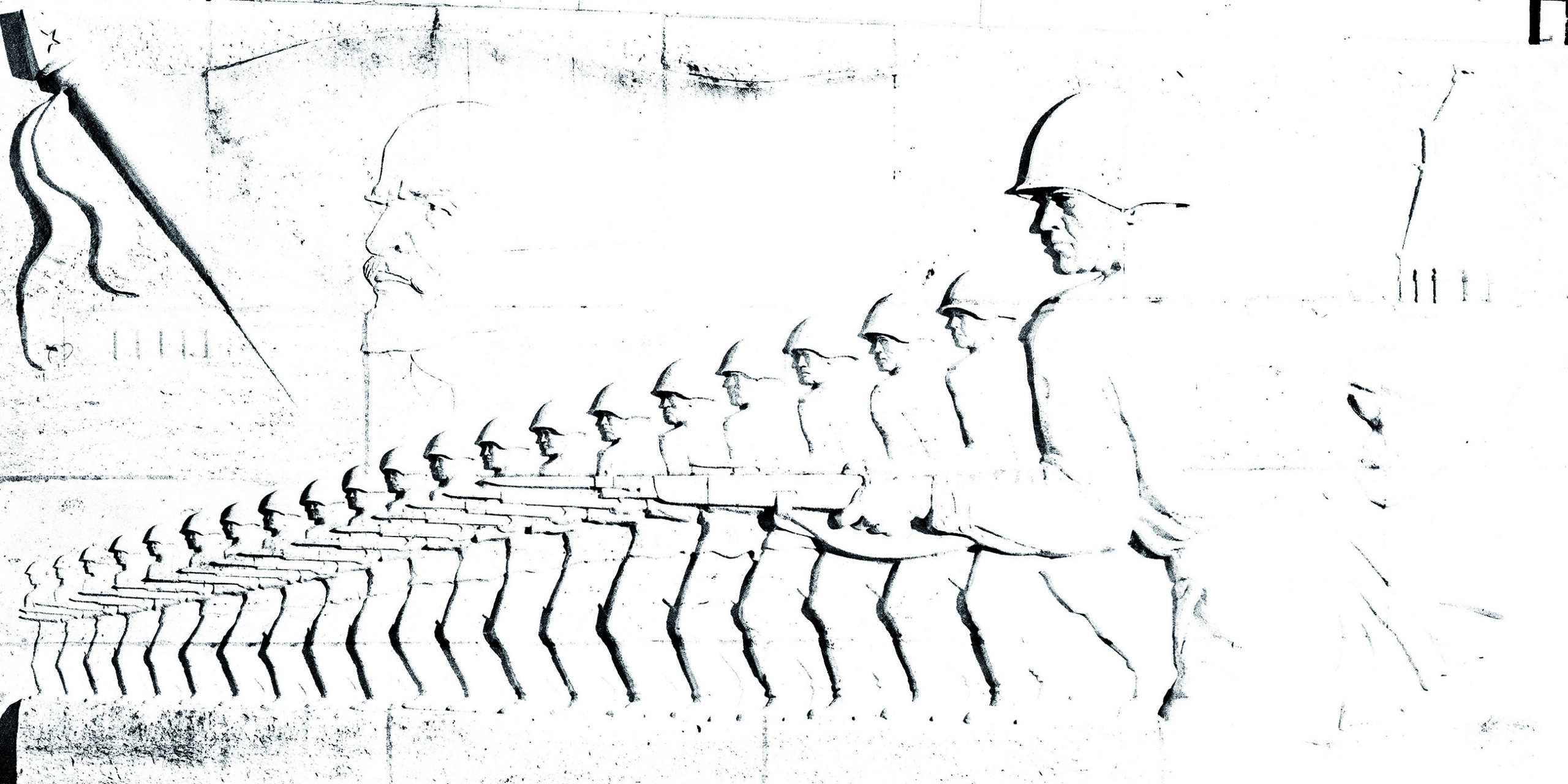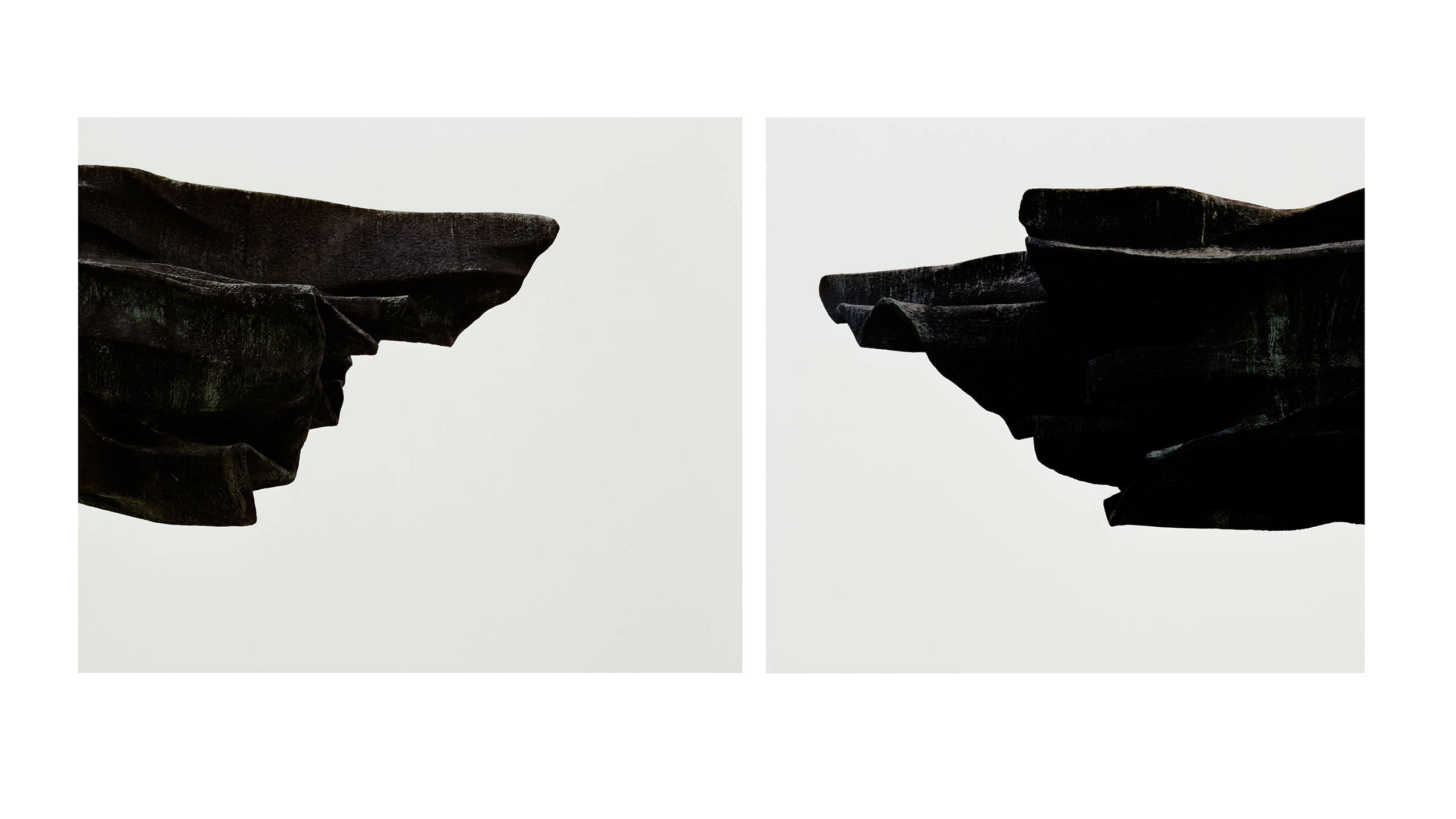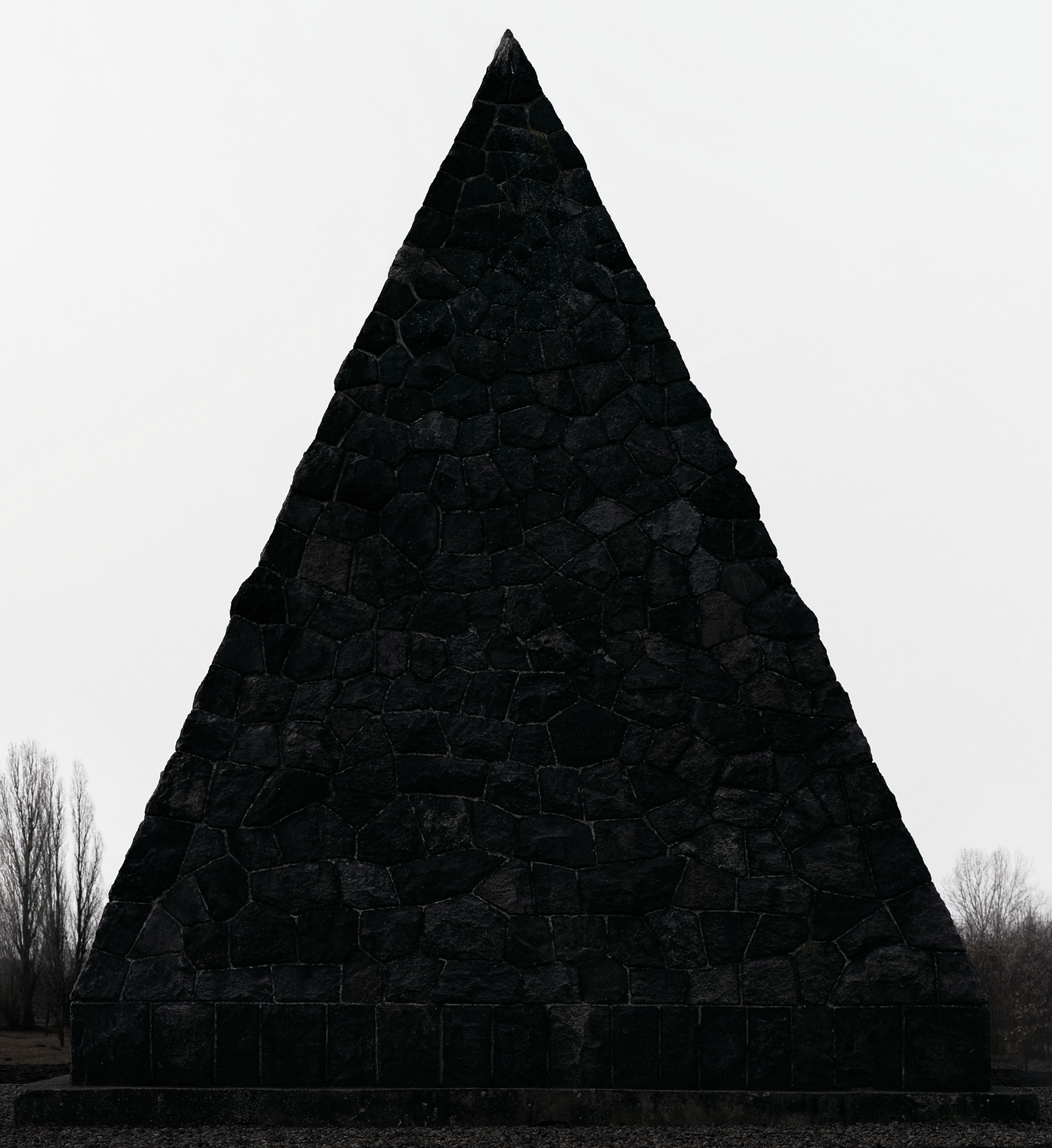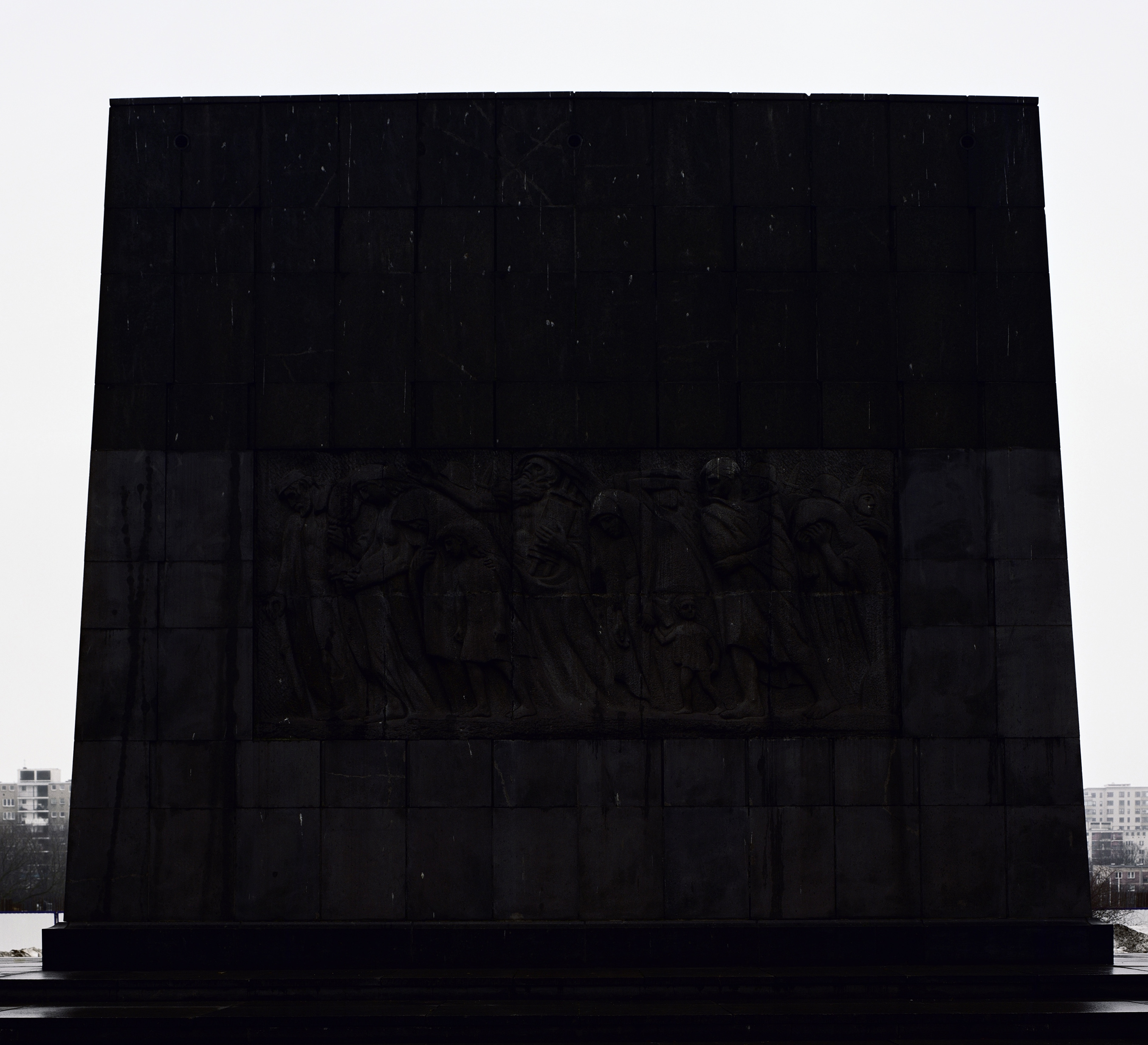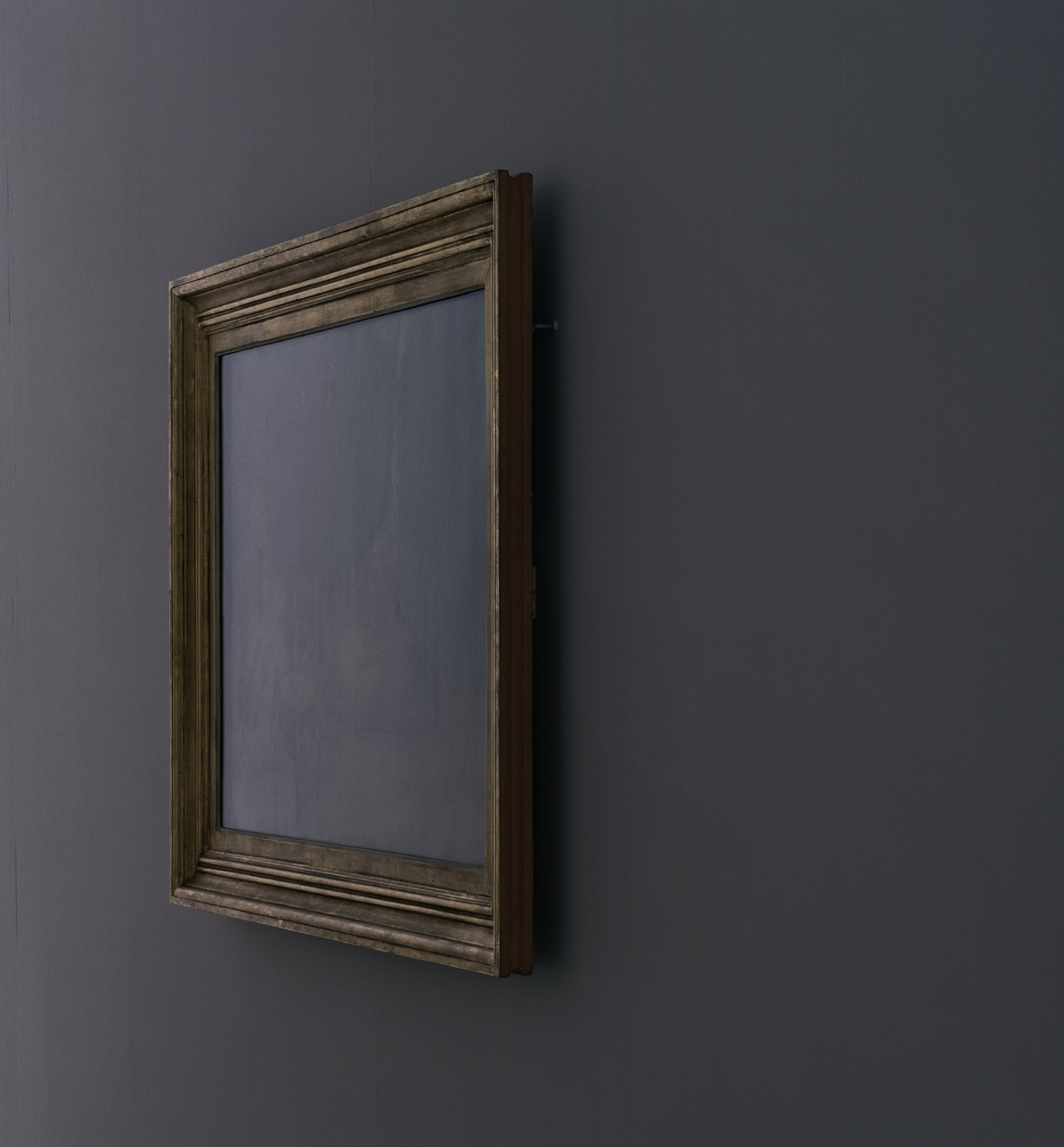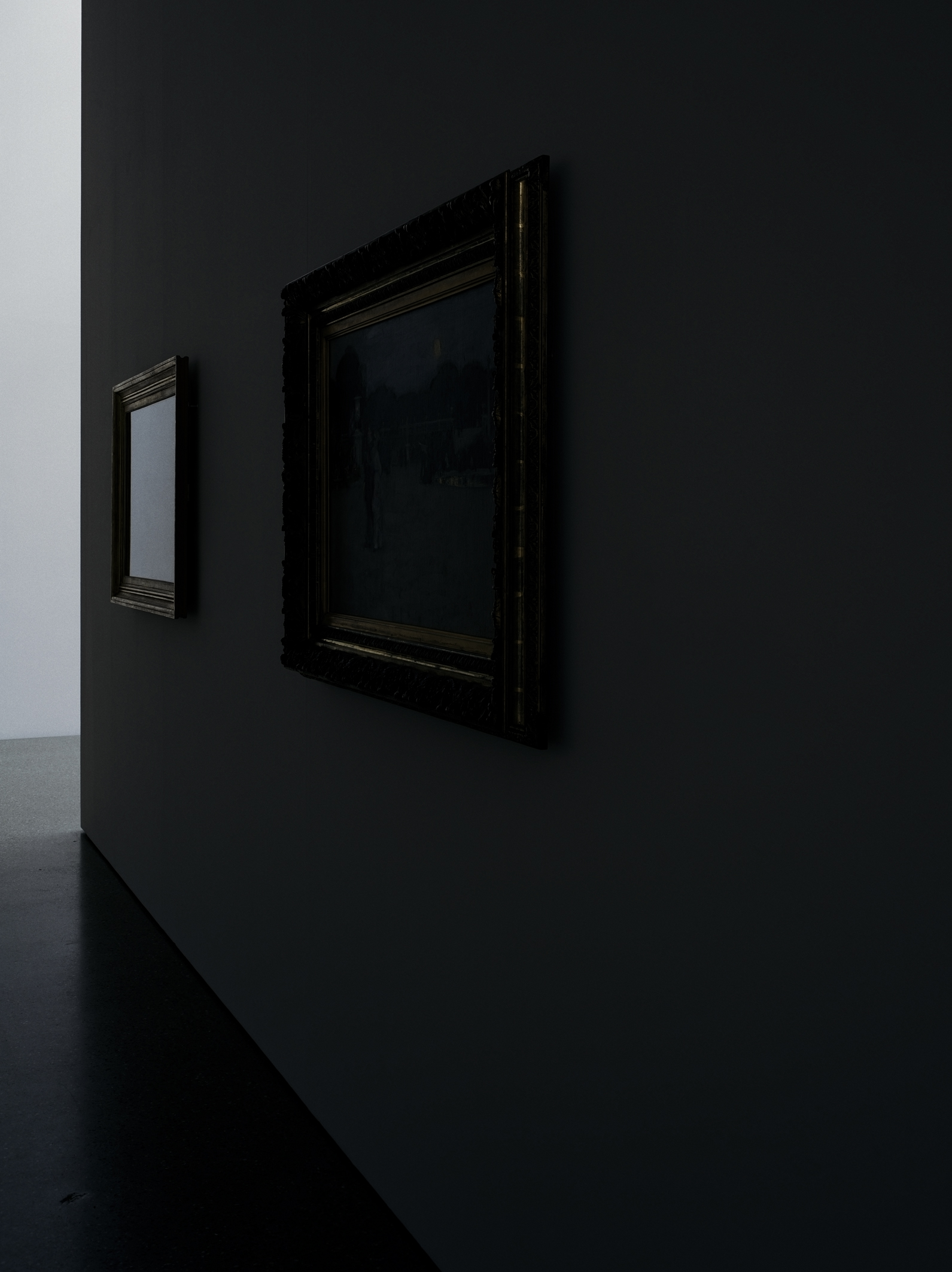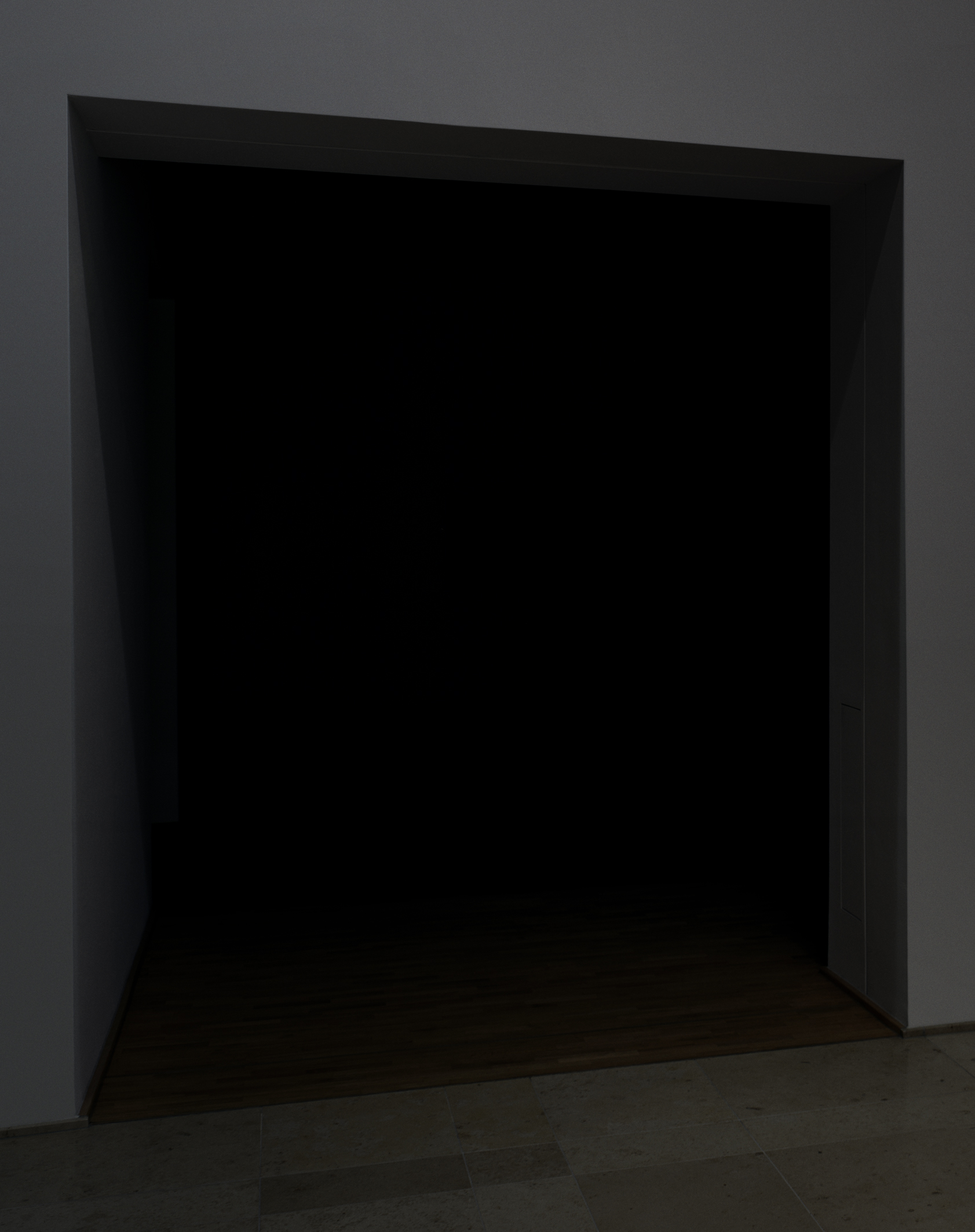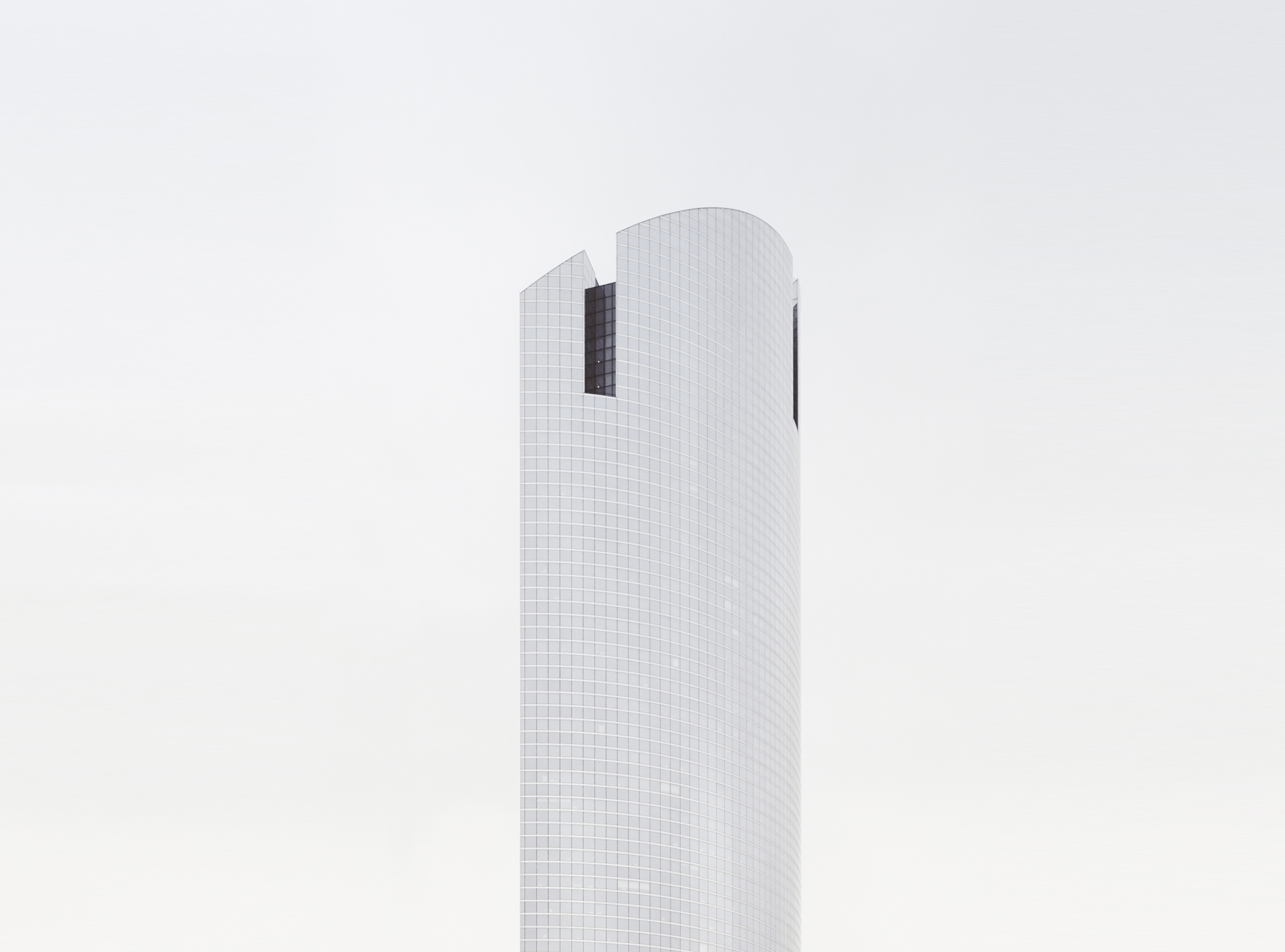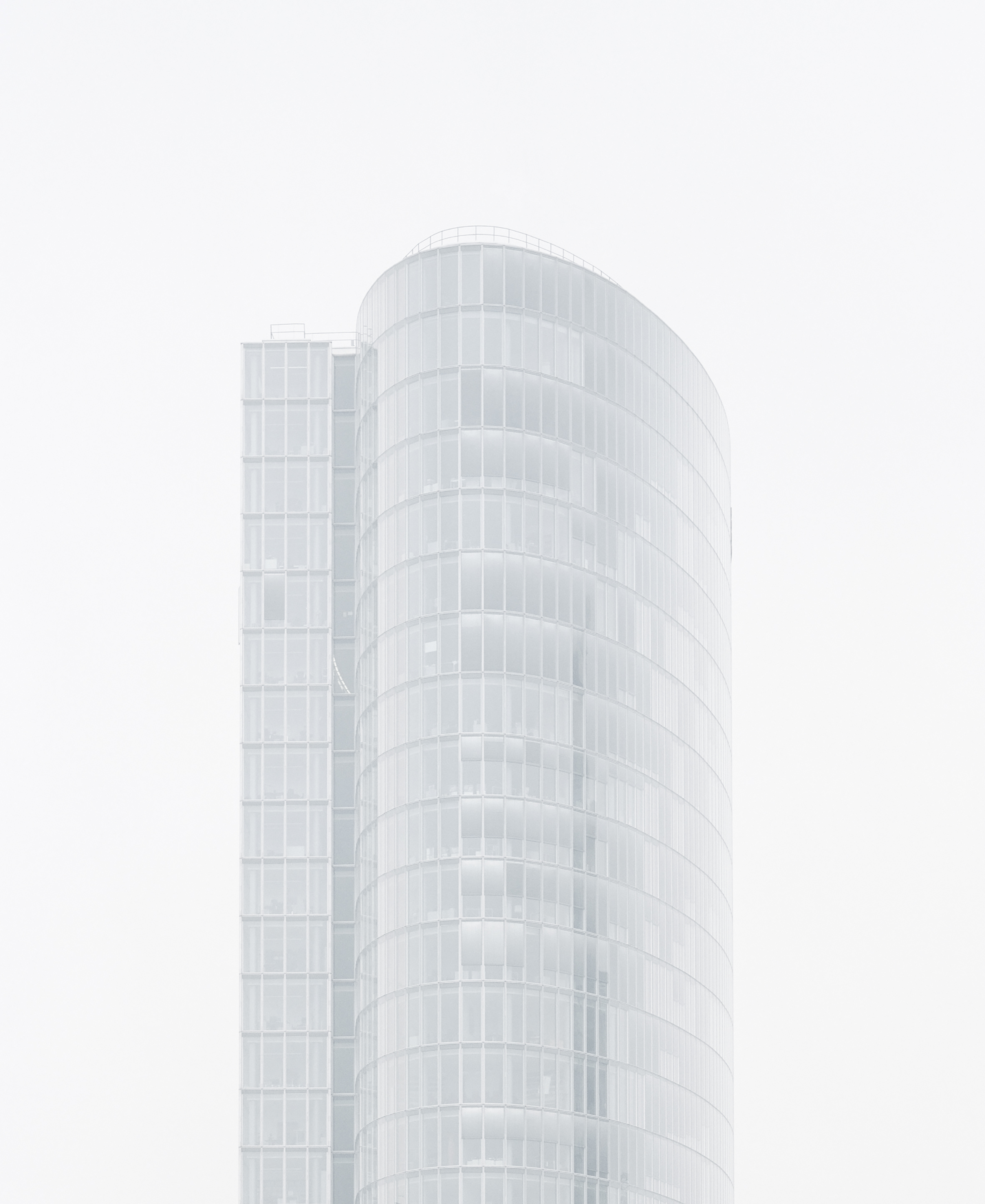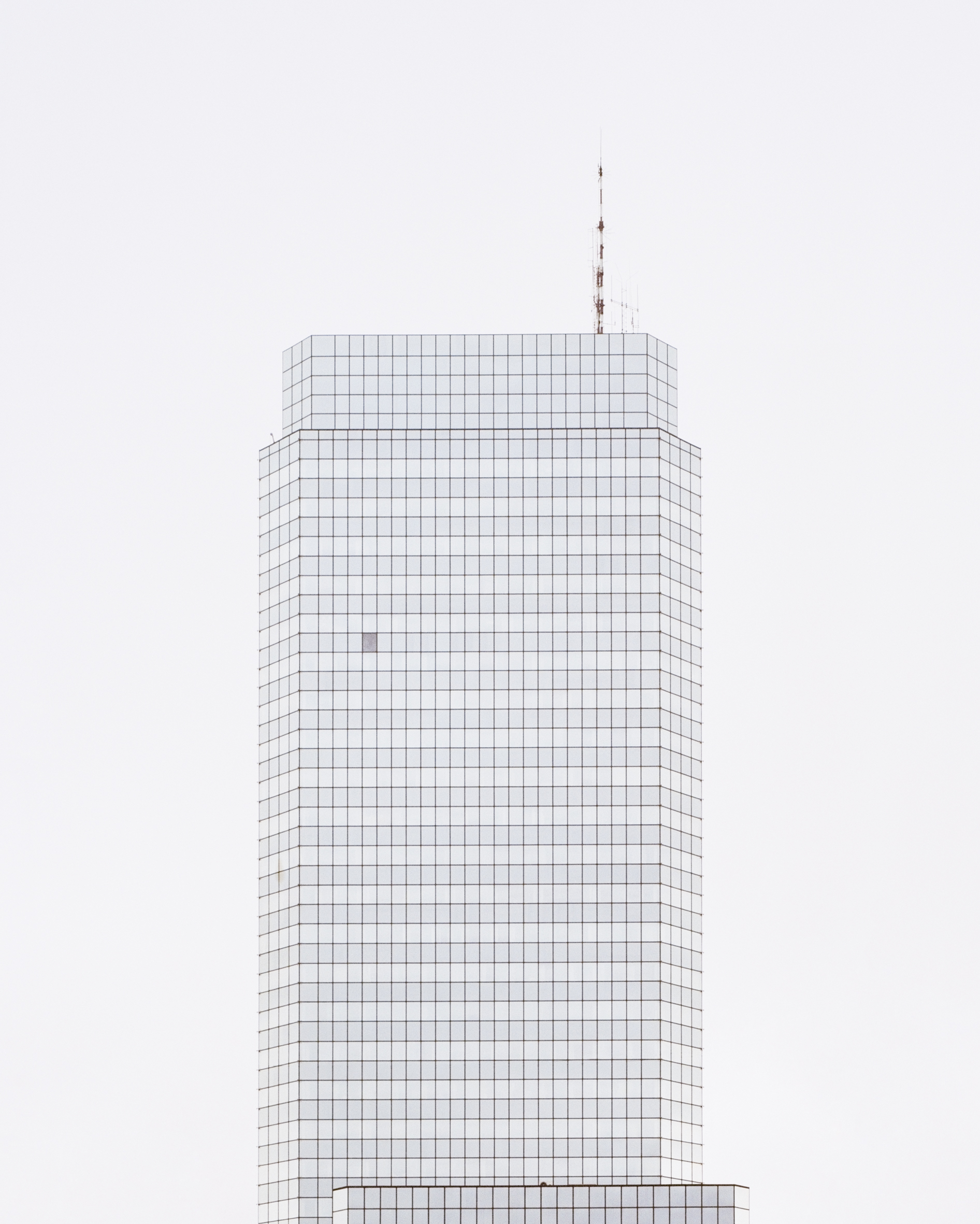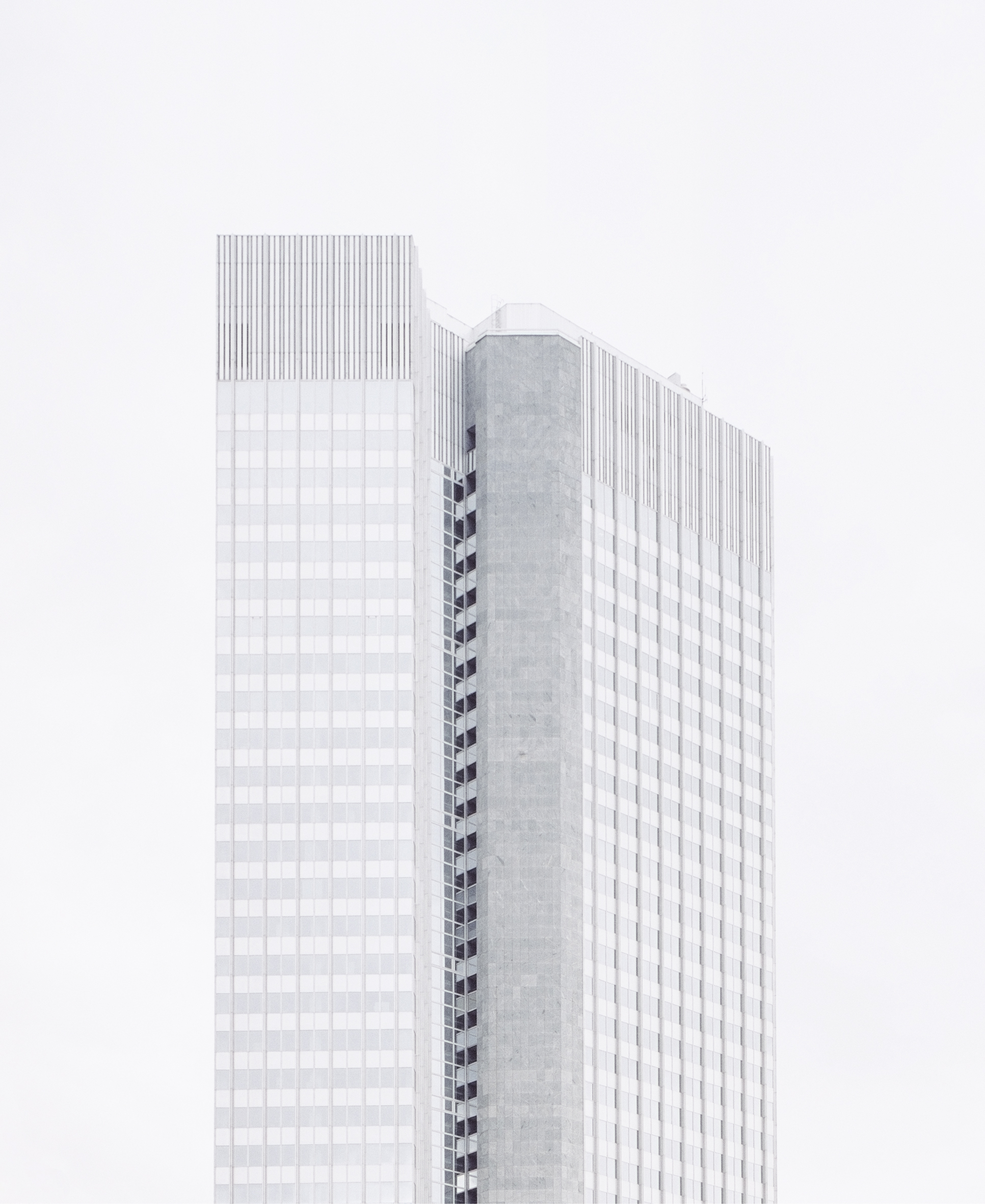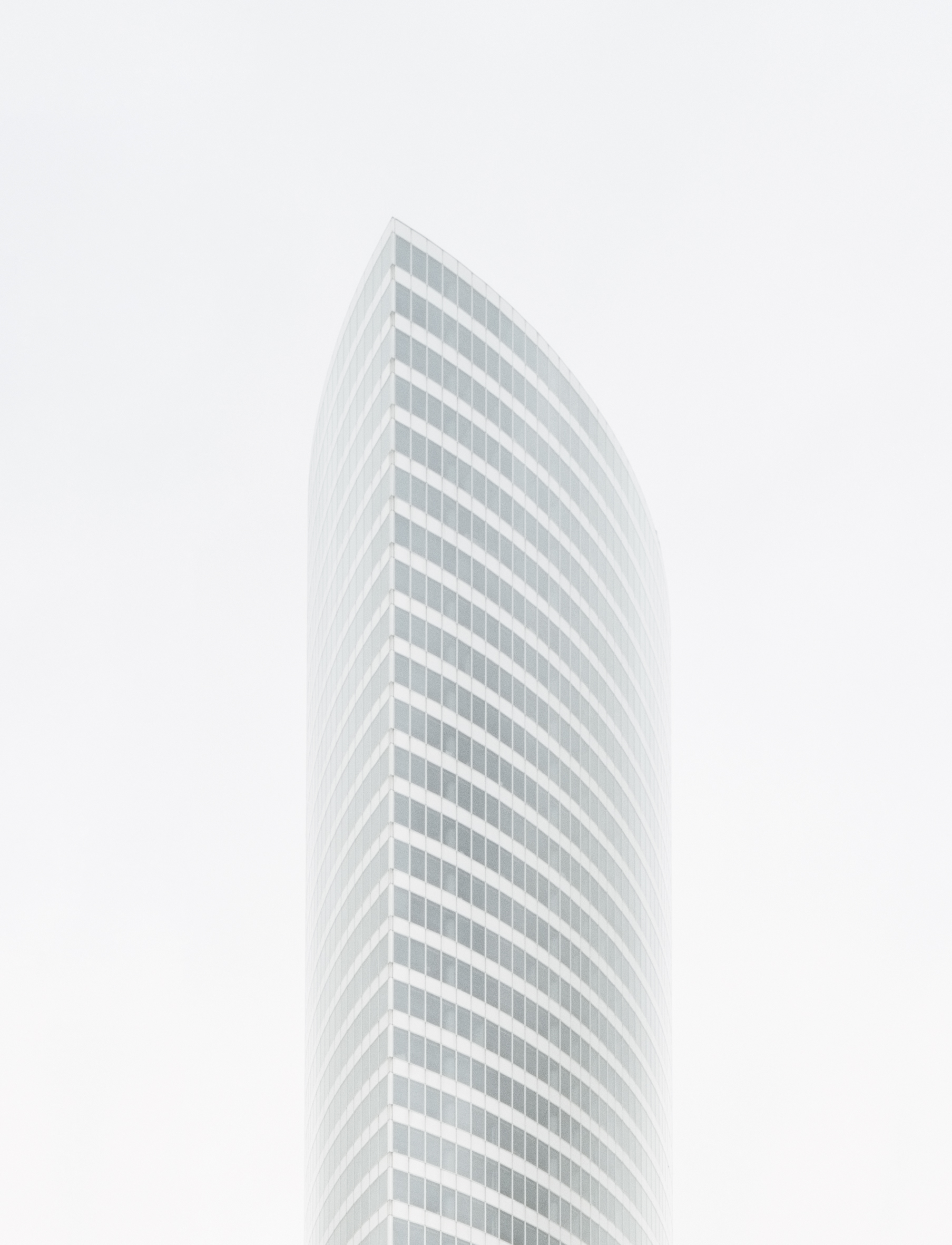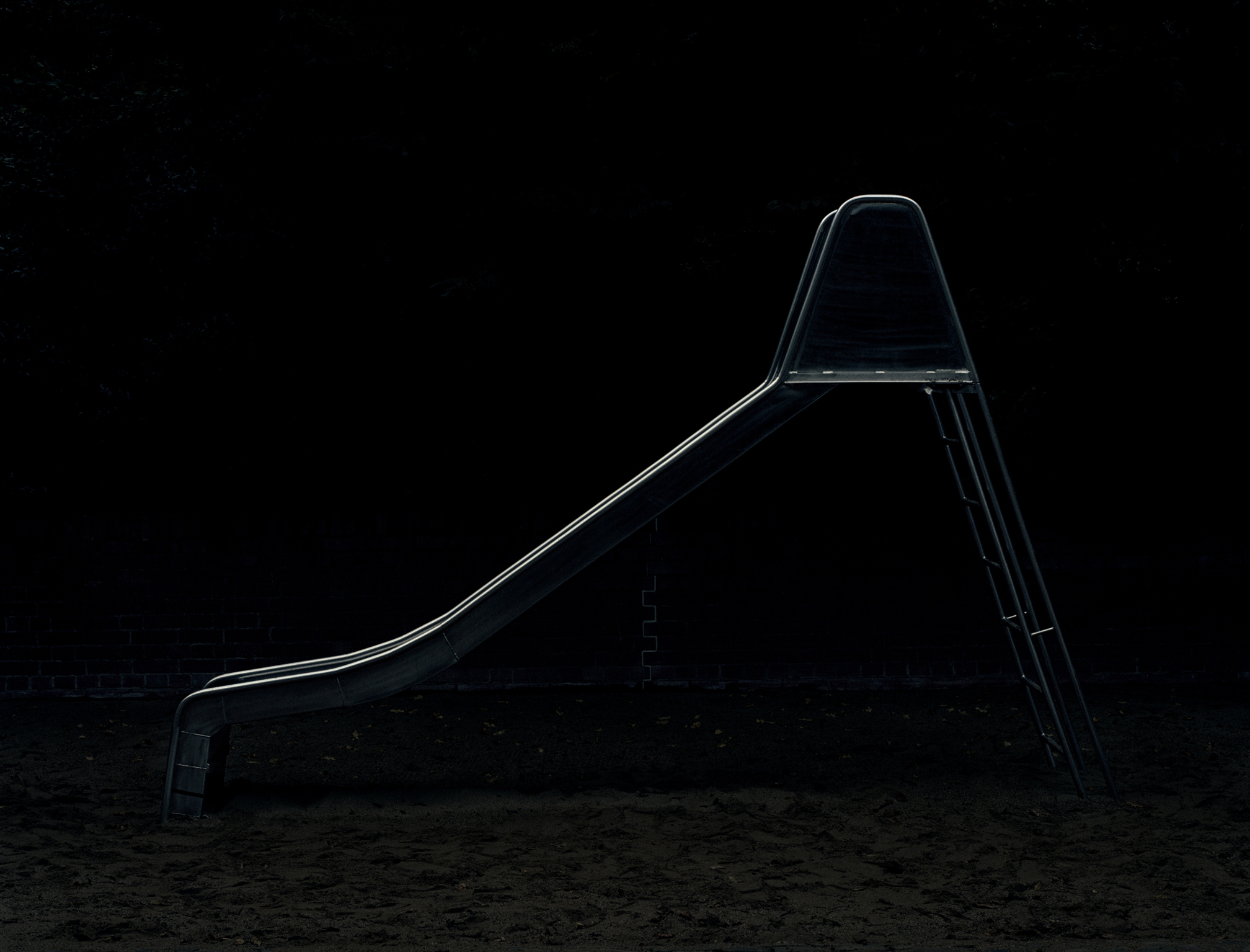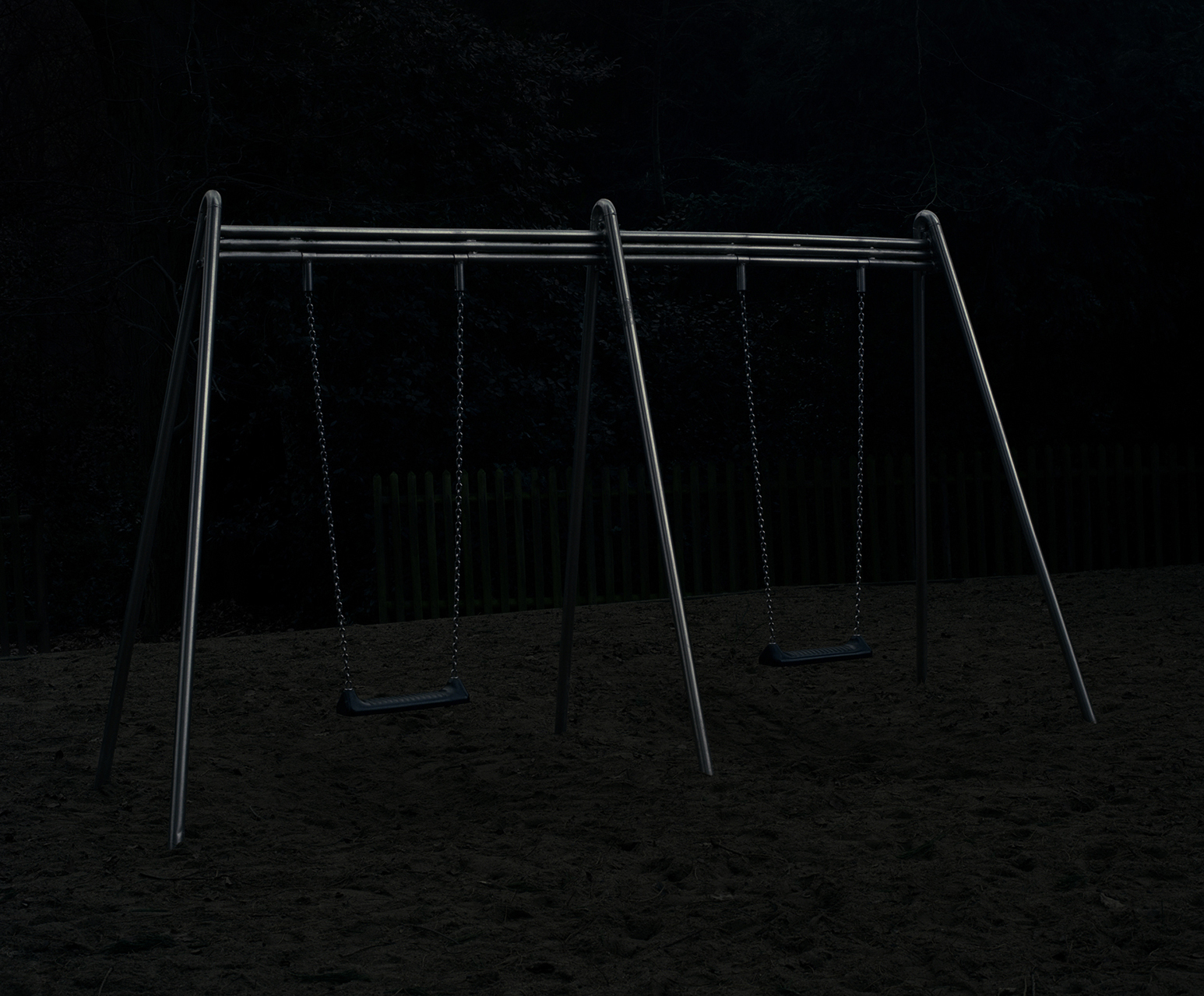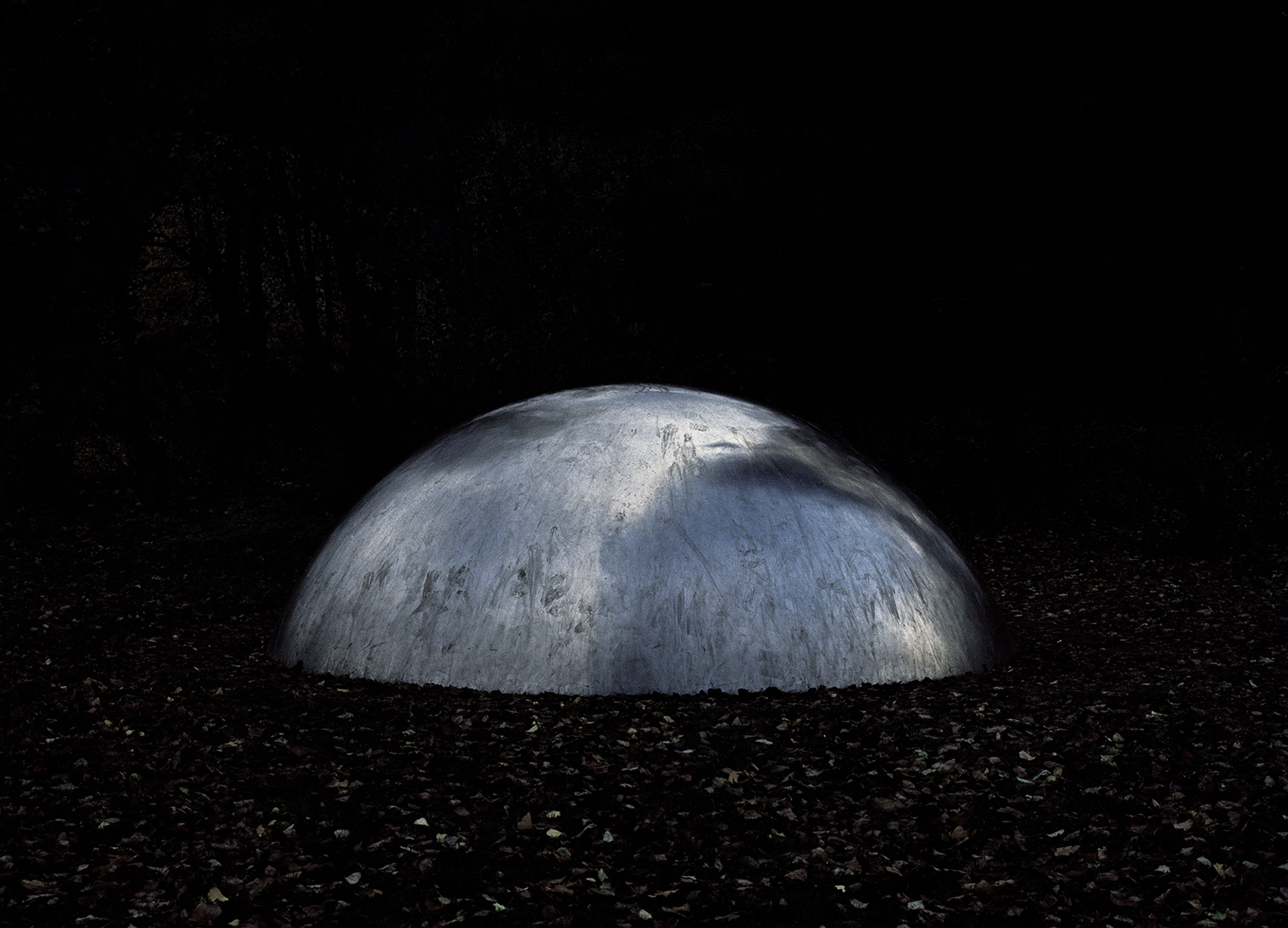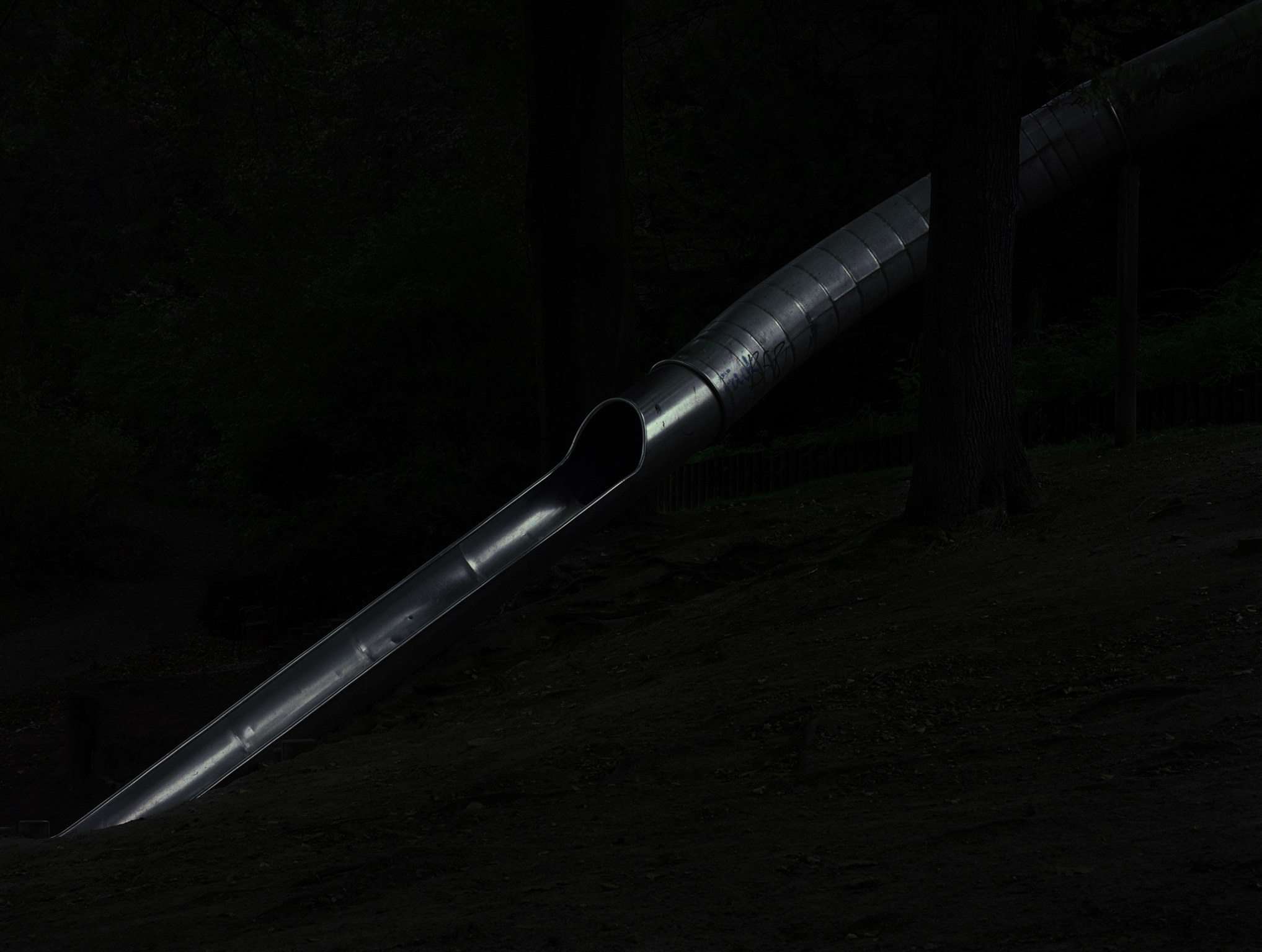Agata Madejska | online portfolio
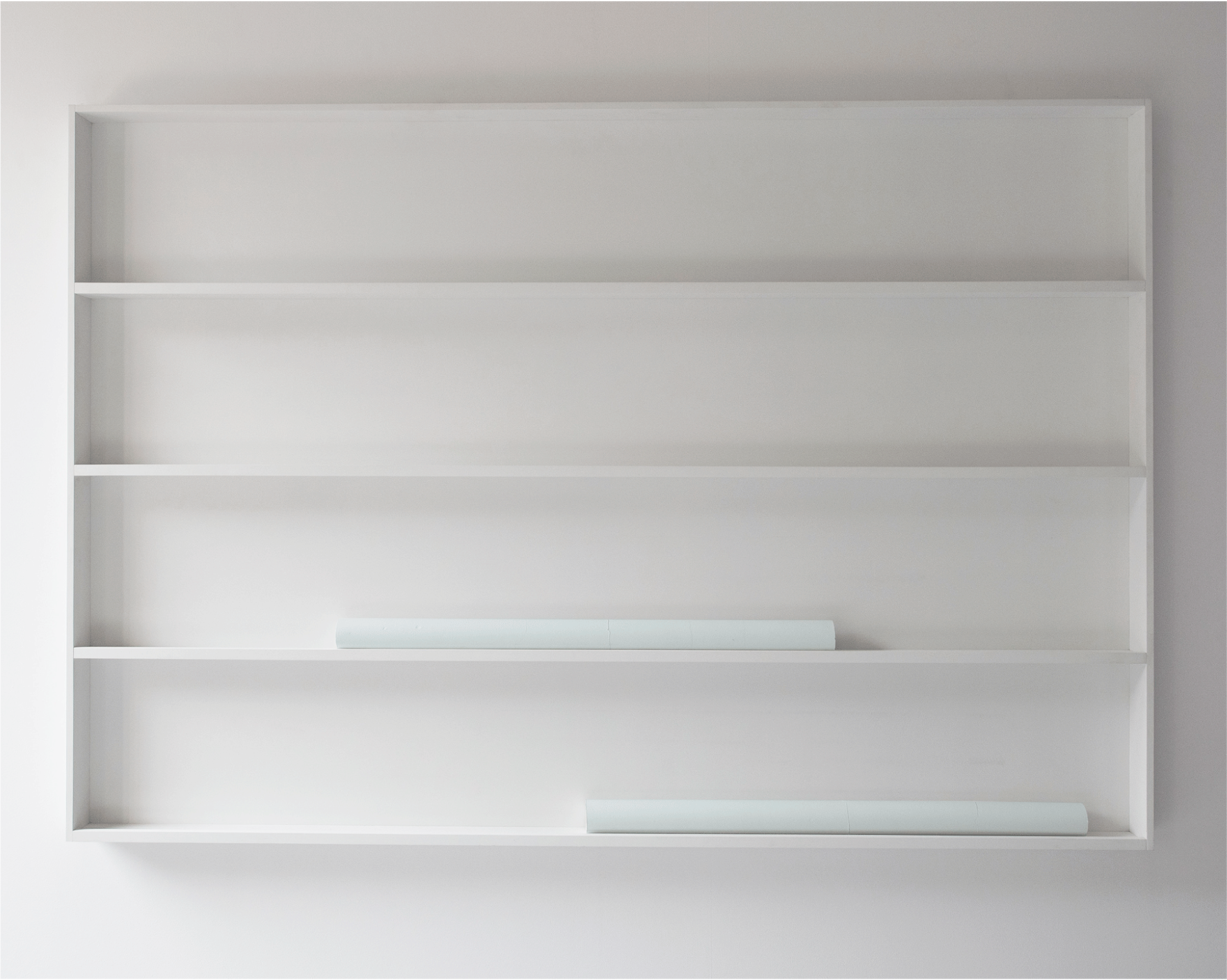
Agata Madejska, For Now, 2015
photochromic paint, concrete, 100 x 6 x 6 cm. unlimited edition each unique
Select works

Agata Madejska, Essentials, 2024
Site-specific flooring installation, dimensions variable. Leatherette, plywood, carpet underlay, steel, ring pulls, marbles, money, glitter, keys, whistles, toy cars, personal and found objects., dimensions variable
Agata Madejska uses post-(and)photographic processes, sculptural interventions, and installation, to delve into the multiple ways in which power can be manifest. With their liquidus feel, Agata’s works question the smooth façades of language, architecture, and public agreements — forms that hold associative or symbolic value. In turn, she poses deeply philosophical questions which demand viewers to think and re-think how we have come to know not only our world but ourselves in this world-space — how and why.
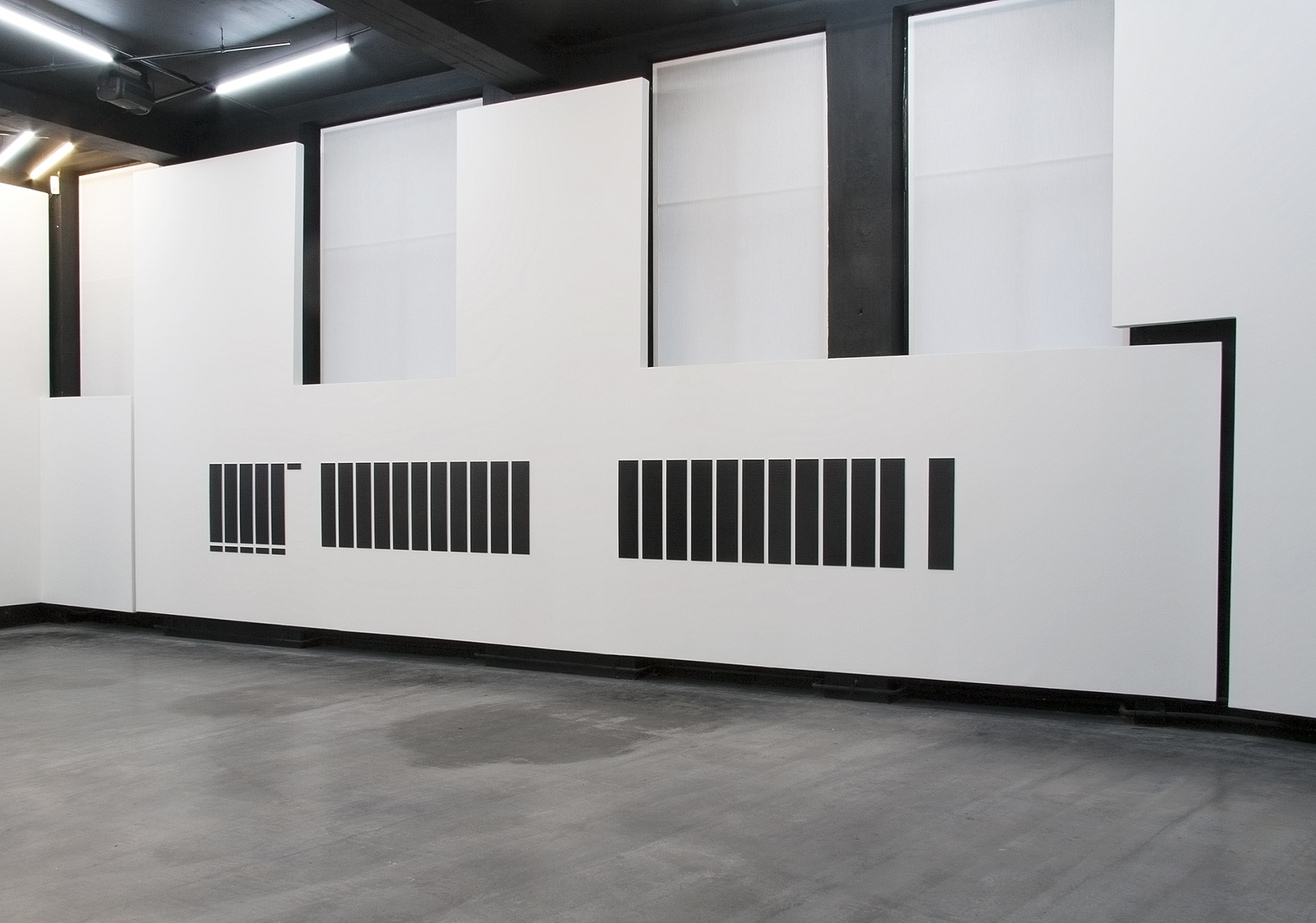
Agata Madejska, Memorial A-Z, 2013
34 panels, giclée prints on aluminium, 28 panels 16 x 67 cm and 6 panels 16 x 5
Agata Madejska, Pendulum, 2022
4K video
26:10 min
Agata Madejska, Ideogram 003, 2009
lightjet c-print, aluminium, 60 x 46 cm
Agata Madejska, Space II, 2011
digital C-type print, 55 x 50 cm
Exhibitions and series
Where Dreams of Laurels Lie
Acre residency, Berlin (Germany), 2025

Agata Madejska, Effort and Outcome (Kickstarting), 2025
steel box, acetate prints, magnets, carpet, two melamine plinths, aluminium, 128 x 32 x 66 cm
A presentation emerges from Agata Madejska’s month long residency at Acre Berlin.
Crude welded seams, luminous silver, and black. Made-to-measure steel boxes dressed in wholesale shopping bags, ready for pick up: to shift, to migrate, to obliviate. None of them alike, yet all clearly related. Caves for lost plans and unfinished labour, where exhausted performance dissolves into patterns, morphing from the cosy to propaganda at extremis.
These distinct units, charged with a combination of domestic struggle and collective ambition, come with their own visual organisation, hovering between promise and resolve. Drawing from the language of economic models – planned, systematic and developing – each unit is populated by rudimentary cartoonish images lifted from GDR posters proposing relentless efficiency. Their iconography remains: persistently calling for continuous coordinated activities of thought and labour.
Installation View
Agata Madejska, Effort and Outcome (Kickstarting), 2025
wholesale shopping bag, steel box, acetate prints, magnets, carpet, two melamine plinths, aluminium, 128 x 32 x 66 cm
Agata Madejska, Effort and Outcome (Kickstarting), detail, 2025
wholesale shopping bag, steel box, acetate prints, magnets, carpet, two melamine plinths, aluminium, 128 x 32 x 66 cm
Agata Madejska, Effort and Outcome (Evangelist), detail, 2025
wholesale shopping bag, steel box, print on foil, gaffa tape, melamine shelf, steel support, 120 x 40 x 40 cm
Madejska’s work does not anchor itself to one history, ideology, or model. Between care and production, an individual’s persistence / survival of integrity and the ambition of the state , between long worn extraction and nauseating overconsumption, the structures falter. Quietly, they point to an unresolvable tension. The frameworks we inhabit – economic, domestic, ideological – are themselves open to collapse at any moment.
Grand Habitat Horror Vacui
Flat Time House, London (UK), 2024

Agata Madejska, Essentials, 2024
site-specific flooring installation, dimensions variable. Leatherette, plywood, carpet underlay, steel, ring pulls, marbles, money, glitter, keys, whistles, toy cars, personal and found objects., dimensions variable
Agata Madejska’s artwork explores the power structures inherent in language and speech. These explorations are often expressed as sound, sculpture and installation, alongside post-photographic processes. Informed by her personal history, of growing up in and migrating from post-communist Poland, Madejska has responded to the space at Flat Time House by expanding and overlaying these narratives with an exploration of the power dynamics of the domestic and intimate.
—press release
Agata Madejska, Socle du Monde (Second), 2024
perspex box, steel, rubber hose, cable, led lights, resistors, smoke generator, glycerine, propylene glycol, batteries, 30 x 30 x 30 cm
Agata Madejska, Socle du Monde (Second), 2024
perspex box, steel, rubber hose, cable, led lights, resistors, smoke generator, glycerine, propylene glycol, batteries
Agata Madejska, Housing T (Current Affairs), 2024
organza, steel, aluminium, marbles, lice comb, tweezers, lighter, lipstick, whistles, key, ring pulls, hair pins, coins, pendant, dimensions variable
Agata Madejska, Housing T (Current Affairs), 2024
organza, steel, aluminium, marbles, lice comb, tweezers, lighter, lipstick, whistles, key, ring pulls, hair pins, coins, pendant, dimensions variable
Agata Madejska, Housing T (Current Affairs), 2024
organza, steel, aluminium, marbles, lice comb, tweezers, lighter, lipstick, whistles, key, ring pulls, hair pins, coins, pendant, dimensions variable
Agata Madejska, The End, 2023
hand woven cotton yarn
Agata Madejska, Essentials, 2024
site-specific flooring installation, dimensions variable. Leatherette, plywood, carpet underlay, steel, ring pulls, marbles, money, glitter, keys, whistles, toy cars, personal and found objects, dimensions variable
Agata Madejska, Essentials, 2024
site-specific flooring installation, dimensions variable. Leatherette, plywood, carpet underlay, steel, ring pulls, marbles, money, glitter, keys, whistles, toy cars, personal and found objects, dimensions variable
Agata Madejska, Essentials, 2024
site-specific flooring installation, dimensions variable. Leatherette, plywood, carpet underlay, steel, ring pulls, marbles, money, glitter, keys, whistles, toy cars, personal and found objects, dimensions variable
Agata Madejska, Essentials, 2024
site-specific flooring installation, dimensions variable. Leatherette, plywood, carpet underlay, steel, ring pulls, marbles, money, glitter, keys, whistles, toy cars, personal and found objects, dimensions variable
Agata Madejska, Essentials, 2024
site-specific flooring installation, dimensions variable. Leatherette, plywood, carpet underlay, steel, ring pulls, marbles, money, glitter, keys, whistles, toy cars, personal and found objects, dimensions variable
Agata Madejska, Essentials, 2024
site-specific flooring installation, dimensions variable. Leatherette, plywood, carpet underlay, steel, ring pulls, marbles, money, glitter, keys, whistles, toy cars, personal and found objects, dimensions variable
Commenting on the role of women in post-communist Poland, these works intuit personal histories about domesticity and intimacy, ownership, exile, and migration. Take, for example, her floor sculpture Essentials, 2024, which responds to Latham’s 1975–76 placement at the Scottish Development Agency, where he used aerial photography to investigate postindustrial mountains of mining rubble. Madejska’s piece scatters objects such as matchbox cars, model airplanes, keyrings, coins, and ring-pulls across the venue’s diagonally padded leatherette floor. The installation simultaneously evokes aerial maps, the quilted branding of a Chanel bag, and a children’s play mat. Thus we zoom in and out of Madejska’s performative and post-photographic propositions, walk on or around them, or kneel down for an exercise in sociopolitical excavation.
—Maximiliane Leuschner, 2024
Mistakes Were Made
2018—date

Agata Madejska, Mistakes Were Made, 2018
installation: fabric, steel, nylon fishing line, vinyl, speakers, cables, media player, dimensions variable
Agata’s ongoing series of installations Mistakes Were Made first shown in the solo exhibition Modified Limited Hangout (2018) at the Kunsthalle Wilhelmshaven (Germany) before being shown at Art Night (2019) and then in a group exhibition I dialogue, Kinch (2021) at Belmacz, London.
Composed of fabric panelling, a dark oval floor and monotone audio, the installation is somewhat adaptive to the environment (both physically and politically) in which it is shown. For example, in her Kunsthalle Wilhelmshaven exhibition, the installations fabric panels became a roof of sorts under which a viewer could stand to be enveloped by the sound being emitted from the piece; in Agata’s Art Night presentation, these panels became walls, again wrapping around a viewer to create a semi-porous architecture and sensorial atmospheric.
The atmosphere accentuated through Mistakes Were Made is a reflection of Agata’s engagement with the rhetoric and pathos of political speeches – a somewhat semi-porous architecture in itself. Situated within the installation, viewers hear a monotone voice reciting transcriptions of political speeches made between 2016 and 2022. Range from Barack Obama’s last State of the Union Address to Liz Truss’ acceptance and resignation speeches made following her record-breaking run as the British Prime Minister, each speech used in the iterations of Mistakes Were Made has been subtly re-worked by Agata to remove any reference to policy and wider political activities. Following this re-working what is left, and what viewers hear, is an almost poetic cloud of linguistic persuasion; with each speech becoming a self-affirming monologue, where the narrators reflect on their seemingly private matters, fragile future plans and ominous relationships.
(click the excerpt below to hear an example of the audio.)
Agata Madejska, Mistakes Were Made , 2018 - date
installation audio excerpt
Agata Madejska, Mistakes Were Made, 2019
installation: fabric, steel, nylon fishing line, vinyl, speakers, cables, media player, dimensions variable
Agata Madejska, Mistakes Were Made, 2019
installation: fabric, steel, nylon fishing line, vinyl, speakers, cables, media player, dimensions variable
Agata Madejska, Mistakes Were Made, 2021
installation: fabric, steel, nylon fishing line, vinyl, speakers, cables, media player, dimensions variable
Mistakes Were Made, drawings
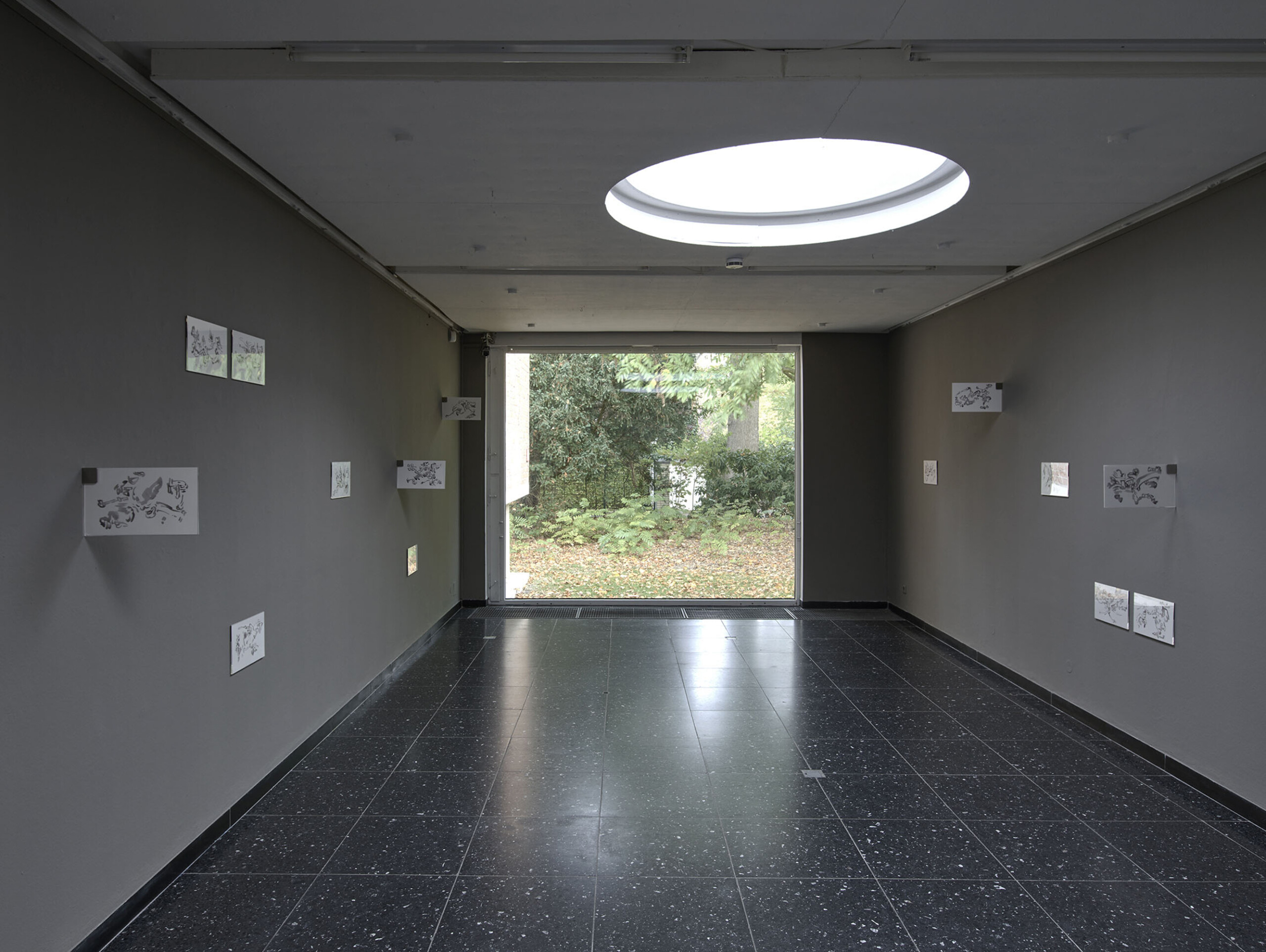
Agata Madejska, Mistake Were Made, drawings, 2018—date
light sensitive emulsion on paper. Installation view, Modified Limited Hangout, Kunsthalle Wilhelmshaven, 2018.
Building on her interest in the ways language becomes architectural, Agata’s Mistake Were Made, drawings reflect on the ways in which the political voice is nothing more than a pattern of persuasion. Speckled rouge through ghost grey, these photo-sensitive sketches translate the emotions bound up within rigid governmental speeches (those used in here installation Mistake Were Made) into two-dimensional apparitions; unmooring the signifying power of words to create profane clouds of sensation.
Agata Madejska, Mistakes Were Made [drawing, Obama series], 2018
light sensitive emulsion on paper, 20 x 30cm
Agata Madejska, Mistakes Were Made [drawing, Obama series], 2018
light sensitive emulsion on paper, 20 x 30cm
Agata Madejska, Mistakes Were Made [drawing, Obama series], 2018
light sensitive emulsion on paper, 20 x 30cm
Agata Madejska, Mistakes Were Made [drawing, Obama series], 2018
light sensitive emulsion on paper, 20 x 30cm
Agata Madejska, Mistakes Were Made [drawing, Obama series], 2018
light sensitive emulsion on paper, 20 x 30cm
Agata Madejska, Mistakes Were Made [drawing, Obama series], 2018
light sensitive emulsion on paper, 20 x 30cm
Agata Madejska, Mistakes Were Made [drawing, Obama series], 2018
light sensitive emulsion on paper, 20 x 30cm
Agata Madejska, Mistakes Were Made [drawing, Obama series], 2018
light sensitive emulsion on paper, 20 x 30cm
Agata Madejska, Mistakes Were Made [drawing, Obama series], 2018
light sensitive emulsion on paper, 20 x 30cm
No Meat Without Bones
Belmacz, London (UK), 2022
Agata Madejska, No Cars No Power, 2022
4K video/audio
4:34 min
“My work has always questioned how we grow within systems — personal, cultural, political — and how we navigate these. The project, No Meat Without Bones (exhibited at Belmacz, London 2022), has been spurred on by the observation of contemporary political narratives. Specifically, the acute radicalisation of post-truth rhetoric and how this has been enmeshed within virtual disinformation. Looking at this changing political landscape, I saw connections to earlier moments of political fluctuation; connections that made me reflect on my own relationship with ideological narratives.”
—Agata Madejska, 2022
Agata Madejska, installation view, No Meat Without Bones, Belmacz, London (UK), 2022
Agata Madejska, Echo Chamber, 2022
oxidised aluminium, steel, 150 x 30 x 150 cm
Agata Madejska, You Feed From Us Now, We Will Bill You Later, 2022
jacquard hand-weave, cotton, coloured mdf tables, 130 x 200 cm (each)
Agata Madejska, You Feed From Us Now We Will Bill You Later 2022 web, 2022
jacquard hand-weave, cotton, coloured mdf tables, 130 x 200 cm (each)
Agata Madejska, No Cars, No Power, 2022
4K video / audio, 4:34
Agata Madejska, Pendulum, 2022
4K video, 26:10 min
Agata Madejska, On & Off (Tidal Follies), 2022
jesmonite, photosensitive emulsion, wall mounting , 30 x 40 cm.
Agata Madejska, A Seat for a Young Boy, 2022
leatherette, recycled felt, stainless steel buttons and aluminium pipe, 30 x 226 x 20 cm
Agata Madejska, A Seat for a Young Boy, 2022
leatherette, recycled felt, stainless steel buttons and aluminium pipe, 30 x 226 x 20 cm
Agata Madejska, The End of It, 2022
cigarette prop, ash, aluminium ashtray, smoke generator, mineral oil, silicone, power adapter, cables, 8x8x8.5cm
“Coming from the photographic background, I see an exhibition as a series of fragments and crops, simulations and possibilities, interrelations and dependencies — images / mirages. How these fragments are shown — both formally and contextually — allows them to be in conversation with one another; or at least my aim in the exhibitions I make is for them to cross-pollinate one another and to allow us to see beyond a flat plan.”
—Agata Madejska, 2022
Modified Limited Hangout
Kunsthalle Wilhelmshaven, Germany, 2018

Agata Madejska
installation view, Modified Limited Hangout, Kunsthalle Wilhelmshaven, Germany, 2018
The year 2018 is the 100th anniversary of the sailors’ uprising that started in Wilhelmshaven and brought about the beginning of the revolution in Germany. Artists, architects and writers also participated in the process of finding a radical new beginning. With the exhibition Modified Limited Hangout, Agata examined the position of the individual in society and within political systems today. For the exhibition, she transformed the space of the Kunsthalle Wilhelmshaven into a microcosm in which site-specific installations, works on paper, photographs, light-sensitive objects and sculptures flow together into a whole.
(further information about Modified Limited Hangouts at Kunsthalle Wilhelmshaven)
Agata Madejska, Simon says, 2018
coated aluminium, dimensions variable., dimensions variable unlimited edition each unique
Agata Madejska, Simon Says II, 2018
powder coated aluminium
Agata Madejska, Loser's Loss, Winner's Gain, 2018
powder coated aluminium, 200 x 25 x 200 cm
Agata Madejska, Where should we turn to in order to arrive where exactly?, 2018
poster, aluminium, 49 × 67 cm
Agata Madejska
installation view, Modified Limited Hangout, Kunsthalle Wilhelmshaven, Germany, 2018
Agata Madejska
installation view, Modified Limited Hangout, Kunsthalle Wilhelmshaven, Germany, 2018
Agata Madejska
installation view, Modified Limited Hangout, Kunsthalle Wilhelmshaven, Germany, 2018
Agata Madejska
installation view, Modified Limited Hangout, Kunsthalle Wilhelmshaven, Germany, 2018
“Agata Madejska construes politicalness first and foremost as a dynamic of human activities. It is politicalness that organizes the space of human life. The tensions and bulges of this space, which can be different in terms of organization, but its undersoil, its building material is always the same, will continue until history ends, as Fukuyama wanted to believe until recently.”
—Jakub Śwircz, 2019. Changes in the Ocean. On the Art of Agata Madejska
RISE
2018

Agata Madejska, Rise
Lingering in photochemical smog, Agata’s series RISE, 2018, depicts phantom-like towers, be these homes or offices. Instead of rendering these man-made monoliths pure and visible Agata leans into photographic processes to give these architectural forms a sense of harrow magnitude. Rendered within clouds of grey mist, here Agata explores our dependencies upon appearance, as well as our relationships between the individual and the collective; that is, between the private and the public.
Agata Madejska, Rise 001, 2018
lightjet c-type print, perspex, alu dibond, 160 x 121 cm
Agata Madejska , Rise 002, 2018
lightjet c-type print, perspex, alu dibond, 160 x 121 cm
Agata Madejska , Rise 003, 2018
lightjet c-type print, perspex, alu dibond, 160 x 121 cm
Agata Madejska , Rise 004, 2018
lightjet c-type print, perspex, alu dibond, 160 x 121 cm
Agata Madejska , Rise 005, 2018
lightjet c-type print, perspex, alu dibond, 160 x 121 cm
Tender Offer
2017

Agata Madejska, 2017
installation view, Parrotta Contemporary Art, Stuttgart
In her series Tender Offer, 2017, Agata was drawn to the architectural, political and ideological space of the City of London. Over centuries this area of the City has been granted political and judicial privileges, a status which has been embraced by the financial and investment sector. The boundaries of this privileged financial space is marked by 11 iron-cast dragons placed on tall plinths, which Agata has photographed here as a way of questioning how power manifests physically.
As Anna Gritz writes:
“In her new series, Madejska focuses on these curious insignias of power through photographing the dragons from below using a close crop of the testicles in question. The perspective of the wandering observer is one that she has occupied herself on her many walks of the perimeters of the city, walks that she has been undertaking with increased frequency in the wake of the EU referendum, pondering the City’s stake and role in the pending divorce.”
—Anna Gritz, 2017. Ballsy
Agata Madejska, Tender Offer (Aldgate), 2017
giclée print on Canson Infinity Fibre Rag, 130 x 98.3 cm
Agata Madejska, Tender Offer (Blackfriars), 2017
giclée print on Canson Infinity Fibre Rag, 130 x 95 cm
Agata Madejska, Tender Offer (Farringdon), 2017
giclée print on Canson Infinity Fibre Rag, 130 x 111.5 cm
Agata Madejska, Tender Offer (Goswell Road), 2017
giclée print on Canson Infinity Fibre Rag, 130 x 107.6 cm
Agata Madejska, Tender Offer (Holborn), 2017
giclée print on Canson Infinity Fibre Rag, 130 x 107.6 cm
Agata Madejska, Tender Offer (London Bridge I), 2017
giclée print on Canson Infinity Fibre Rag, 130 x 112.3 cm
Agata Madejska, Tender Offer (Victoria Embankment I), 2017
giclée print on Canson Infinity Fibre Rag, 130 x 105 cm
Agata Madejska, Tender Offer (Holborn II), 2017
giclée print on Canson Infinity Fibre Rag, 130 x 99 cm
Agata Madejska, Tender Offer (Victoria Embankment II), 2017
giclée print on Canson Infinity Fibre Rag, 130 x 103 cm
Technocomplex
2017

Agata Madejska, Technocomplex
installation view, Technocomplex, Parrotta Contemporary Art, Stuttgart, 2017
‘Technocomplex’ is a term Agata has borrowed from archaeology. It refers to a collection of found objects from a specific cultural period within a certain geographical space. In her series of light-sensitive concrete sculptures, Technocomplex, 2017, Agata makes physical something of the alchemical sensations that give weight to the concrete forms shaping our movements through life. Read as deformed monuments, the series disavowals form from its context and meaning, opening up a line of thought that questions the atrophy of public trust, the relationships we have with objects as well as our surroundings.
Agata Madejska, Technocomplex 003, 2017
light sensitive coating on pewter, 54 x 65 x 1.3 cm
Agata Madejska, Technocomplex 005, 2017
light sensitive coating on pewter, 54 x 65 x 1.3 cm
Agata Madejska, Technocomplex 004, 2017
light sensitive coating on pewter, 54 x 65 x 1.3 cm
Agata Madejska, Technocomplex 006, 2017
light sensitive coating on pewter, 54 x 65 x 1.3 cm
Agata Madejska, Technocomplex 002, 2017
light sensitive coating on pewter, 57 x 68 x 1 cm
Agata Madejska, Technocomplex 006, 2017
light sensitive coating on pewter, 54 x 65 x 1.3 cm
Agata Madejska, Technocomplex 004, 2017
light sensitive coating on pewter, 54 x 65 x 1.3 cm
Agata Madejska, Technocomplex 001, 2017
light sensitive coating on pewter, 54 x 65 x 1.3 cm
DeBeers

Agata Madejska, DeBeers I, 2017
giclée print on Hahnemühle Photo Rag Ultra Smooth, 150 x 260 cm
Agata Madejska, The Economist [detail], 2014
giclée print on Hahnemühle Photo Rag Ultra Smooth, 150 × 210 cm
Agata Madejska, DeBeers I [detail], 2017
giclée print on Hahnemühle Photo Rag Ultra Smooth, 150 × 260 cm
Agata Madejska, London Stock Exchange I [detail], 2017
giclée print on Hahnemühle Photo Rag Ultra Smooth, 150 × 260 cm
Near Here, Not Here, Come Here, Over Here, Right Here, Here We Are
2017
Agata Madejska, Near Here, Not Here, Come Here, Over Here, Right Here, Here We Are, 2017
light sensitive fabric, grey cotton and polyester fabric, steel rods. , 360 × 300 cm each. Installation view, Place. Tłomackie 3/5, Jewish Historical Institute, Warsaw, 2017
Agata Madejska, Near Here, Not Here, Come Here, Over Here, Right Here, Here We Are, 2017
light sensitive fabric, grey cotton and polyester fabric, steel rods, 360 × 300 cm each. Installation view, Place. Tłomackie 3/5, Jewish Historical Institute, Warsaw, 2017
Agata Madejska, Every City Has Its Echo, 2017
giclée print on aluminium, 100 x 130 cm
Agata Madejska, 18 Minutes, 2017
aluminium, 200 x 125 cm
Agata Madejska, Near Here, Not Here, Come Here, Over Here, Right Here, Here We Are, 2017
light sensitive fabric, steel rods, dimensions variable site specific
Folly
2014

Agata Madejska, 2014
installation view, Form Norm Folly, Krefelder Kunstverein
Agata sees objects as a space for the projection of ideas. Her series Folly, 2014, consists of concrete and plaster cast forms each coated in photochemical pigment. As light conditions change within the place of their installation, the colour of these forms shifts to directly respond to both the architecture of the setting as well as the presence of viewers. In this way, the works made solid something of the hidden atmospherics of our surroundings; the social and political ideologies that suffuse everyday life.
Agata Madejska, For Now (Folly), 2015
concrete, photochromic paint, 100 x 6 x 6 cm
Agata Madejska, Retouch I-60x60, 2016
concrete, iron, 40 x 40 x 7 cm
Agata Madejska, Retouch I-60x60, 2016
concrete, iron, 40 × 40 × 7 cm
Agata Madejska, From Now On (Folly), 2014
photosensitive emulsion, jesmonite, 160 x 250 cm
Agata Madejska, Seesaw (Folly), 2016
stainless steel, 120 x 12.5 x 0.3 cm
Factum
2014

Agata Madejska, Factum, 2014
UV-print on perspex, paper, powder-coated steel frame, installation view
“After looking at the abstract composi tion on clear acrylic for some time I realise I am viewing the fallout from an explosion. In a second of the tables I can now see Lenin upside-down in duplicate and soldiers off to battle in a third. But the subject of Madejaka’s Factum are not these historical figures and events but rather the skewed attempt to represent this history in physical space. The original reliefs from the Soviet War Memorial in Berlin’s Treptower Park were produced twice, accompanied by German and Russian texts. With photographic reproductions of both iterations, the slight differences between the two versions are overlaid in green and rod. Whilst the acrylic reflects the work’s physical surroundings, Madejska simultaneously uses a symbolic structure of public space as a mirror for contemporary society.”
—Gareth Bell-Jones, 2015. PostcART
Agata Madejska, Factum, 2014
UV-print on perspex, paper, powder-coated steel frame, 50 x 100 x 60 cm
Agata Madejska, Factum, 2014
UV-print on perspex, paper, powder-coated steel frame, 50 x 100 x 60 cm
Agata Madejska, Factum, 2014
UV-print on perspex, paper, powder-coated steel frame, 50 x 100 x 60 cm
Agata Madejska, Factum, 2014
UV-print on perspex, paper, powder-coated steel frame, 50 x 100 x 60 cm
The Order of Solids
2010-2013

Agata Madejska, 81-86, 2010
digital C-type print on Forex and waxed black MDF, 119 x 162.7 cm
Isolated objects, monuments, sculptures and fountains, demarcated from their environment through careful monochromatic saturation. In her series of almost black and white photographic prints, The Order of Solids, begun in 2010, Agata builds on her interest in the function of objects in public space; how a monument embodies a narrow cultural context and specific point of view now manifest in the physical world. The series demonstrates Agata’s interest in how sculptural forms and photography can intersect. Specifically, how through photography a static object, and cultural ideal, can be expanded before our eyes.
Temporary or Permanent
2011
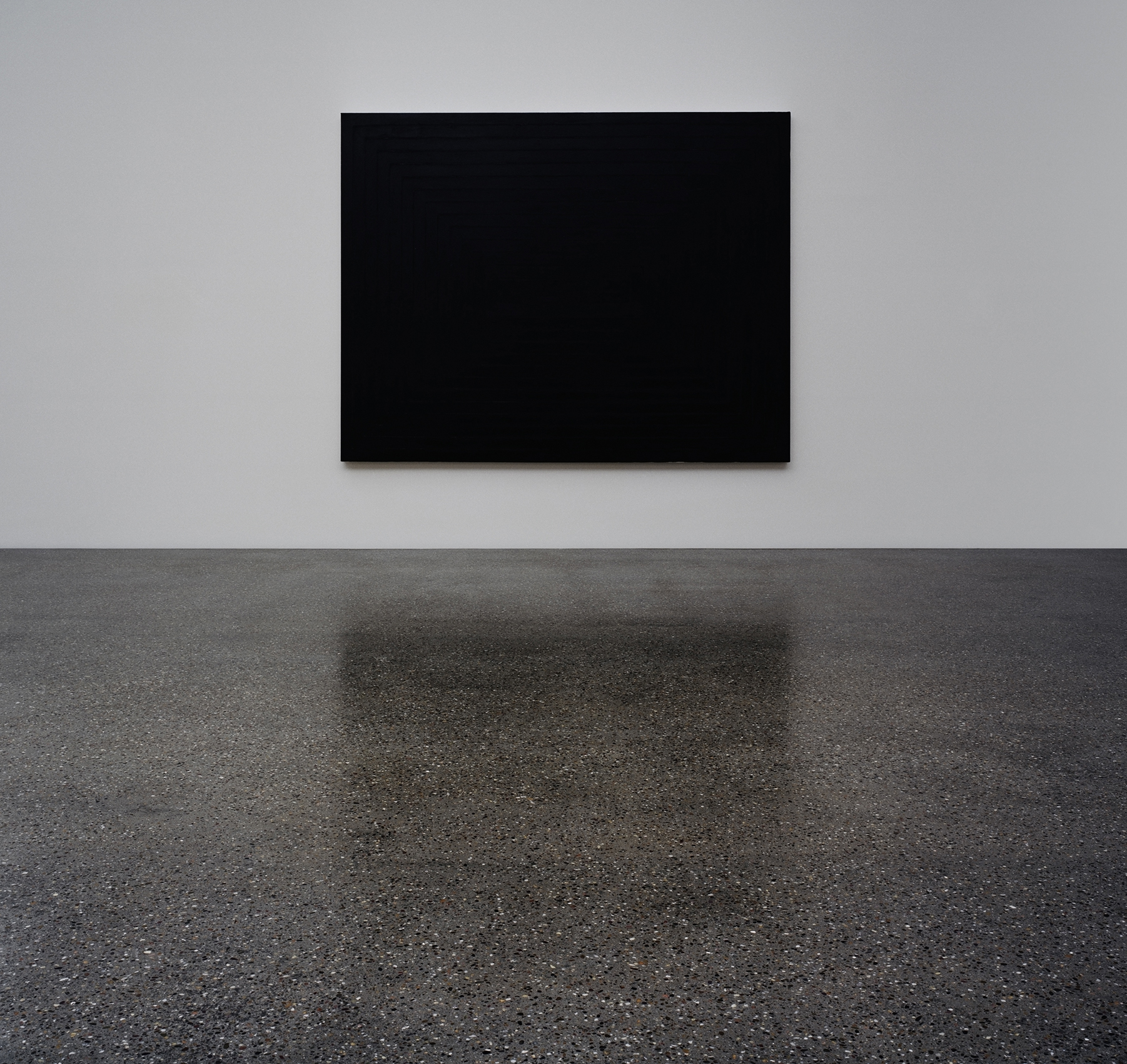
Agata Madejska, Image III, 2011
part of the photo essay Temporary or Permanent, published in: Museum Folkwang. Die Architektur, Edition Folkwang, Steidl, Göttingen, 2012
Temporary or Permanent, 2011, is composed of a number of quiet photographers Agata took of the Museum Folkwang’s collection and gallery spaces bare and empty of visitors. Compiled in the 2012 photo essay published by the museum, the images imbue Museum Folkwang’s space and canonical artworks with a sense of suspense. In this way, these images rise questions about how histories are recorded and communicated to a public, asking us to see beyond the picture and frame.
Agata Madejska, Image II, 2011
part of the photo essay Temporary or Permanent, published in: Museum Folkwang. Die Architektur, Edition Folkwang, Steidl, Göttingen, 2012
Agata Madejska, Image I, 2011
part of the photo essay Temporary or Permanent, published in: Museum Folkwang. Die Architektur, Edition Folkwang, Steidl, Göttingen, 2012.
Agata Madejska, Wall II, 2011
part of the photo essay Temporary or Permanent, published in: Museum Folkwang. Die Architektur, Edition Folkwang, Steidl, Göttingen, 2012.
Agata Madejska, Entrance, 2011
part of the photo essay Temporary or Permanent, published in: Museum Folkwang. Die Architektur, Edition Folkwang, Steidl, Göttingen, 2012
Ideogram
2008-2009

Agata Madejska
installation view, Parrotta Contemporary Art, Stuttgart, 2013
Urban icons rising high into white space. The photos that compose Agata’s series Ideogram (2008–2009) each depict a solitary high-rise building prominent in the city of their construction. Isolated from the atmospheres of their surrounding city space, these building portraits not only loom monumental but coolly hang as somewhat ambiguous bodies; icons of no-where or the spectors of capitalist (re)production.
Agata Madejska, Ideogram 004, 2011
lightjet c-type print on aluminium, 60 x 46 cm
Agata Madejska, Ideogram 008, 2009
lightjet C-print, aluminium , 60 x 49 cm
Agata Madejska, Ideogram 003, 2009
lightjet c-print, aluminium, 60 x 46 cm
Agata Madejska, Ideogram 007, 2008
lightjet C-print, aluminium, 60 x 46 cm
Agata Madejska, Ideogram 002, 2009
lightjet C-print, aluminium, 60 x 46 cm
Agata Madejska, Ideogram 005, 2009
lightjet C-print, aluminium, 60 x 46 cm
Agata Madejska, Ideogram 001, 2008
lightjet C-print, aluminium, 60 x 46 cm
KOSMOS
2006

Agata Madejska
installation view, Gute Aussichten: Junge Deutsche Fotografie, Haus der Fotografie, Deichtorhallen, Hamburg, 2008.
“Photographs by Agata Madejska, which belong to the ‘kosmos’ (‘Universe’) series depict the unique moment when our eyes make out subtly illuminated shapes amid the dark abyss of oblivion and neglect. At first these shapes are abstract; they resemble nothing meaningful. But as time passes, they form into numerous pictures – shapes of swings, slides, and playgrounds – familiar motifs of childhood memories. The artist draws from widely familiar concepts embedded within historical, social and cultural memory. She relies upon the associations these concepts evoke, thereby triggering our memory, forgetfulness, and things that are conscious and subconscious within us.”
—Dobromiła Błaszczyk, 2015. Everything Happened In The Distance…
Agata Madejska, Kosmos #2, 2006
lightjet C-print, dibond aluminium, tray frame, 41.8 x 51.1 cm
Agata Madejska, Kosmos # 4, 2006
lightjet C-print, dibond aluminium, tray frame, 41.8 x 54.3 cm
Agata Madejska, Kosmos # 3, 2006
lightjet C-print, dibond aluminium, tray frame , 41.8 x 41.8 cm
Agata Madejska, Kosmos # 6, 2006
lightjet C-print, dibond aluminium, tray frame, 41.8 x 50.3 cm
Agata Madejska, Kosmos # 7, 2006
lightjet C-print, dibond aluminium, tray frame, 41.8 x 50.3 cm
Agata Madejska, Kosmos # 1, 2006
lightjet C-print, dibond aluminium, tray frame, 41.8 x 50.3 cm
Publications
Technocomplex
Parrotta Contemporary Art, 2017
Agata Madejska, 2017
paperback publication, 36 pages
Agata Madejska, 2017
paperback publication, 36 pages
Agata Madejska, 2017
paperback publication, 36 pages
Agata Madejska, 2017
paperback publication, 36 pages
Agata Madejska, 2017
paperback publication, 36 pages
portfolio N°9
Kunstraum Seilerstraße, Hamburg, 2016
madejska, agata. agata madejska.
Distanz Publishing, 2013
artist biography

Agata Madejska, The dream was to travel, 2021
hand poured candle
Education. Agata graduated from Folkwang University of the Arts, Essen in 2007 and the Royal College of Art, London in 2010.
Selected exhibitions. Total Theater ESP, Belmacz, London UK (2024); Grand Habitat Horror Vacui, Flat Time House, London (2024); No Meat Without Bones, Belmacz, London (2022); I Dialogue, Kinch, Belmacz, London (2021); Mother Mercury, Art Night, London (2019); Modified Limited Hangout, Kunsthalle Wilhelmshaven (2018); Technocomplex, Parrotta Contemporary Art, Stuttgart (2017); Place. Tlomackie 3/5, Jewish Historical Institute, Warsaw (2017); Entoptic Screening, Galeria ASP, Warsaw (2016); Johanna Jaeger & Agata Madejska, Kunstraum griffelkunst, Hamburg (2016); Kingly Things, Chandelier Projects, London (2015); Conflict, Time, Photography, Museum Folkwang, Essen, Albertinum Dresden (2015) and Tate Modern, London (2014); Form Norm Folly, Kunstverein Krefeld, Krefeld (2014); Twisted Entities, Museum Morsbroich, Leverkusen (2013); Man and his Objects, Museum Folkwang, Essen (2012); Made in Germany Zwei, kestnergesellschaft, Hannover (2012); Menos tiempo que lugar, Palacio National de las Artes, Buenos Aires (2010); reGeneration 2, Musée de l’Elysée, Lausanne (2010) and Aperture, New York (2011); Bloomberg New Contemporaries, ICA, London (2010); Menos tiempo que lugar, Centro de Arte Contemporaneo, Quito, Ecuador (2009); Agata Madejska, allerArt, Bludenz (2009); gute aussichten 2007/2008, Goethe Institut, Washington D.C., USA (2008); XIII European Photography Prize Riccardo Pezza, Triennale di Milano, Italy (2008); The poetry of the functional, SMWK, Dresden, Germany (2007); Kodak Nachwuchs Förderpreis, Haus der Wirtschaft, Stuttgart, Germany (2007); Agata Madejska, Projektraum Mikro, Düsseldorf, Germany (2006); Menos tiempo que lugar, Centro de Arte Contemporaneo, Quito, Ecuador (2009); Agata Madejska, allerArt, Bludenz (2009); gute aussichten 2007/2008, Goethe Institut, Washington D.C., USA (2008); XIII European Photography Prize Riccardo Pezza, Triennale di Milano, Italy (2008); The poetry of the functional, SMWK, Dresden, Germany (2007); Kodak Nachwuchs Förderpreis, Haus der Wirtschaft, Stuttgart, Germany (2007); Agata Madejska, Projektraum Mikro, Düsseldorf, Germany (2006).
Awards. Agata was awarded the renowned Contemporary German Photography award by the Alfried Krupp von Bohlen and Halbach Foundation in 2008 and the Emerging Artist Award of the State of North Rhine-Westphalia in 2011. She has also been the recipient of public funding awards in both the UK and Germany.
Agata lives and works in London.
Enquiries
Please contact us directly gallery@belmacz.com with any enquiries. Please note that all works are subject to prior sales and tax where applicable.


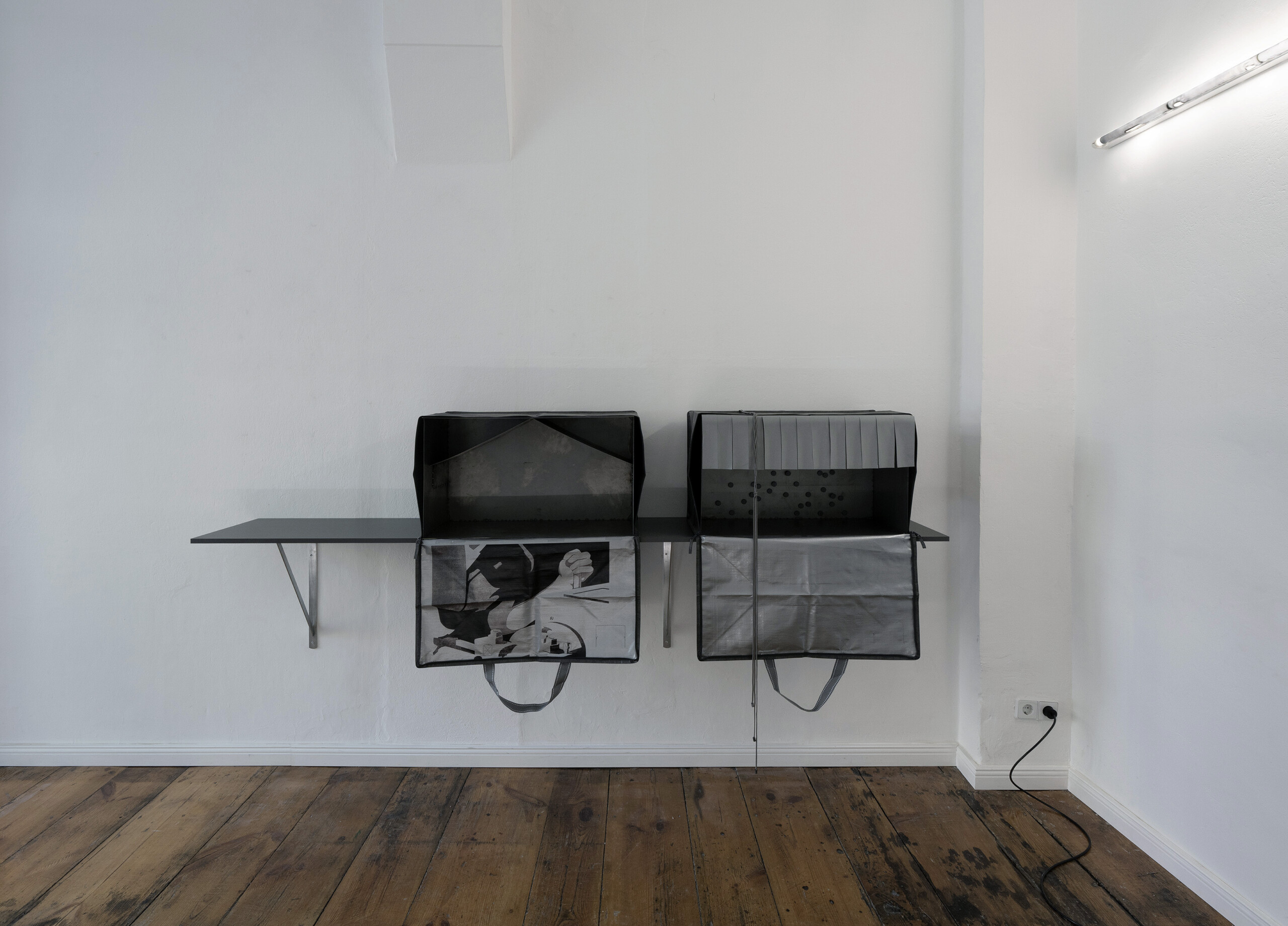

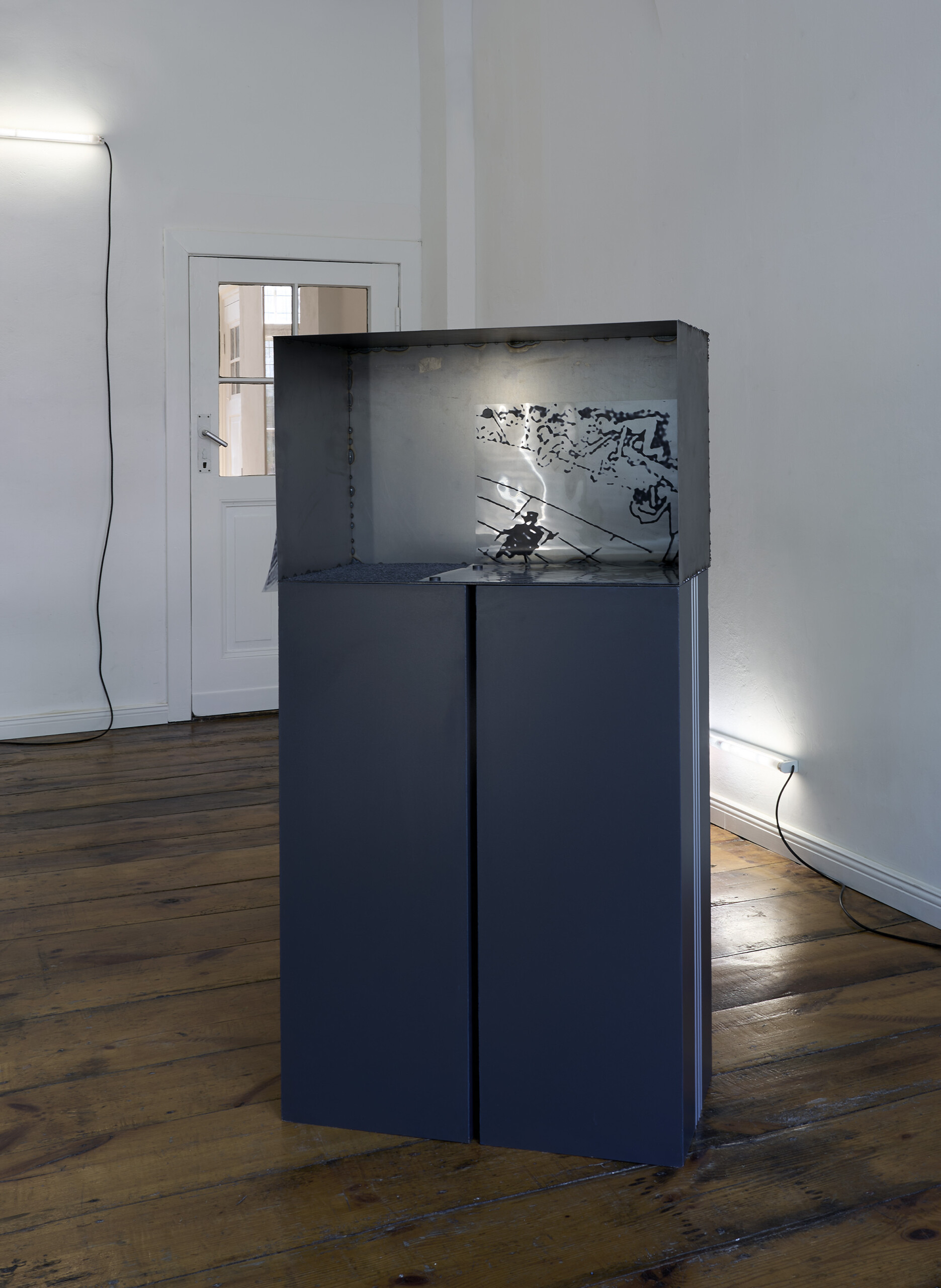





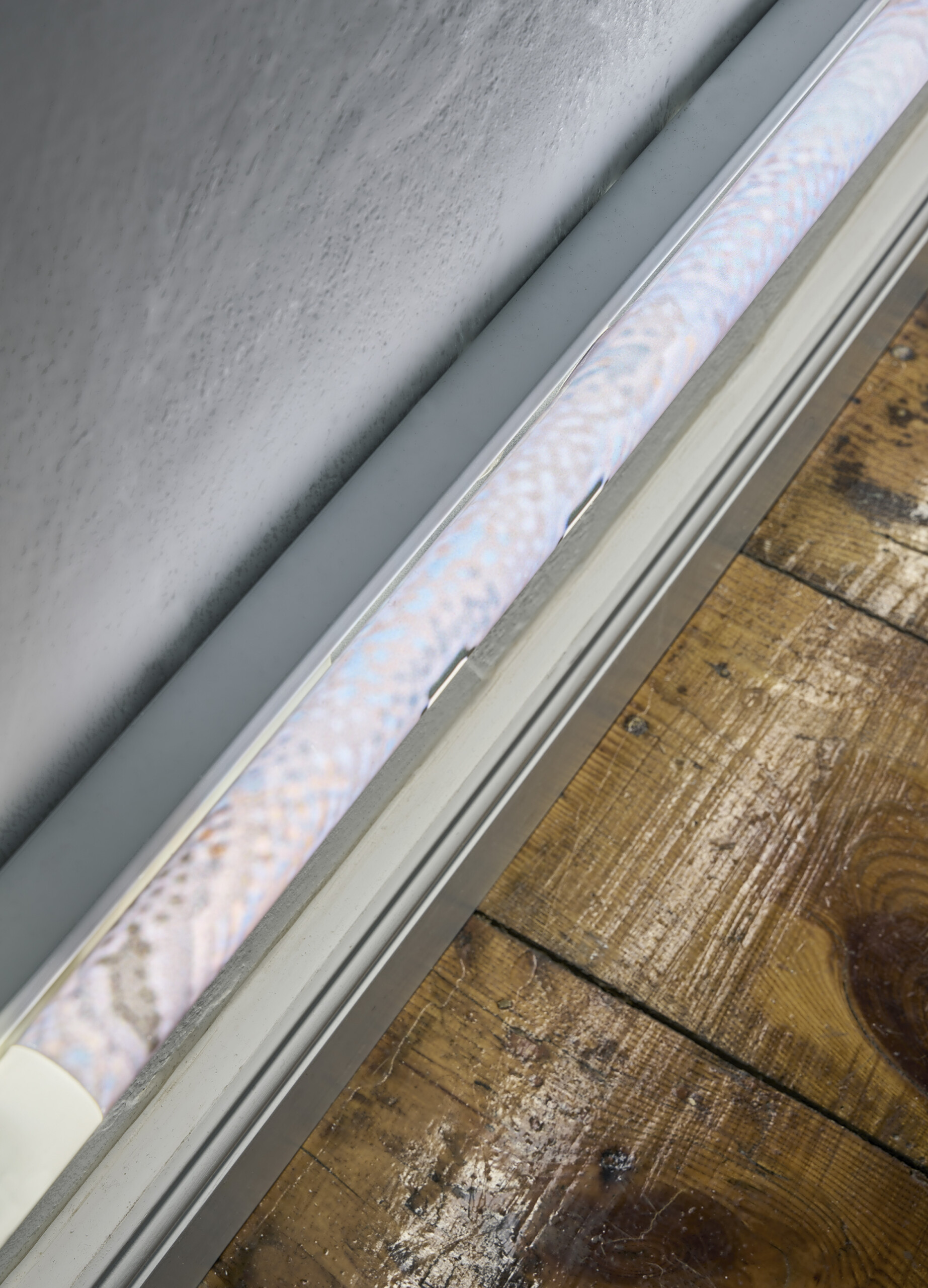


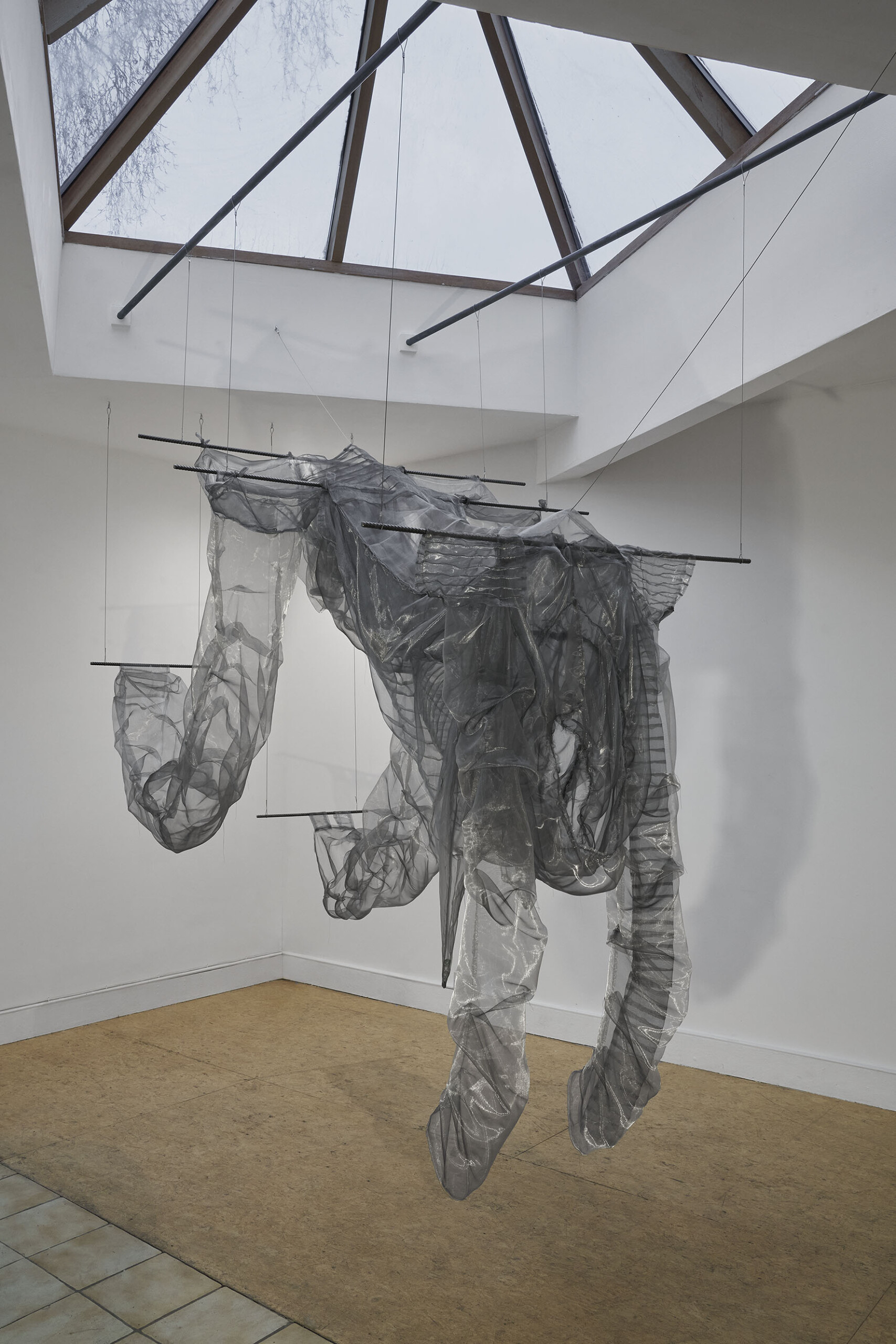
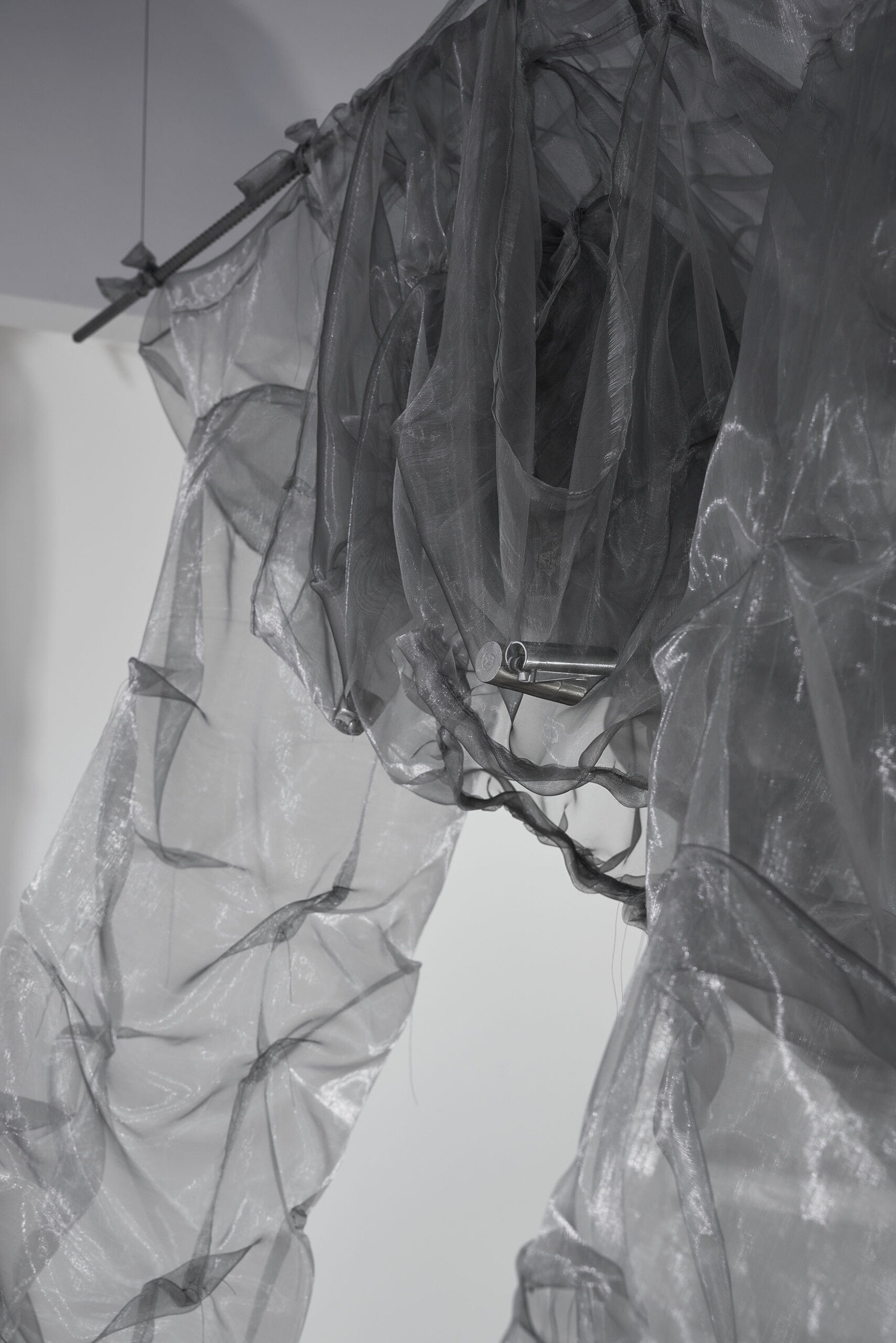



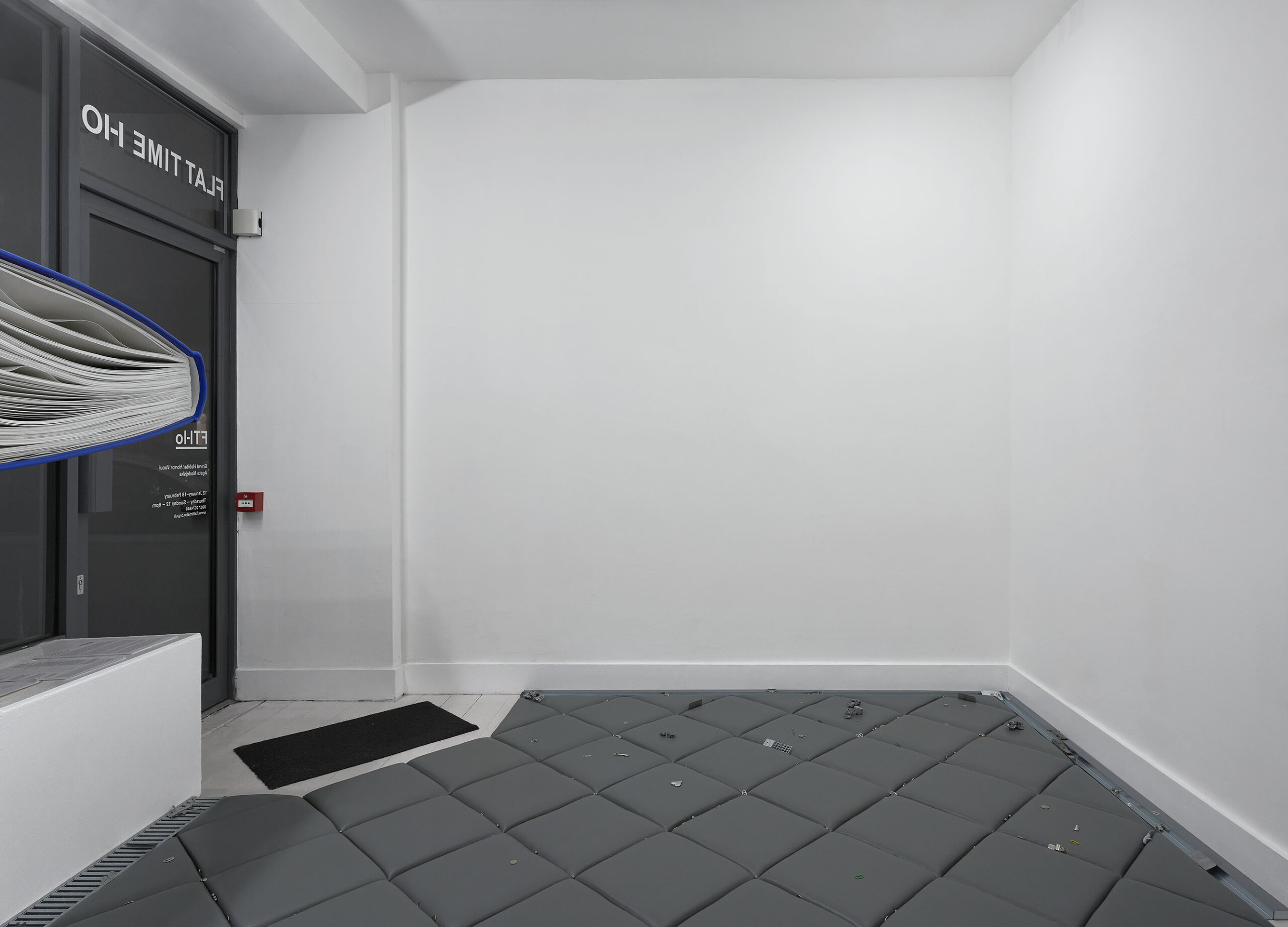
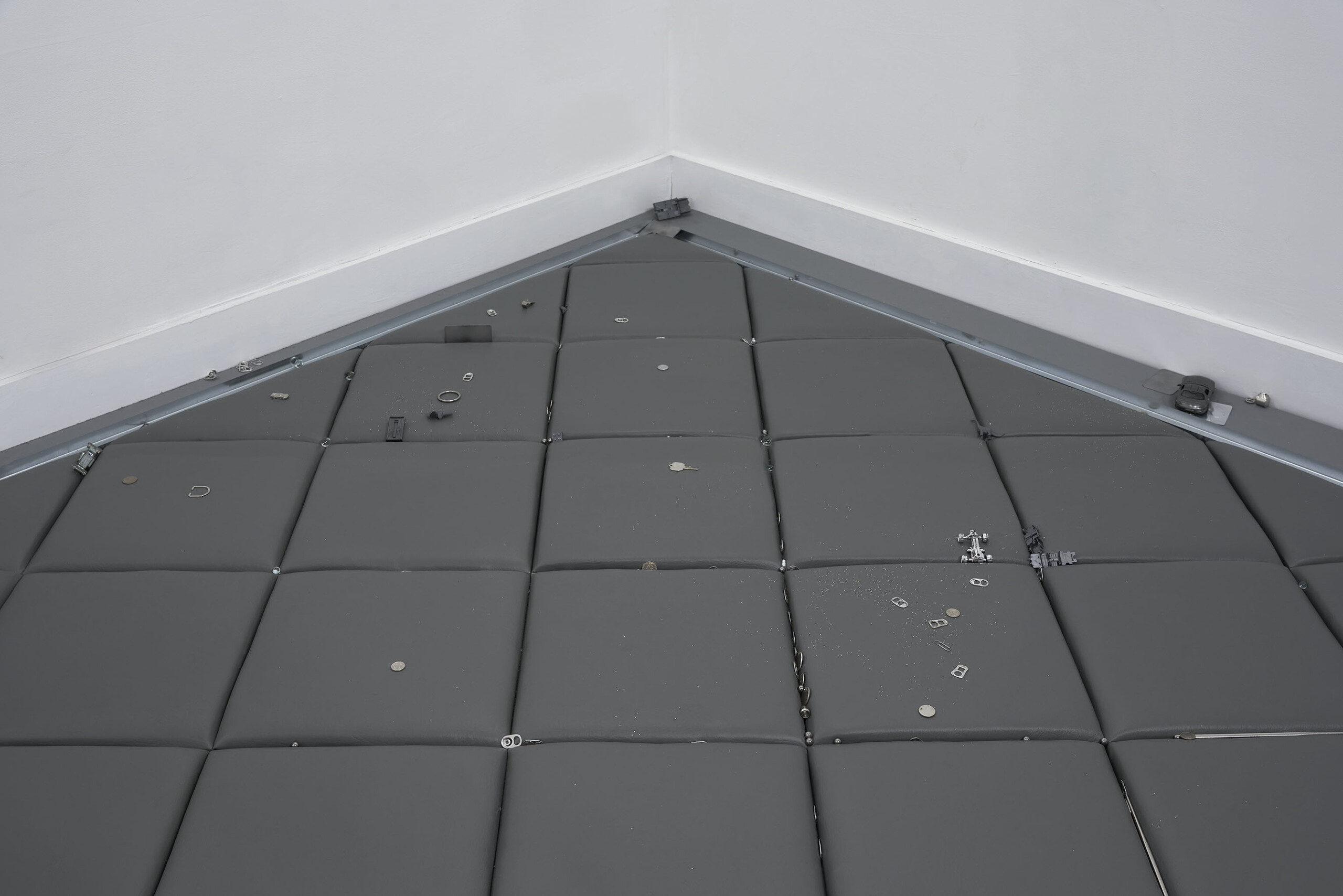

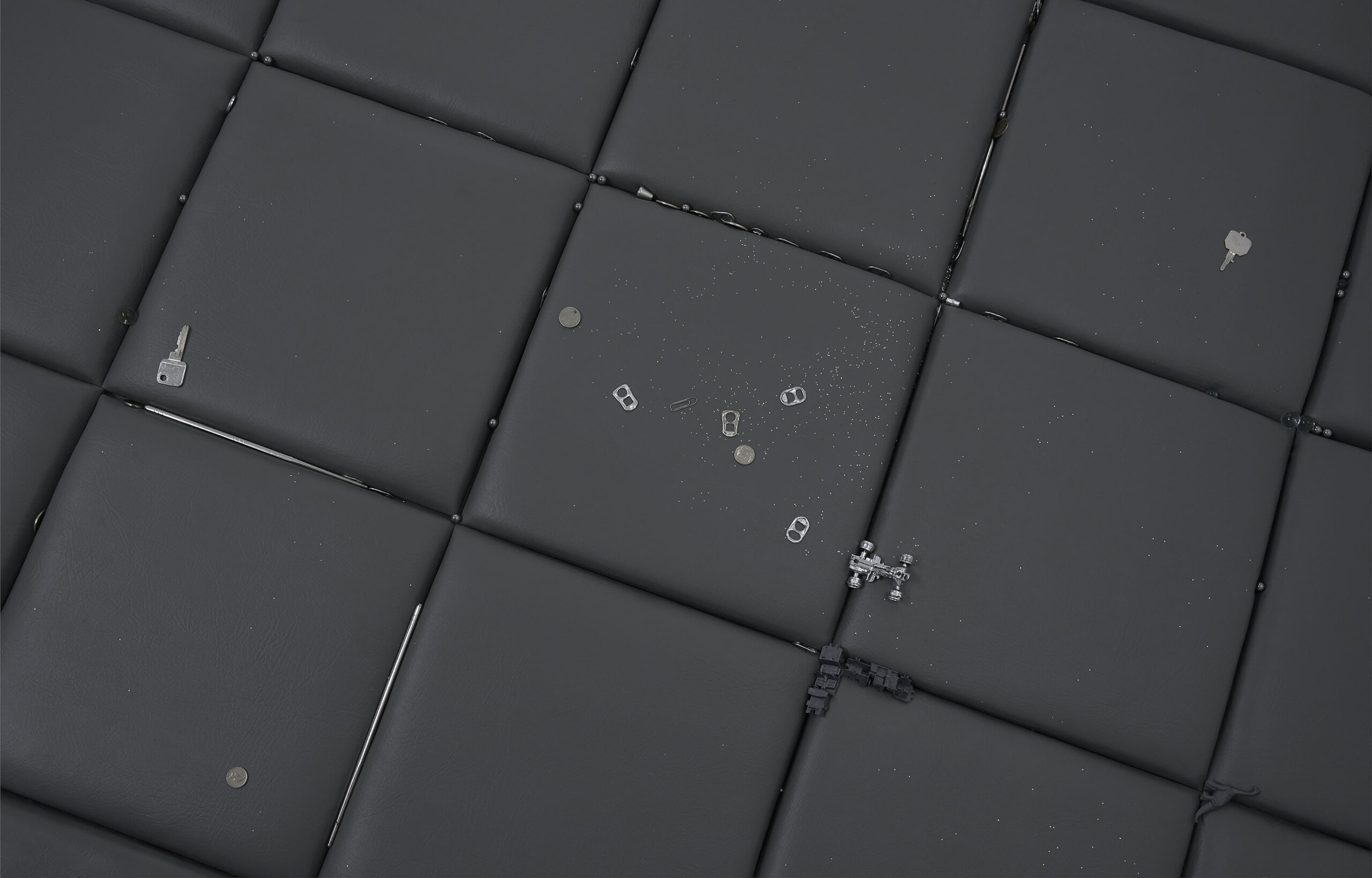
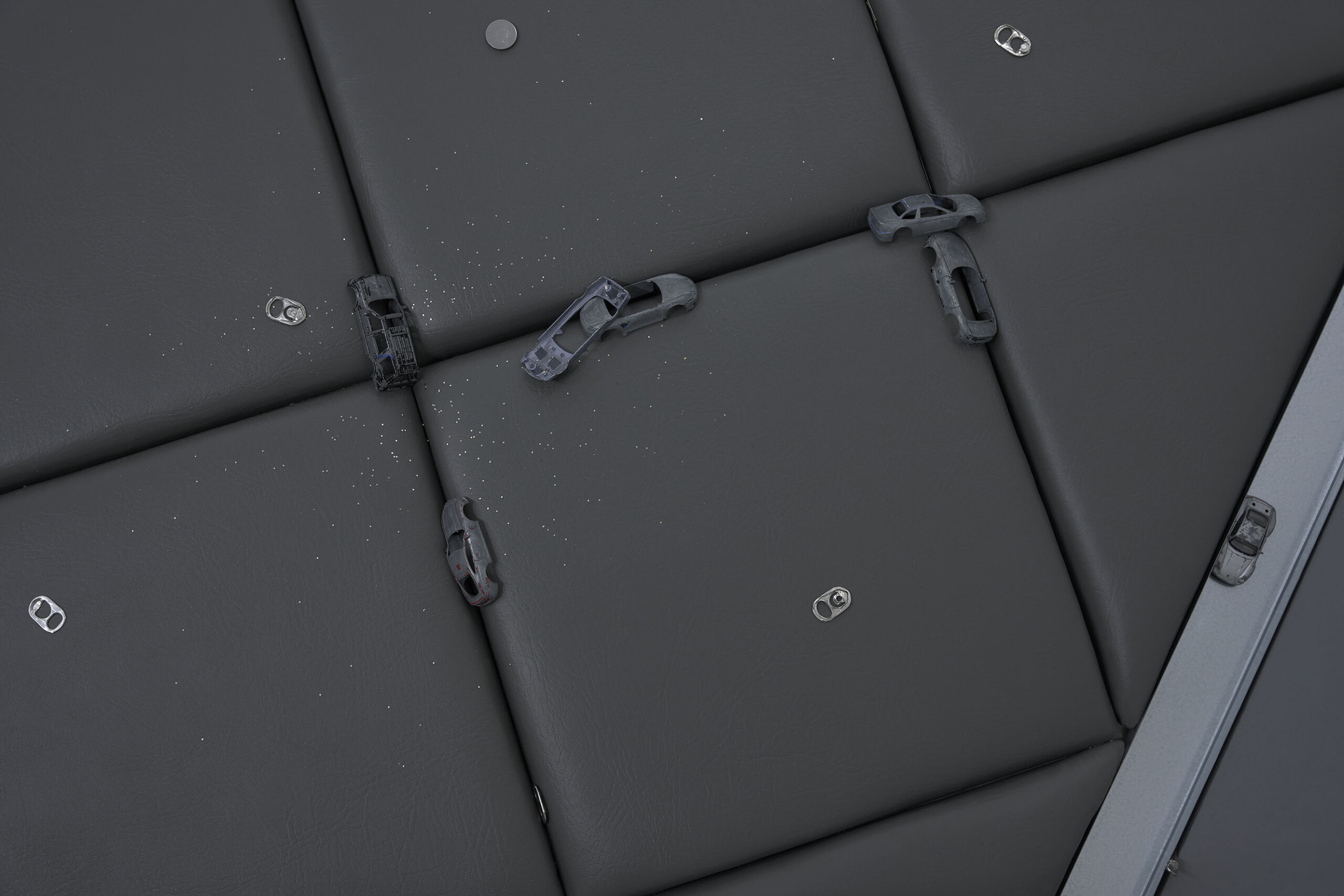

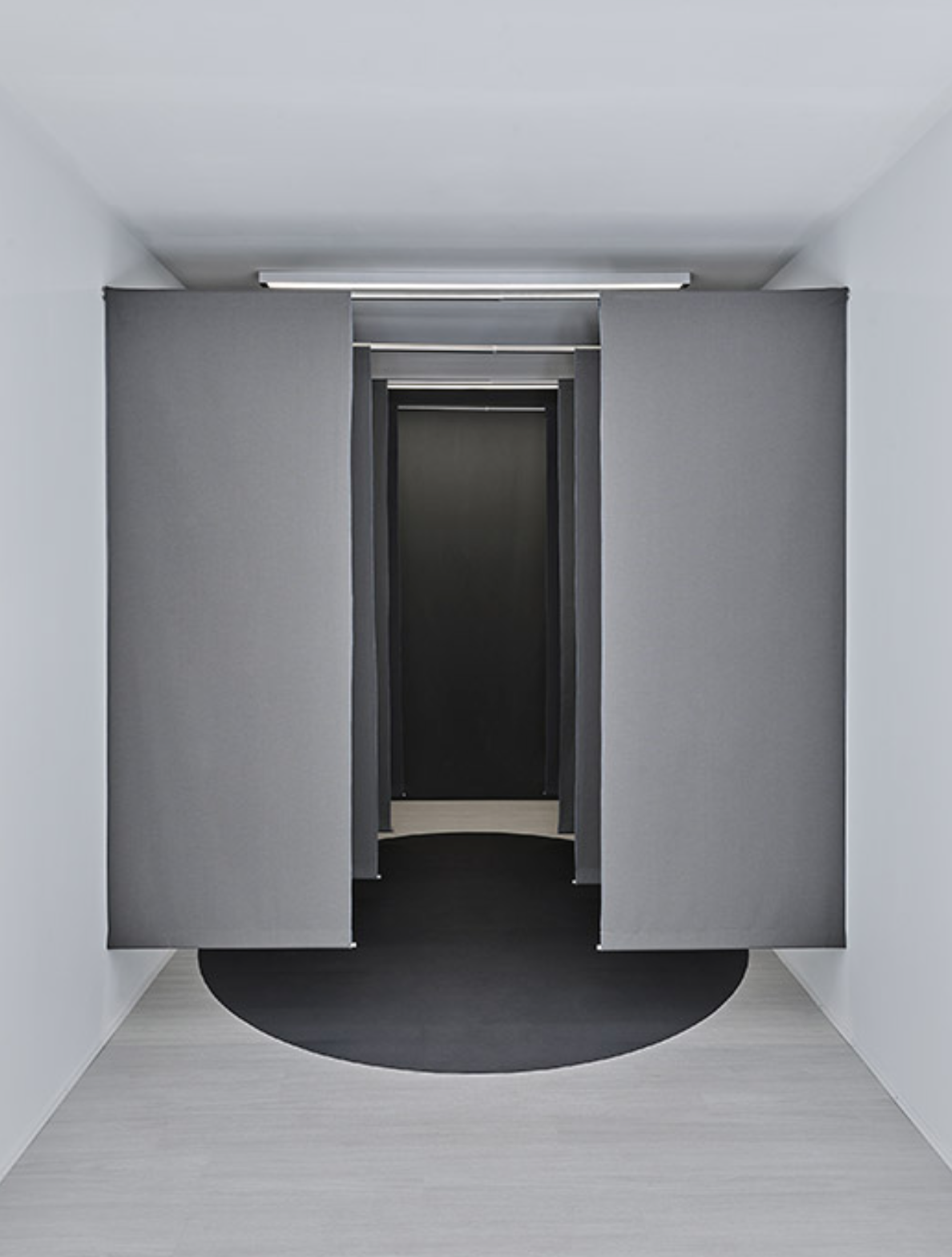
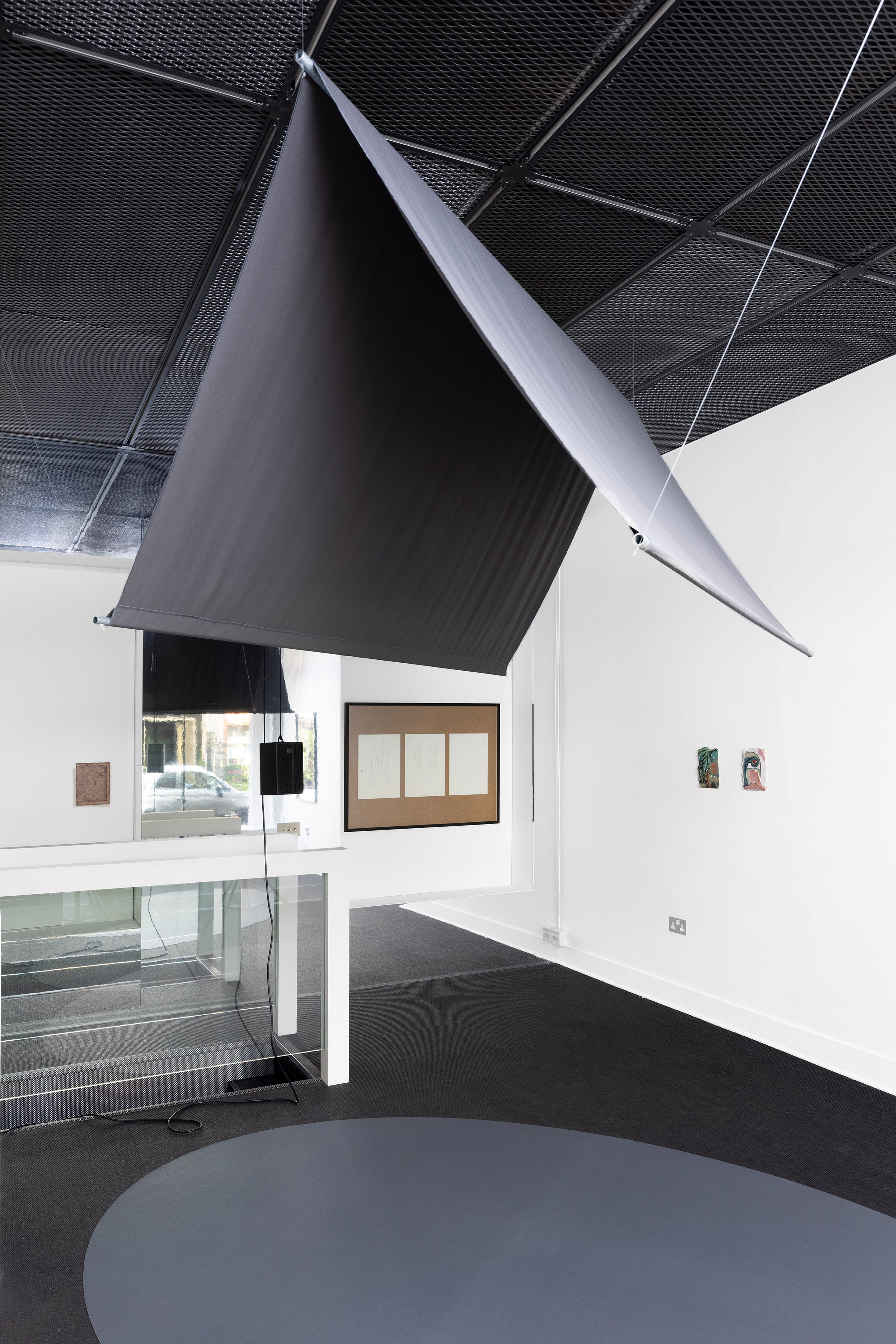
![Mistakes Were Made [drawing, Obama series]](https://belmacz.com/wp-content/uploads/2022/11/1.png)
![Mistakes Were Made [drawing, Obama series]](https://belmacz.com/wp-content/uploads/2022/11/5.png)
![Mistakes Were Made [drawing, Obama series]](https://belmacz.com/wp-content/uploads/2022/11/6.png)
![Mistakes Were Made [drawing, Obama series]](https://belmacz.com/wp-content/uploads/2022/11/9.png)
![Mistakes Were Made [drawing, Obama series]](https://belmacz.com/wp-content/uploads/2022/11/4.png)
![Mistakes Were Made [drawing, Obama series]](https://belmacz.com/wp-content/uploads/2022/11/7.png)
![Mistakes Were Made [drawing, Obama series]](https://belmacz.com/wp-content/uploads/2022/11/8.png)
![Mistakes Were Made [drawing, Obama series]](https://belmacz.com/wp-content/uploads/2022/11/3.png)
![Mistakes Were Made [drawing, Obama series]](https://belmacz.com/wp-content/uploads/2022/11/2.png)

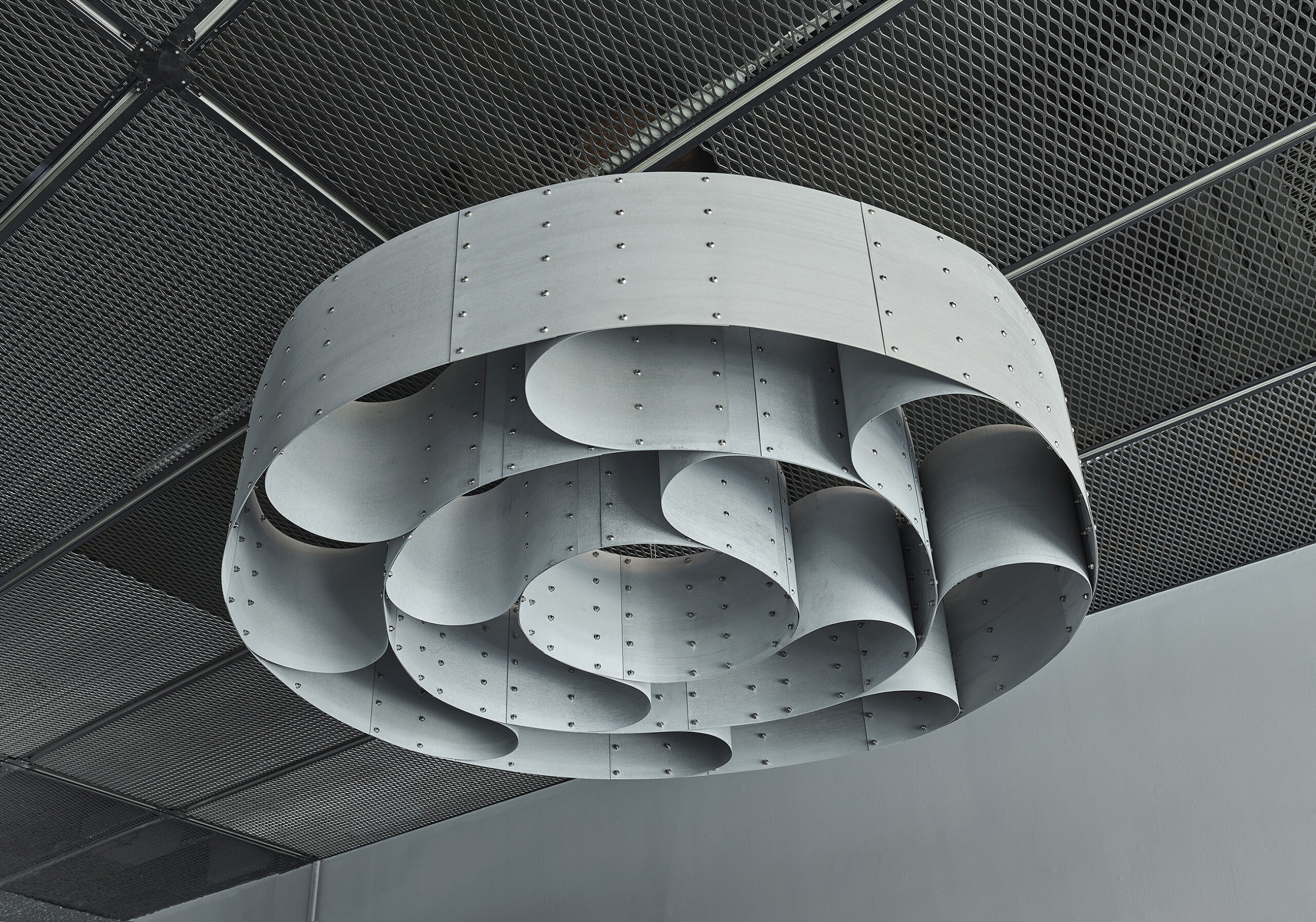
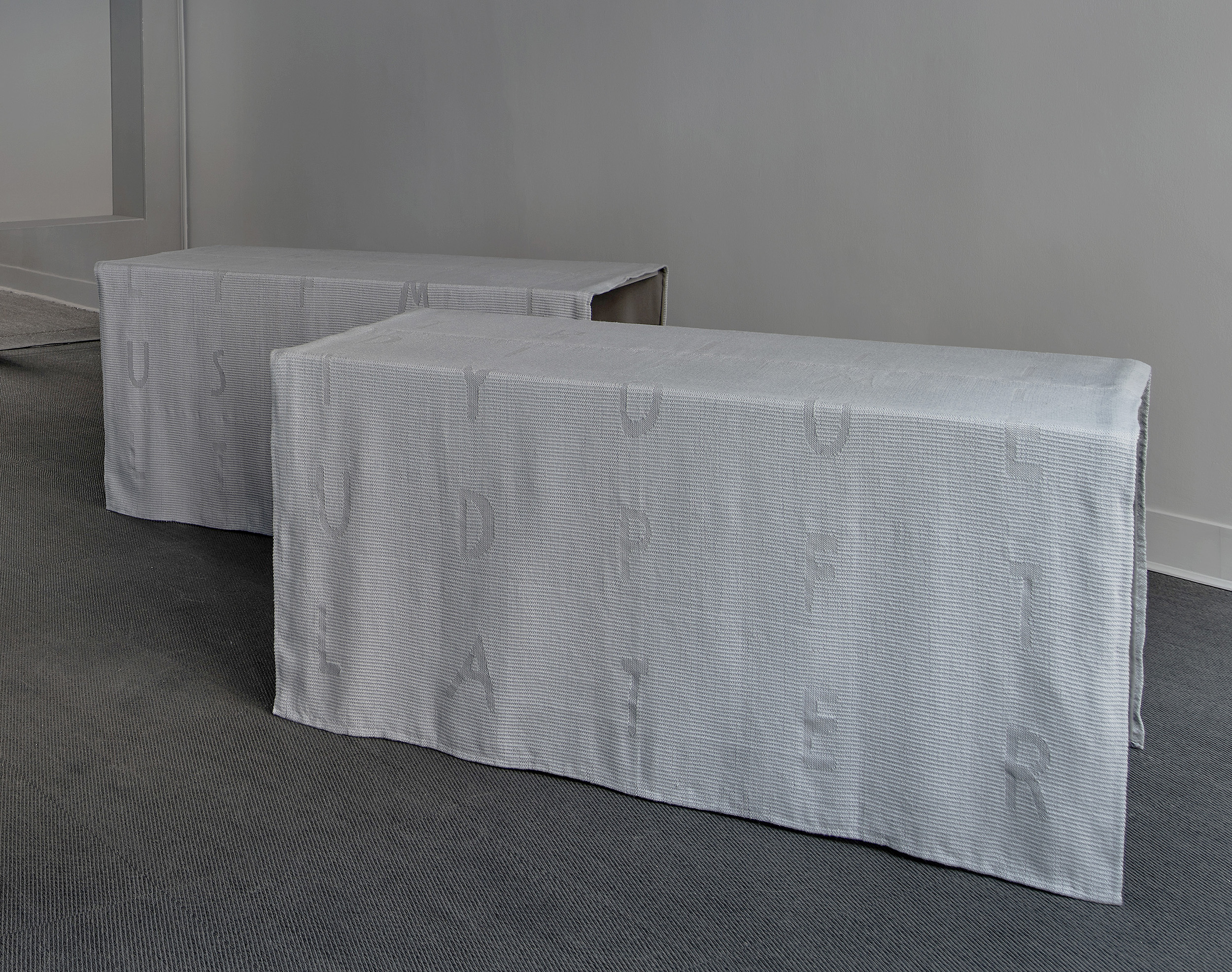



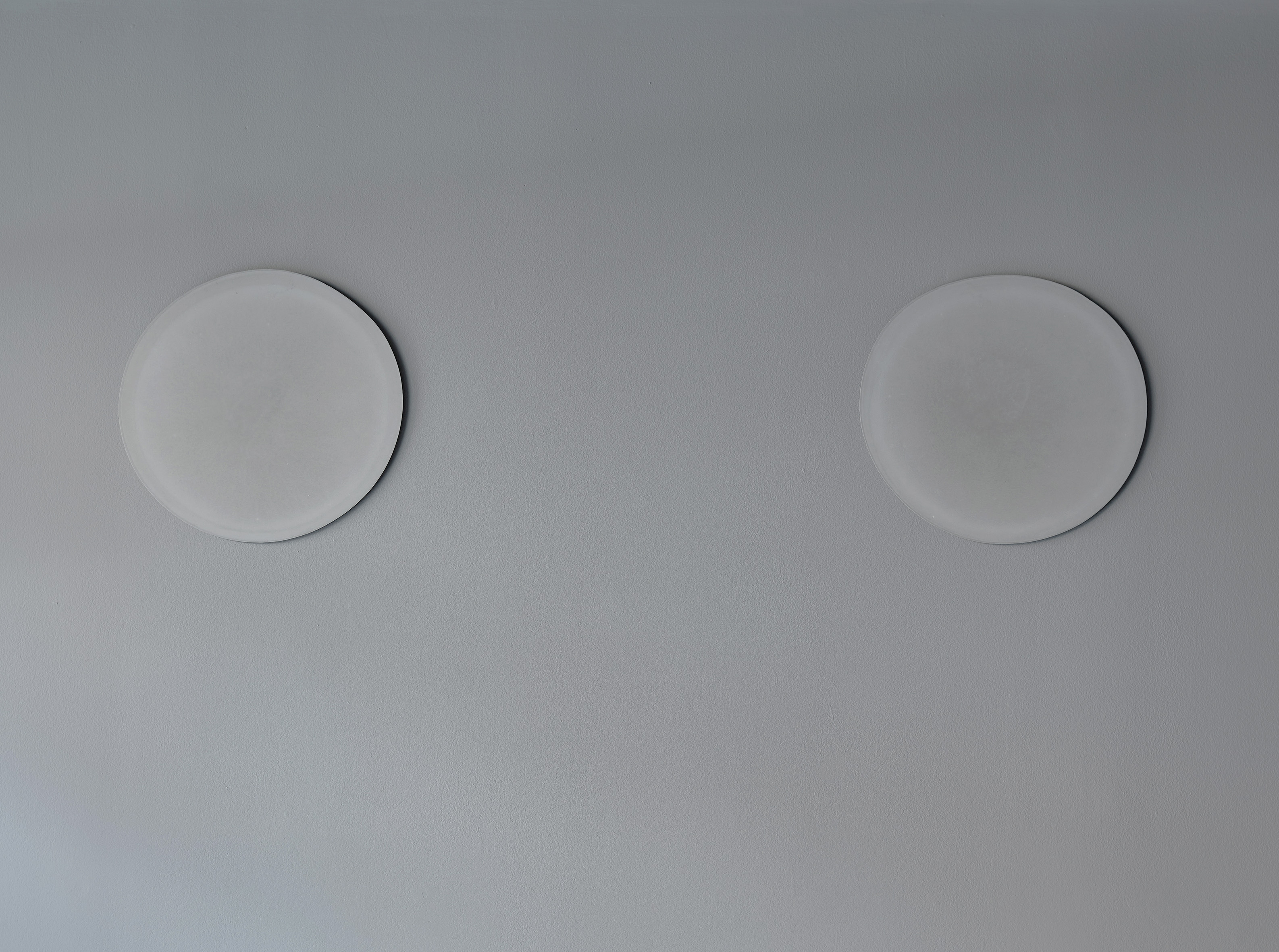

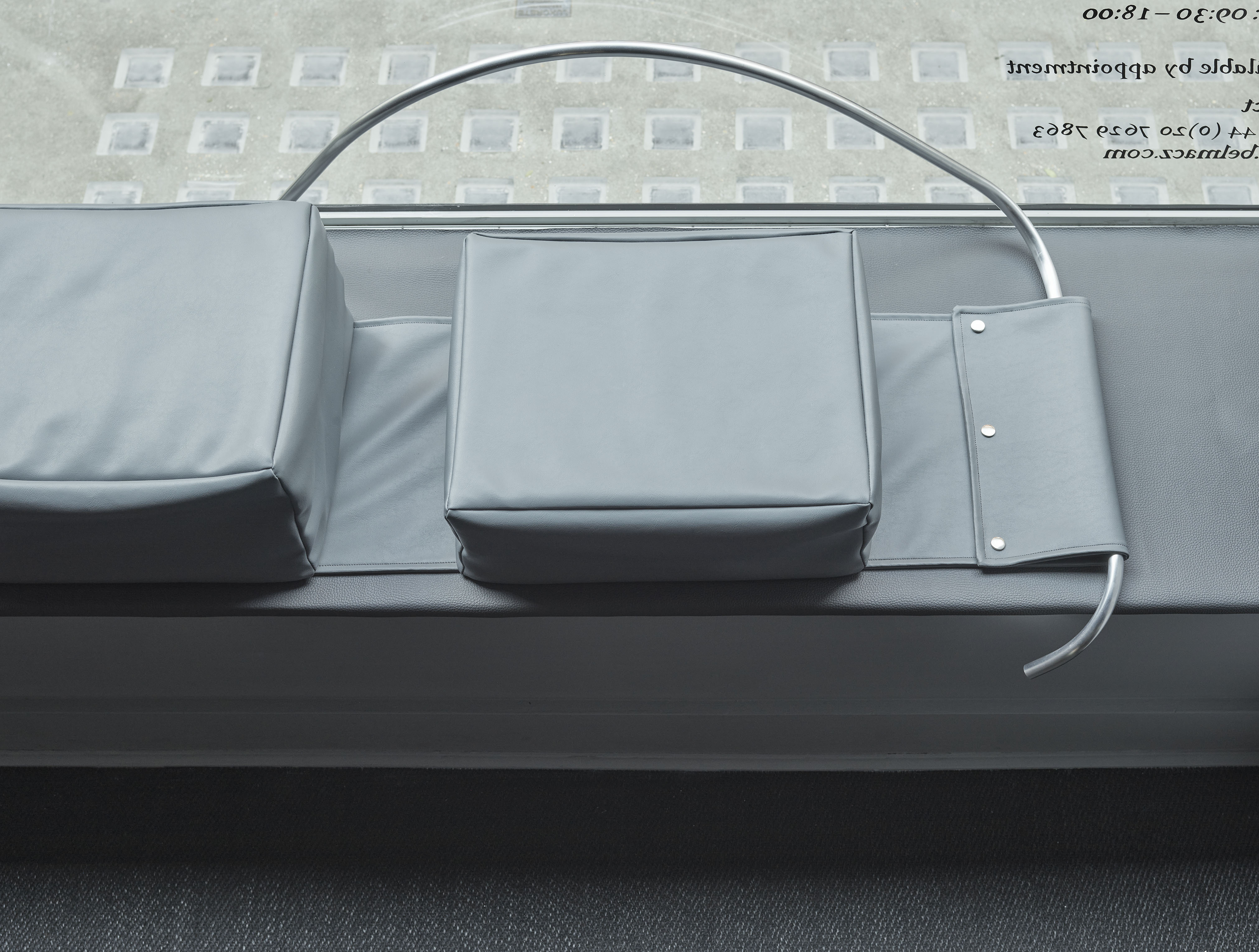




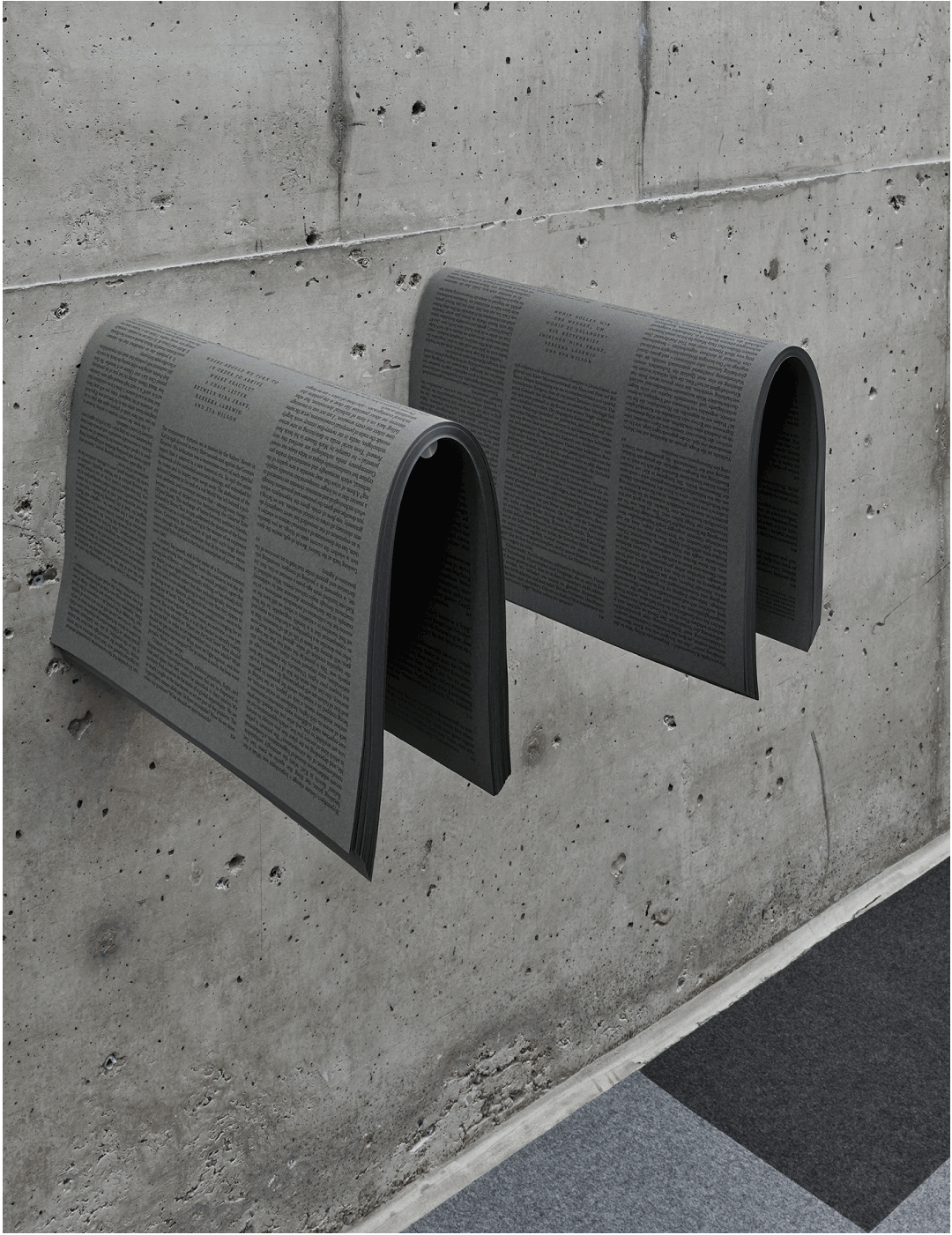
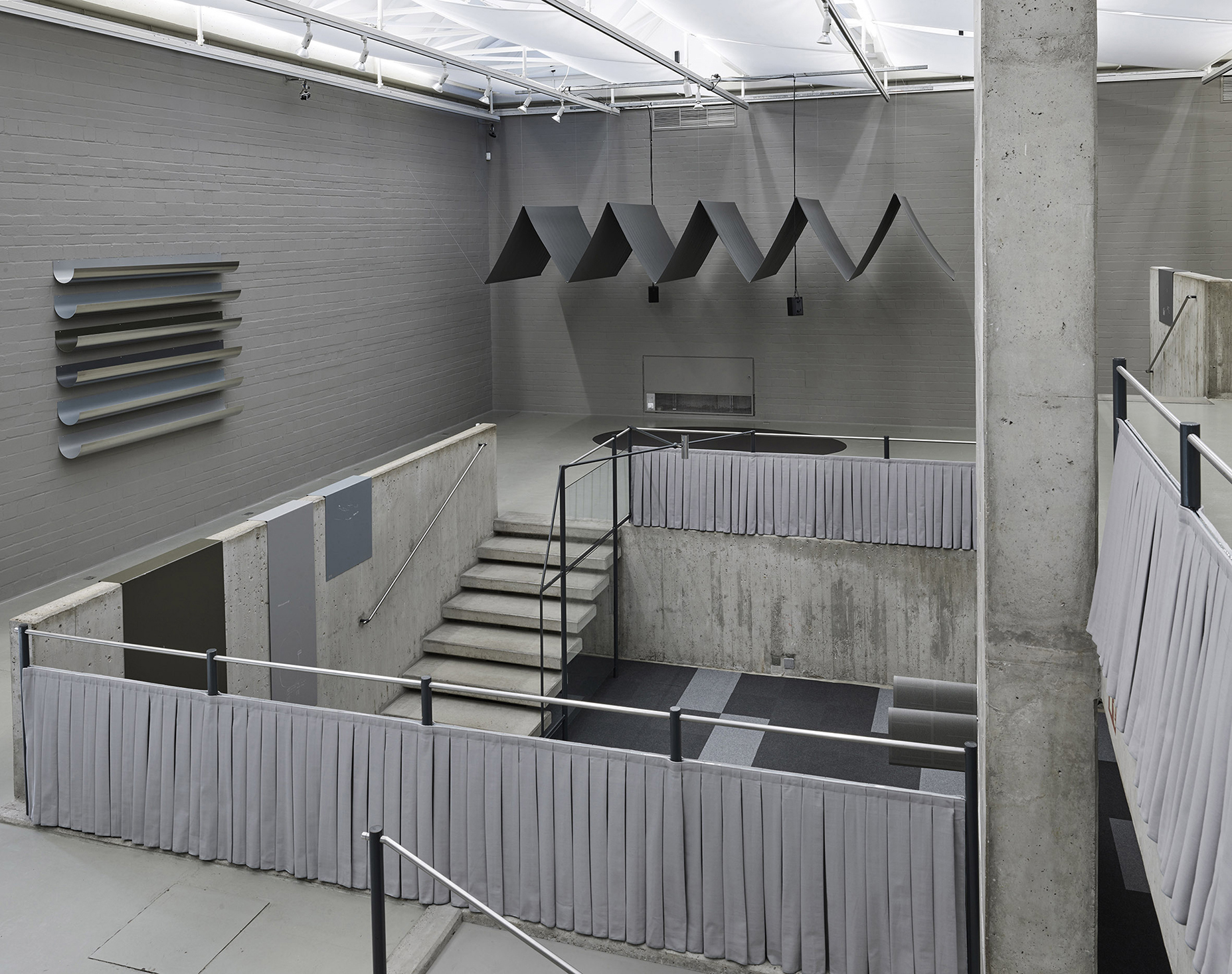
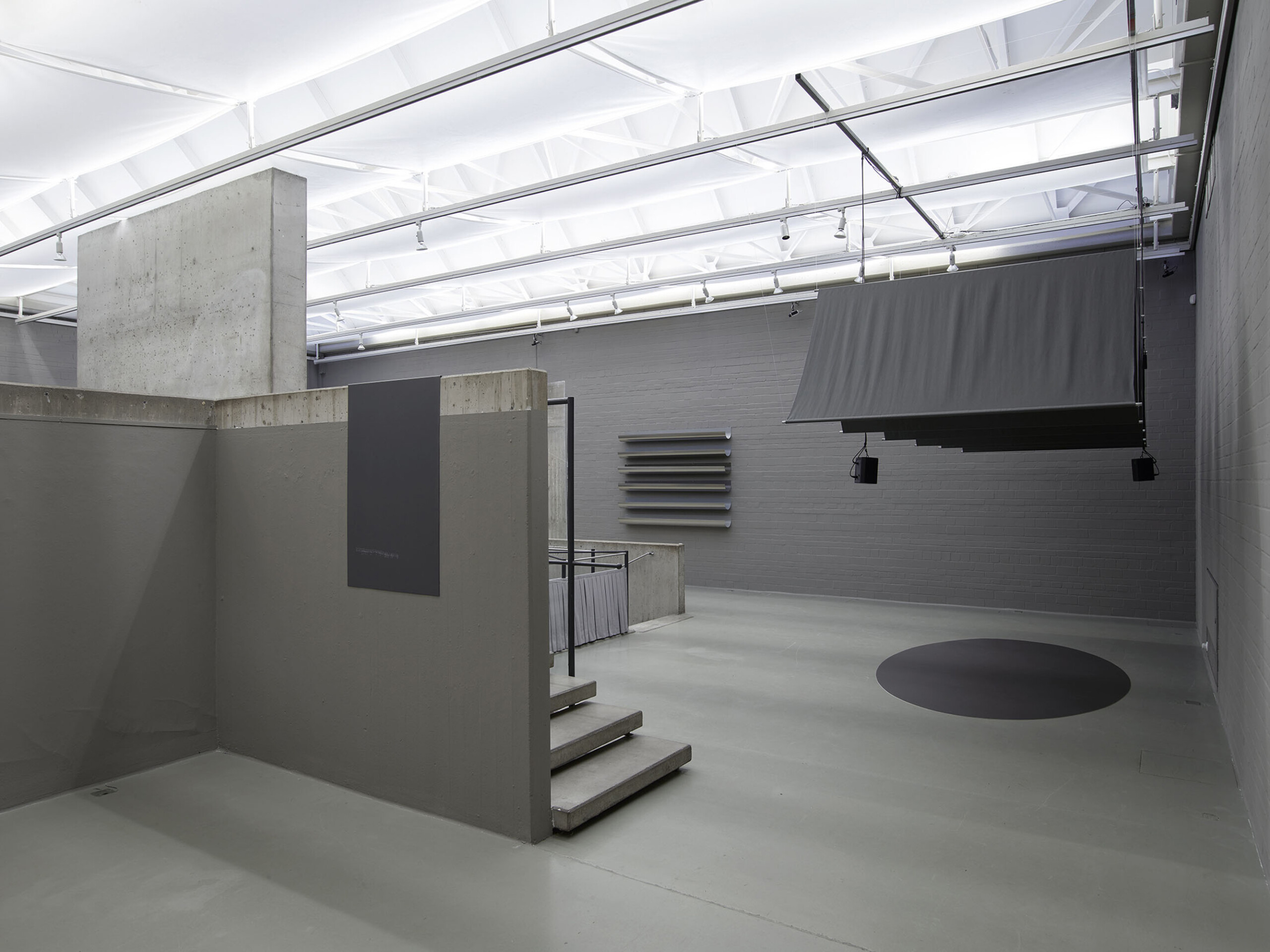
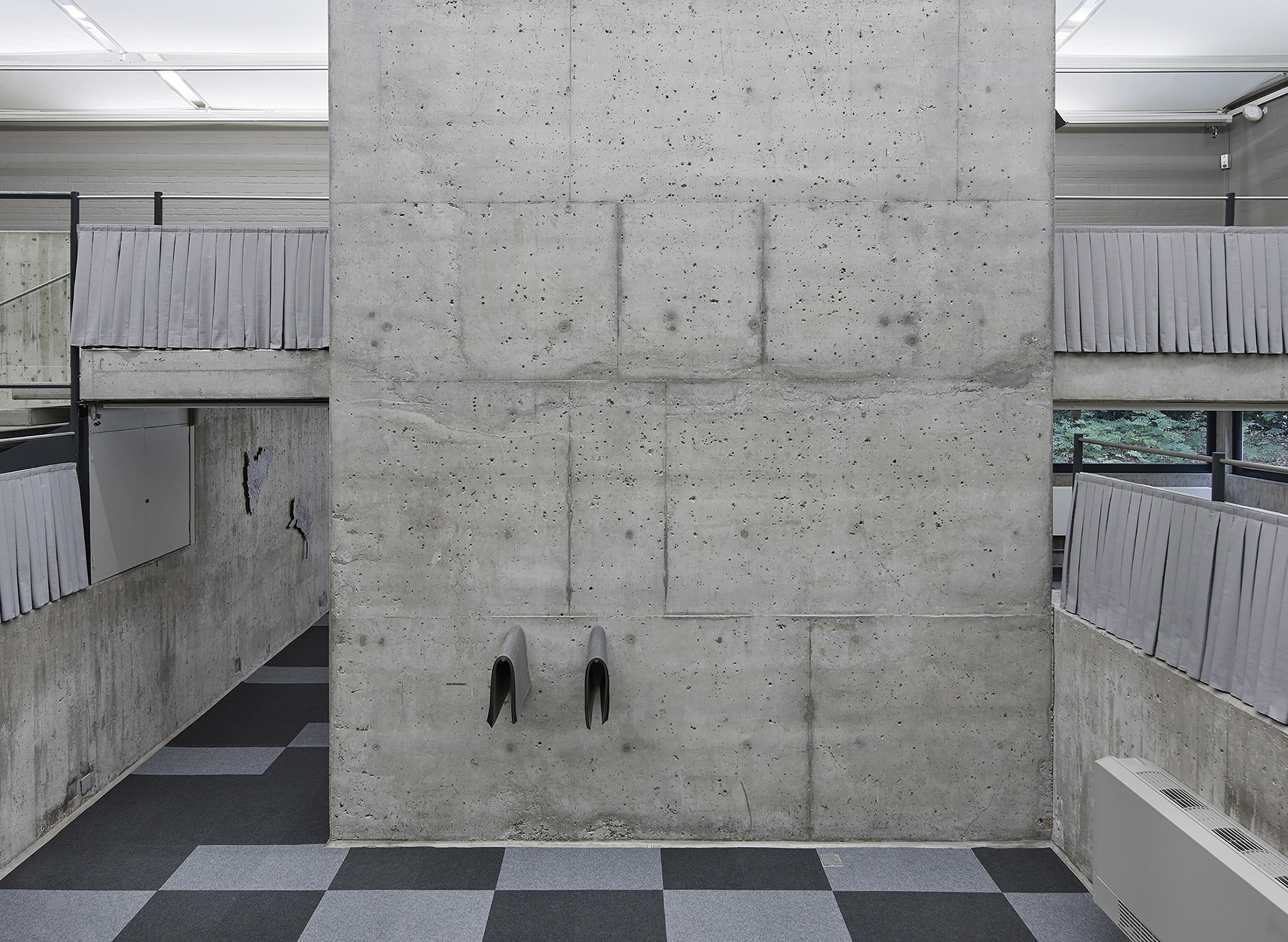
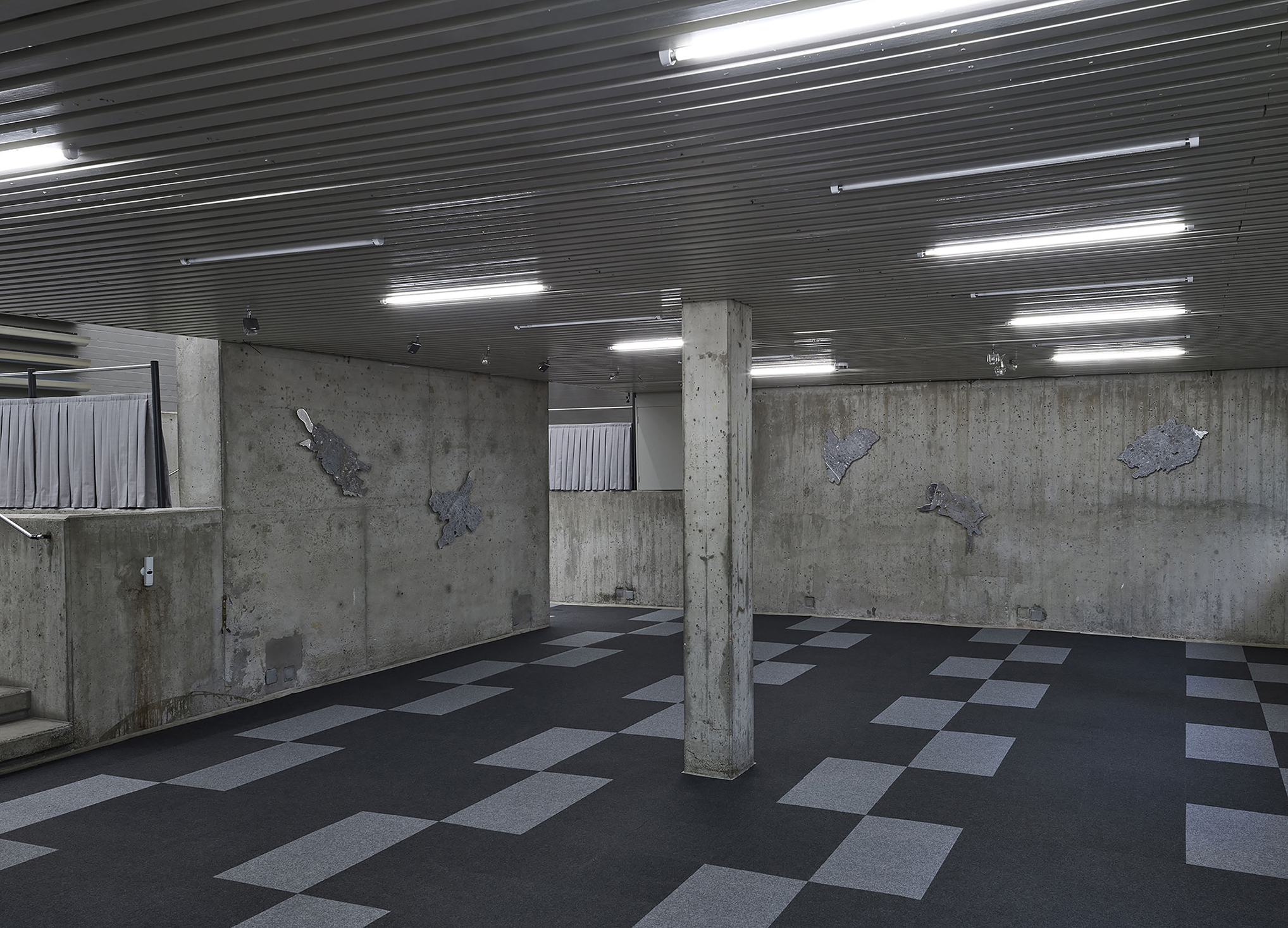
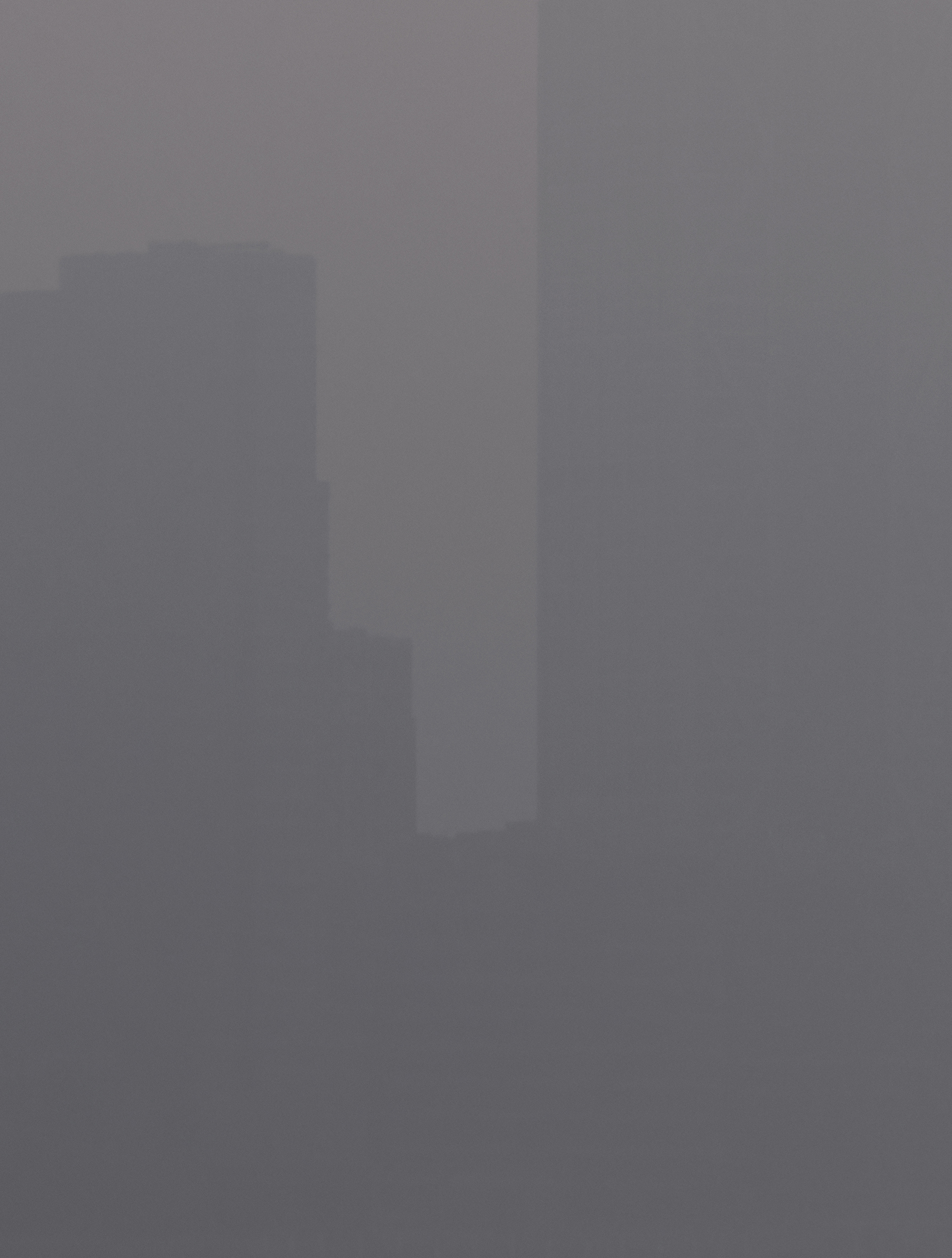

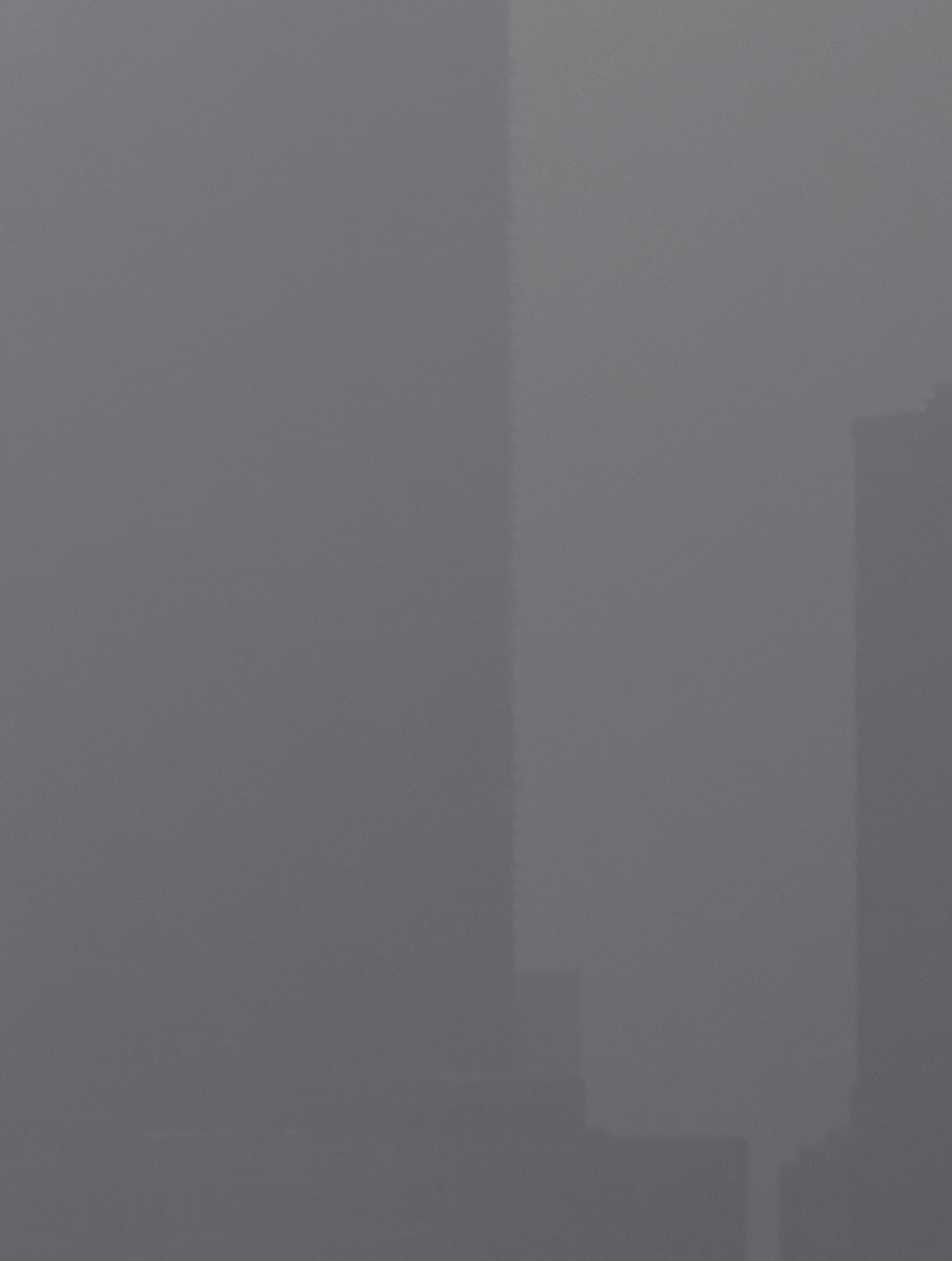
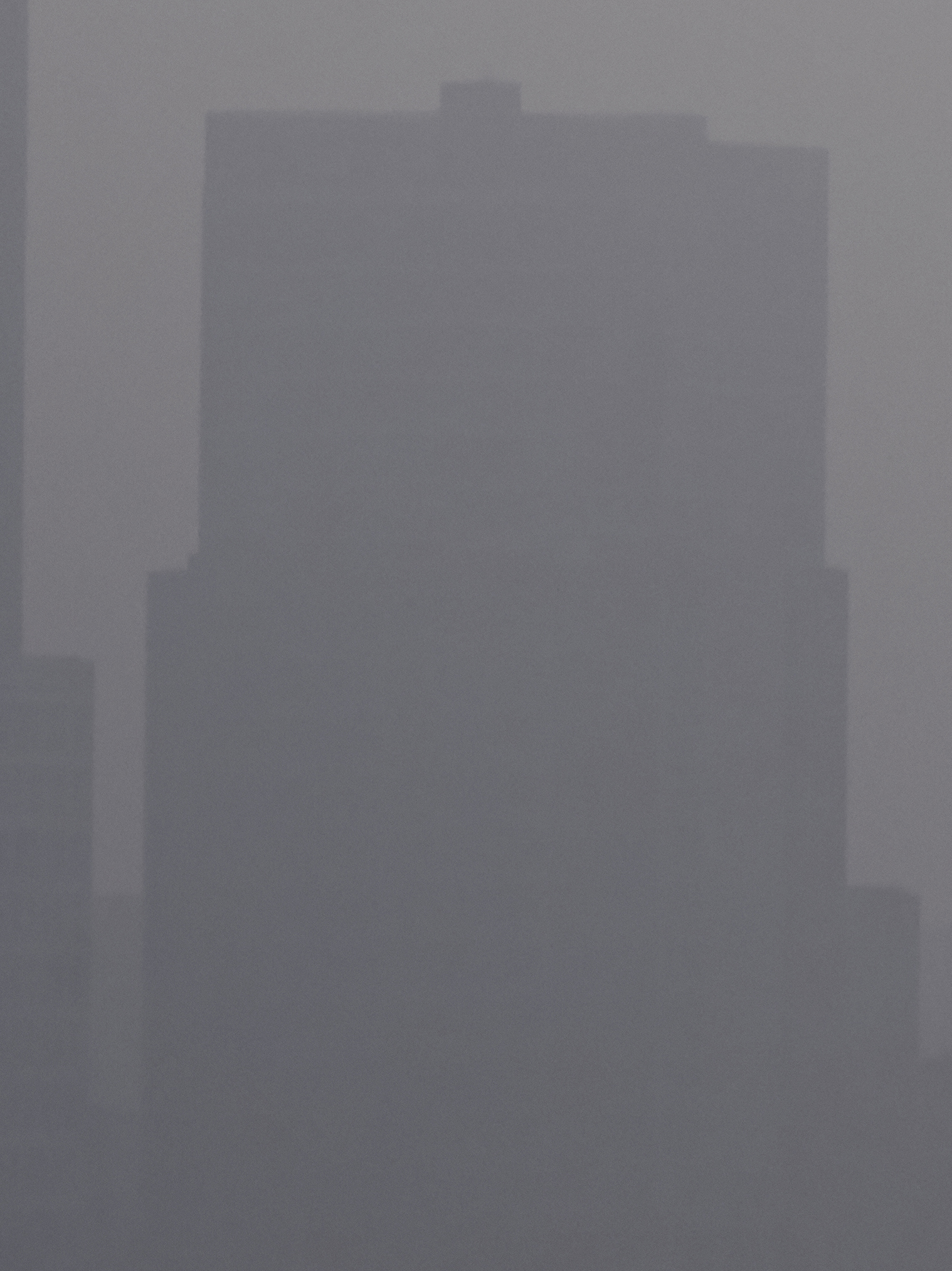


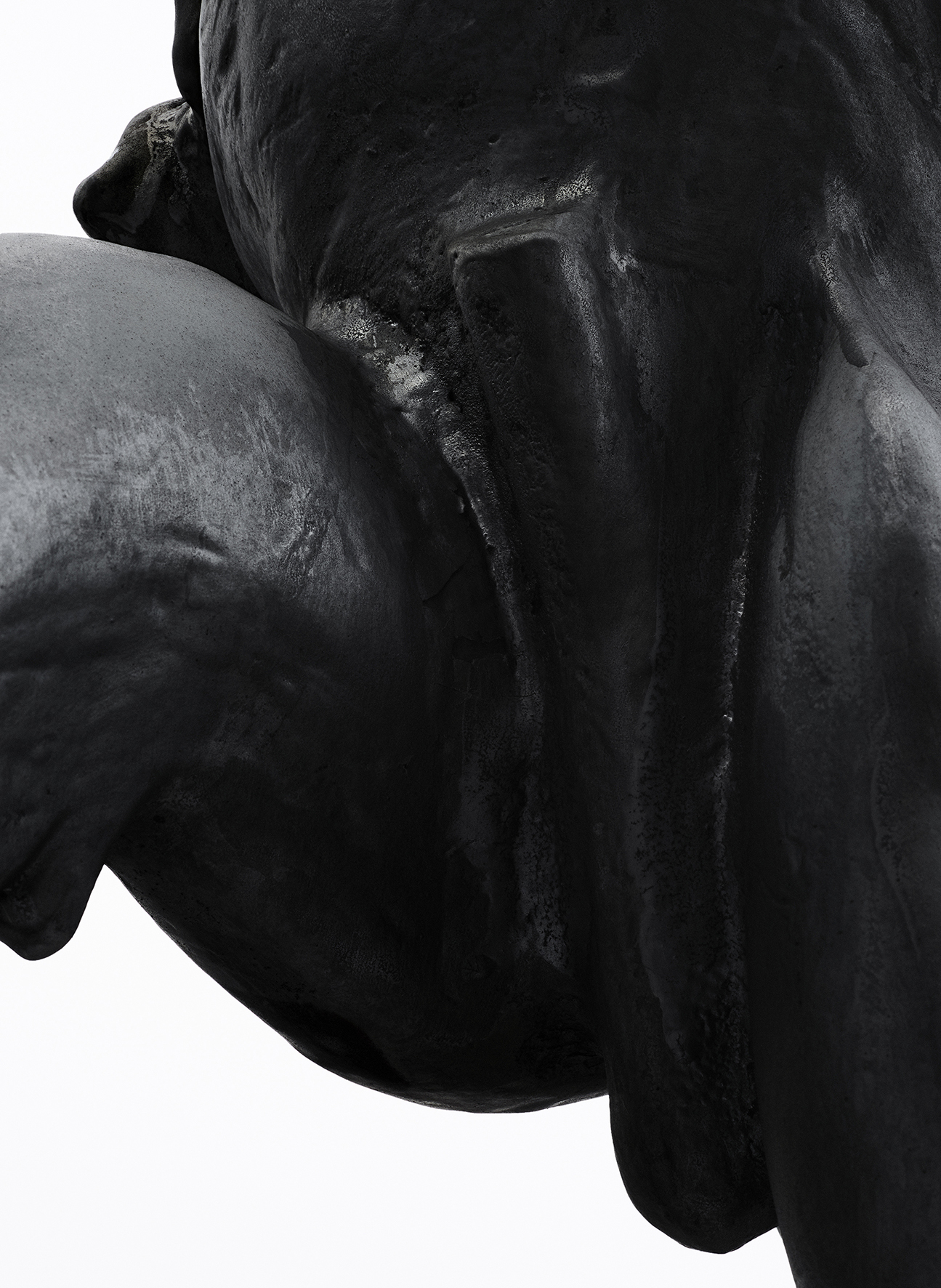
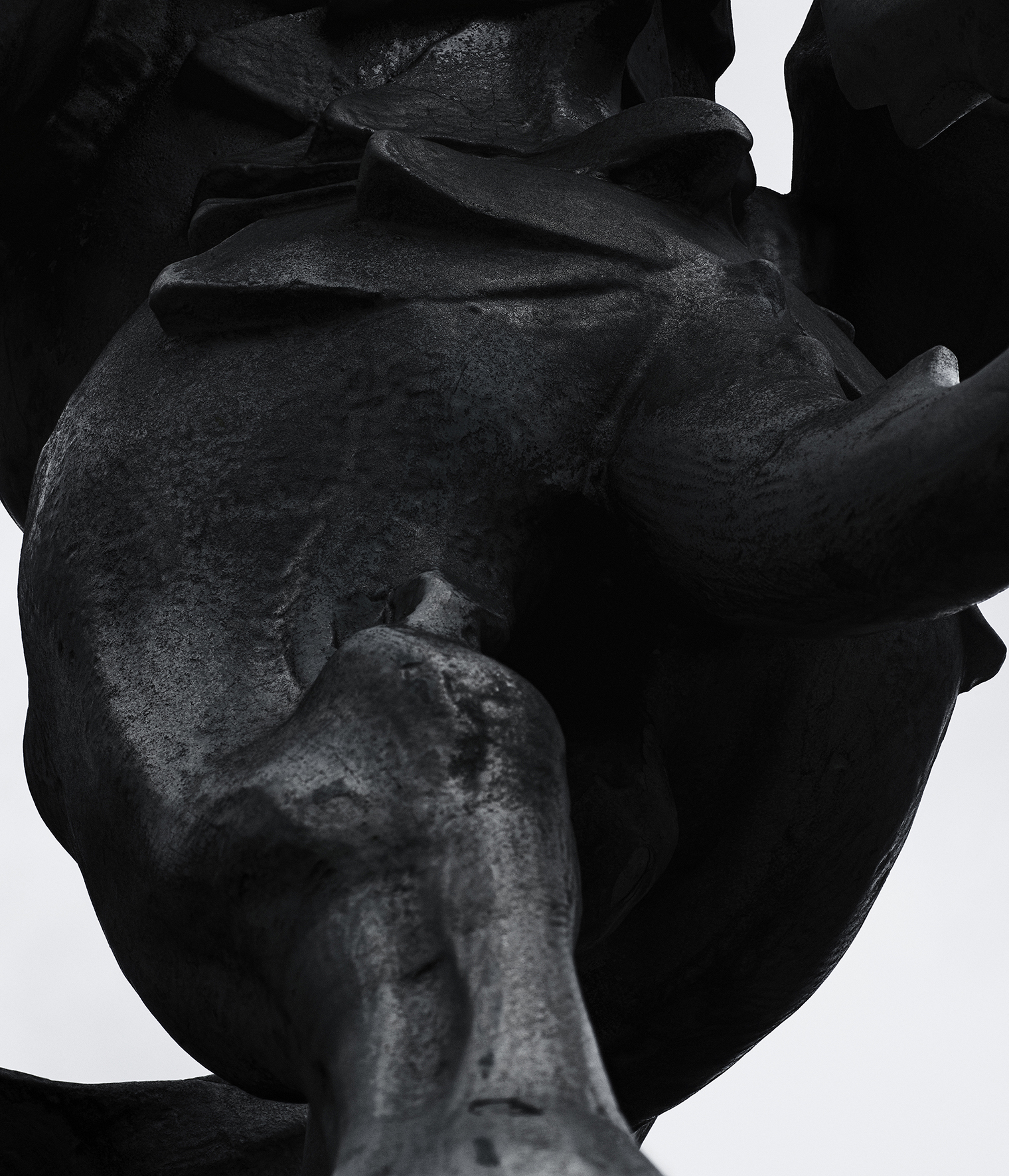
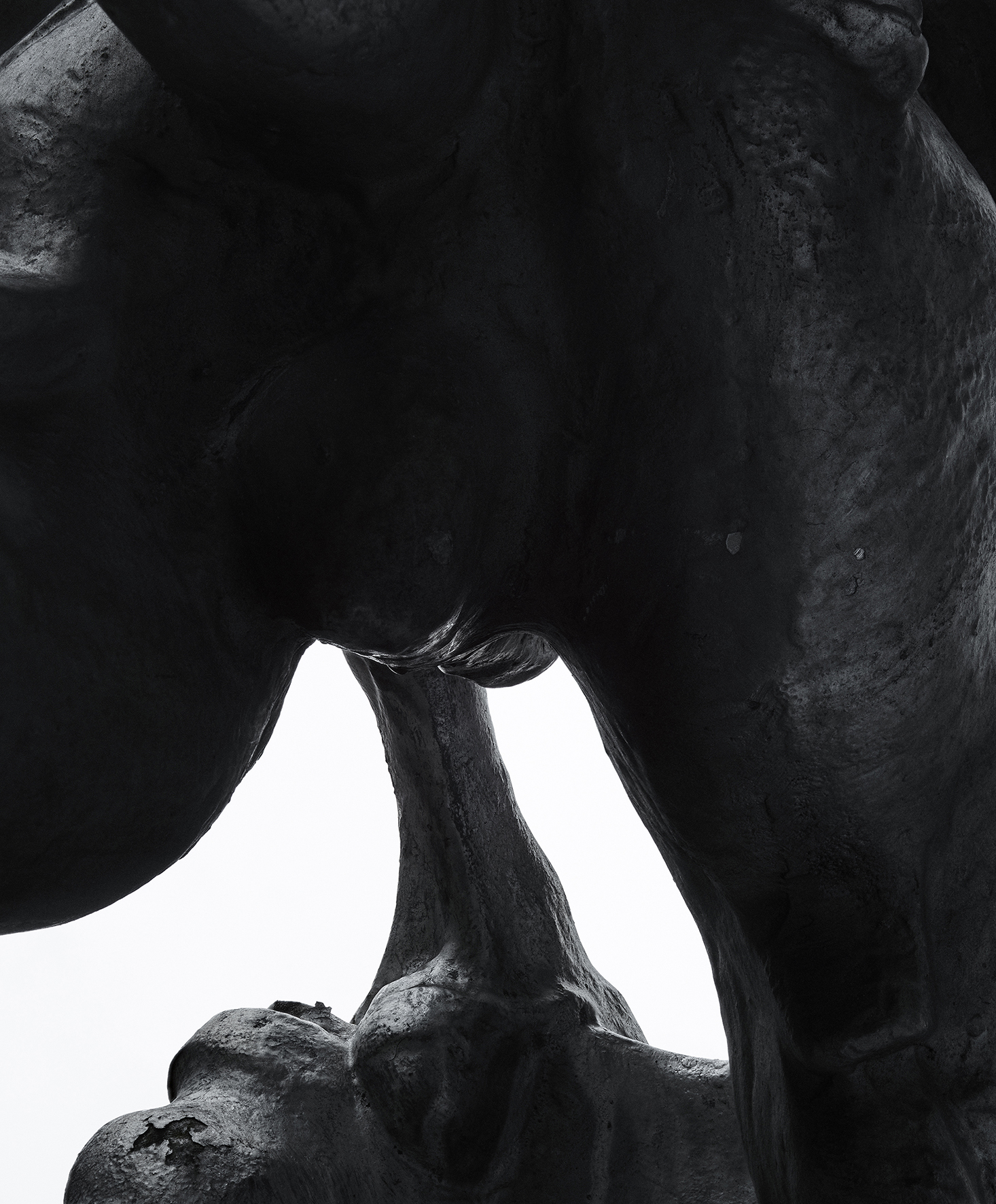

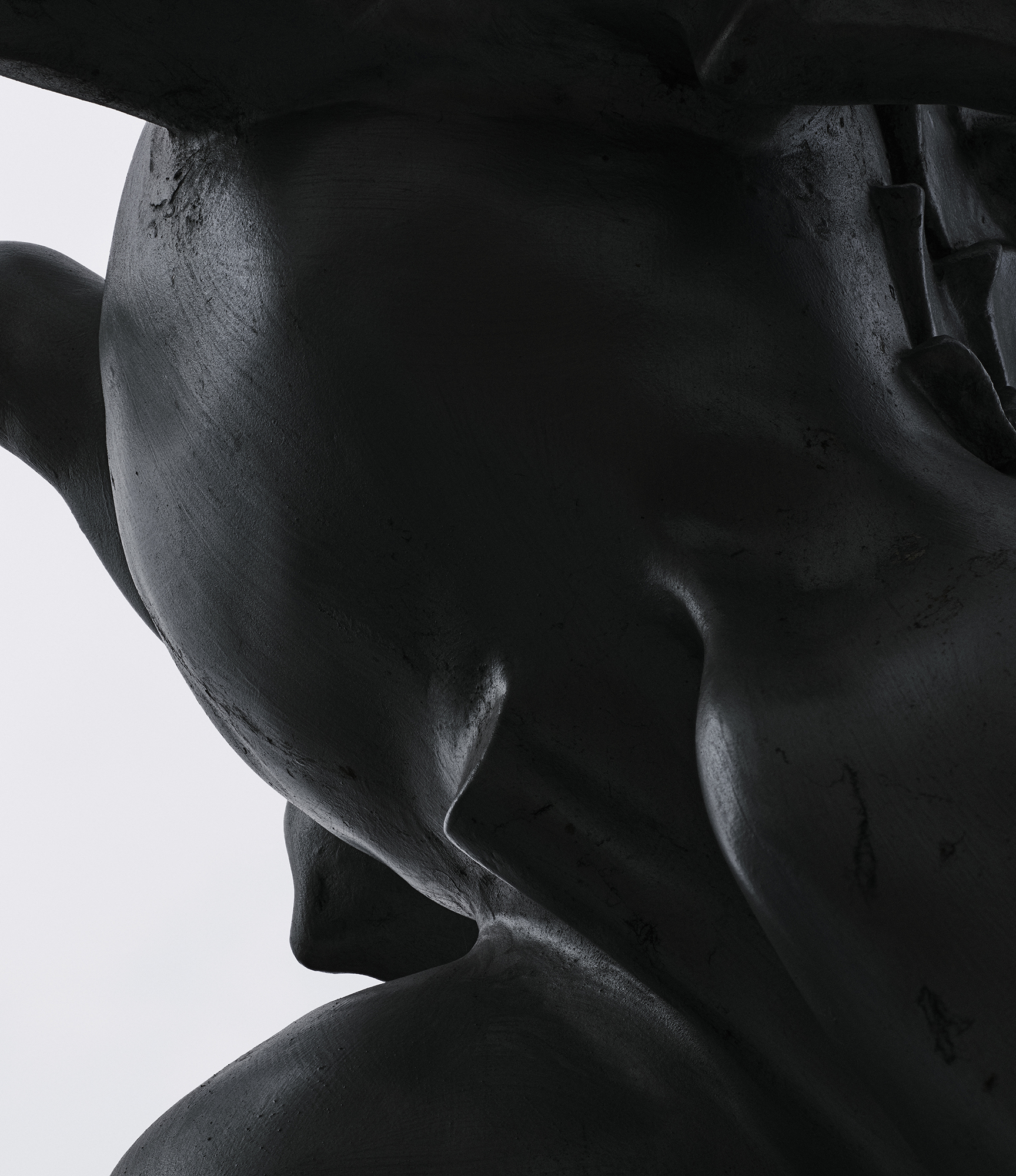
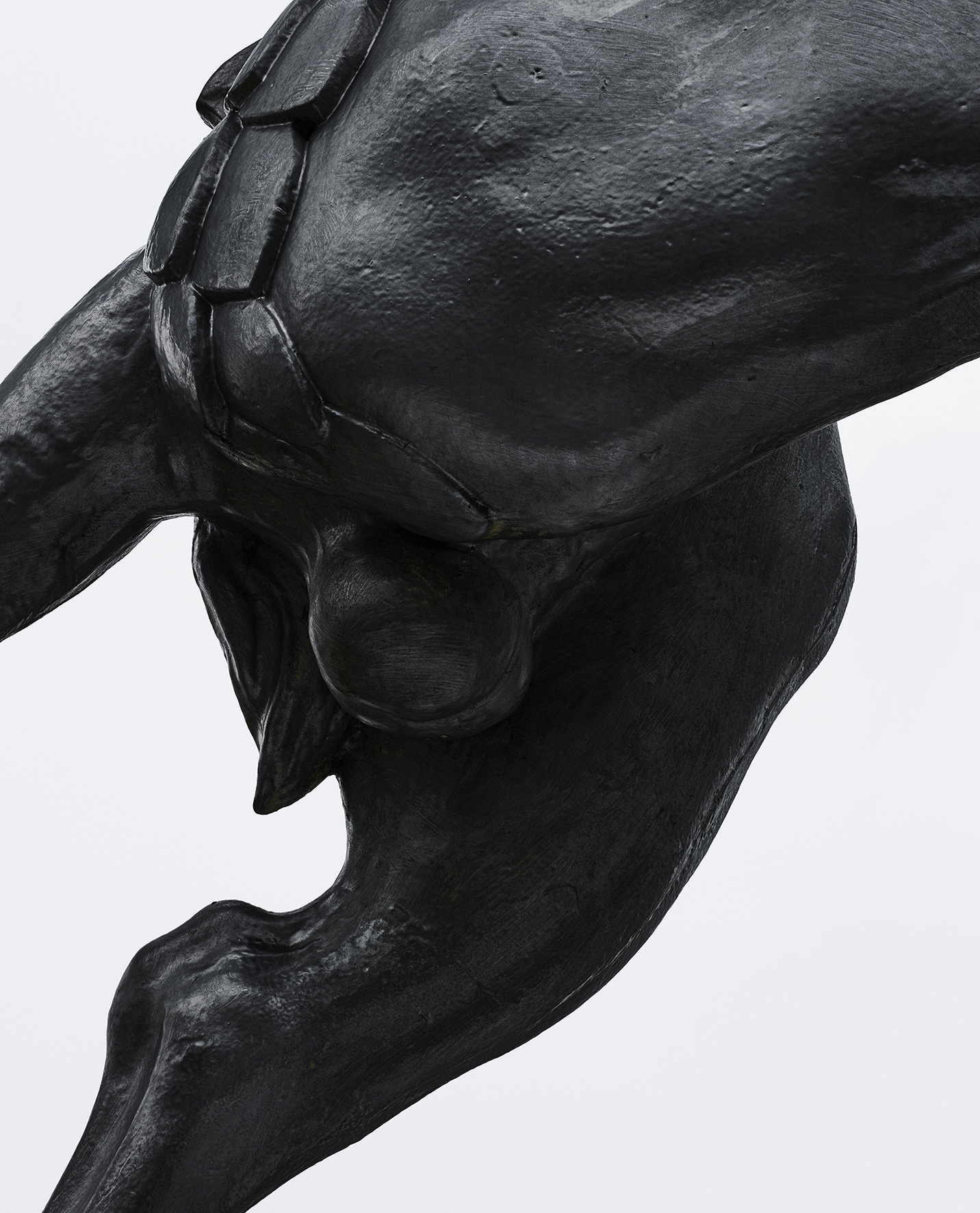
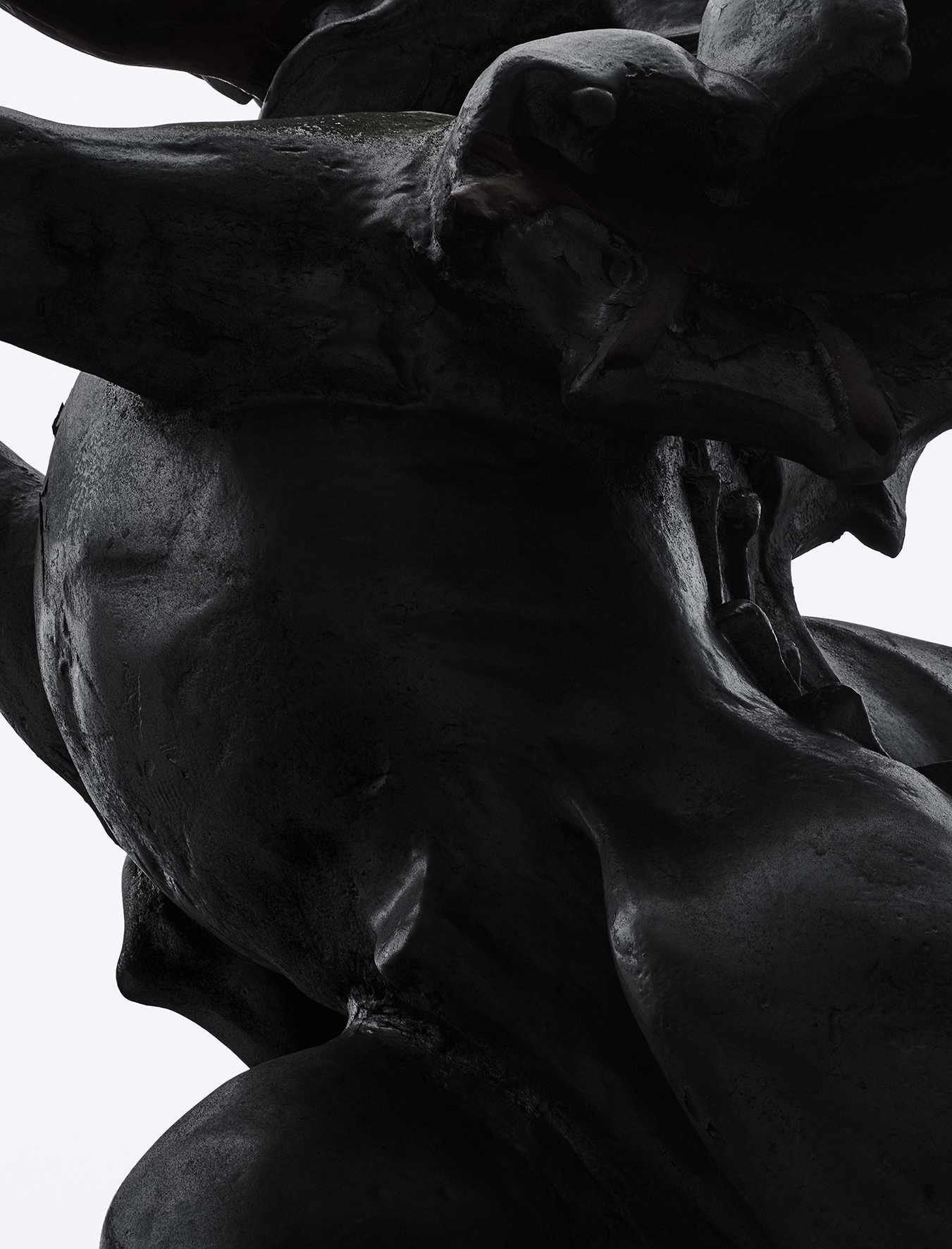
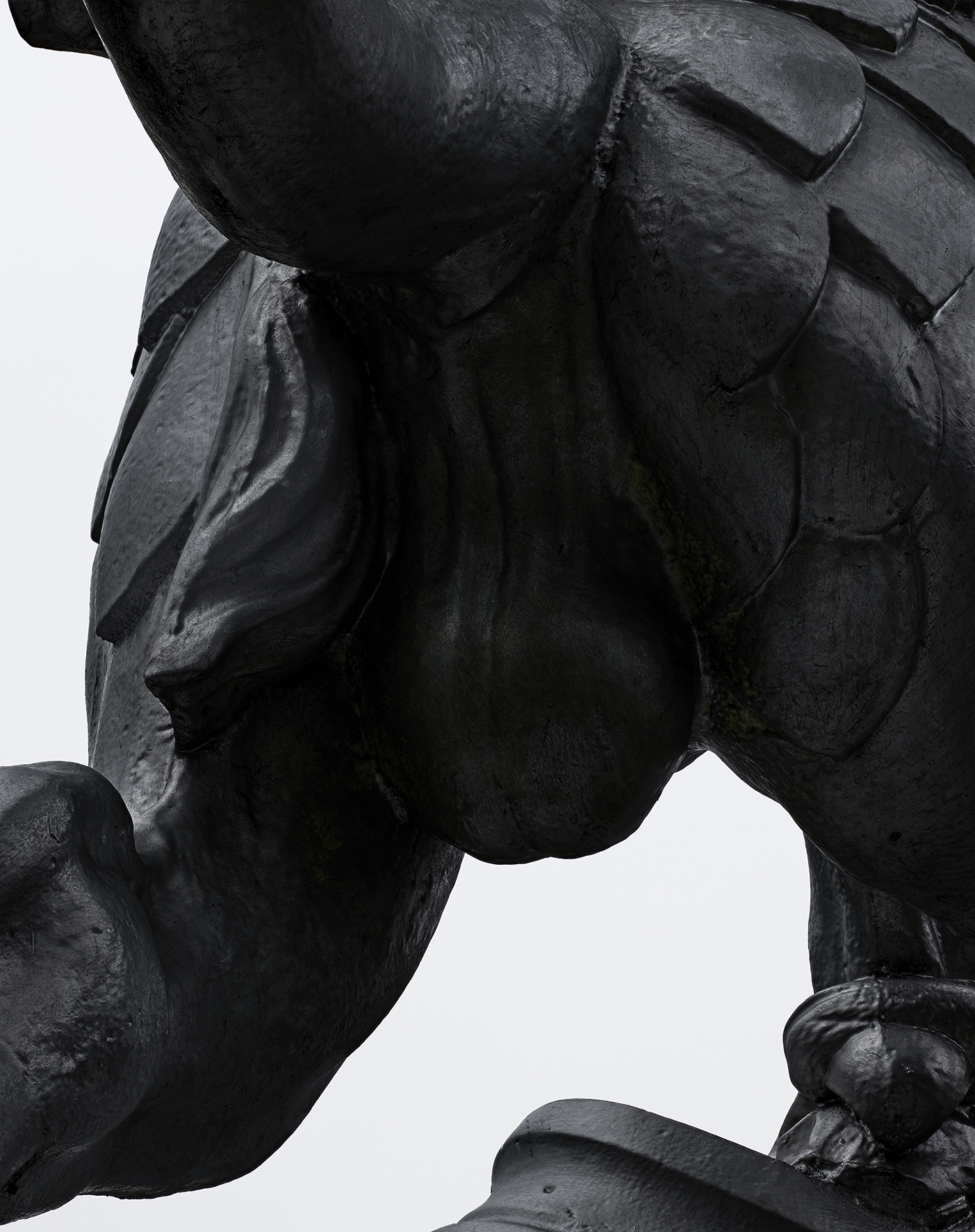
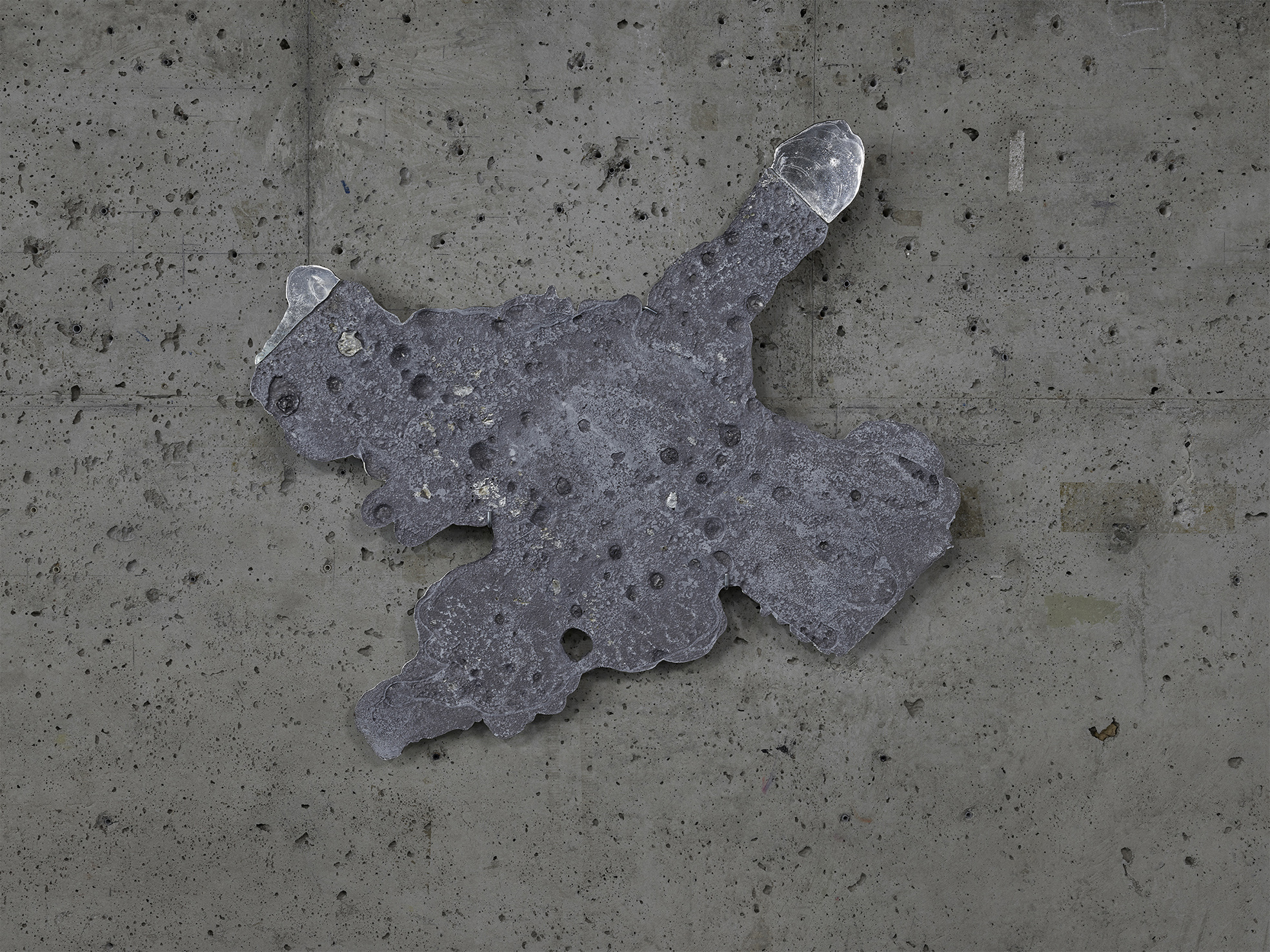
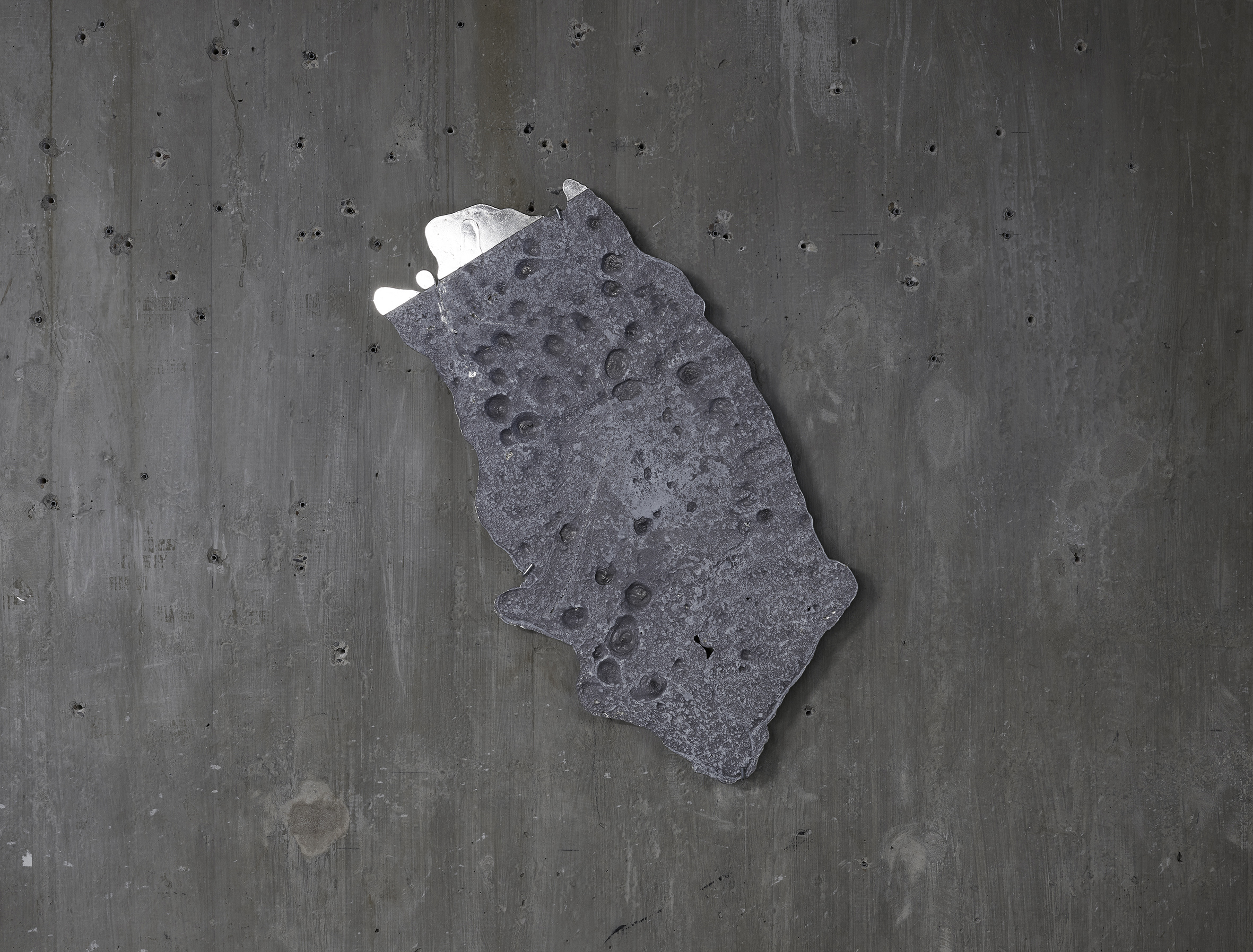




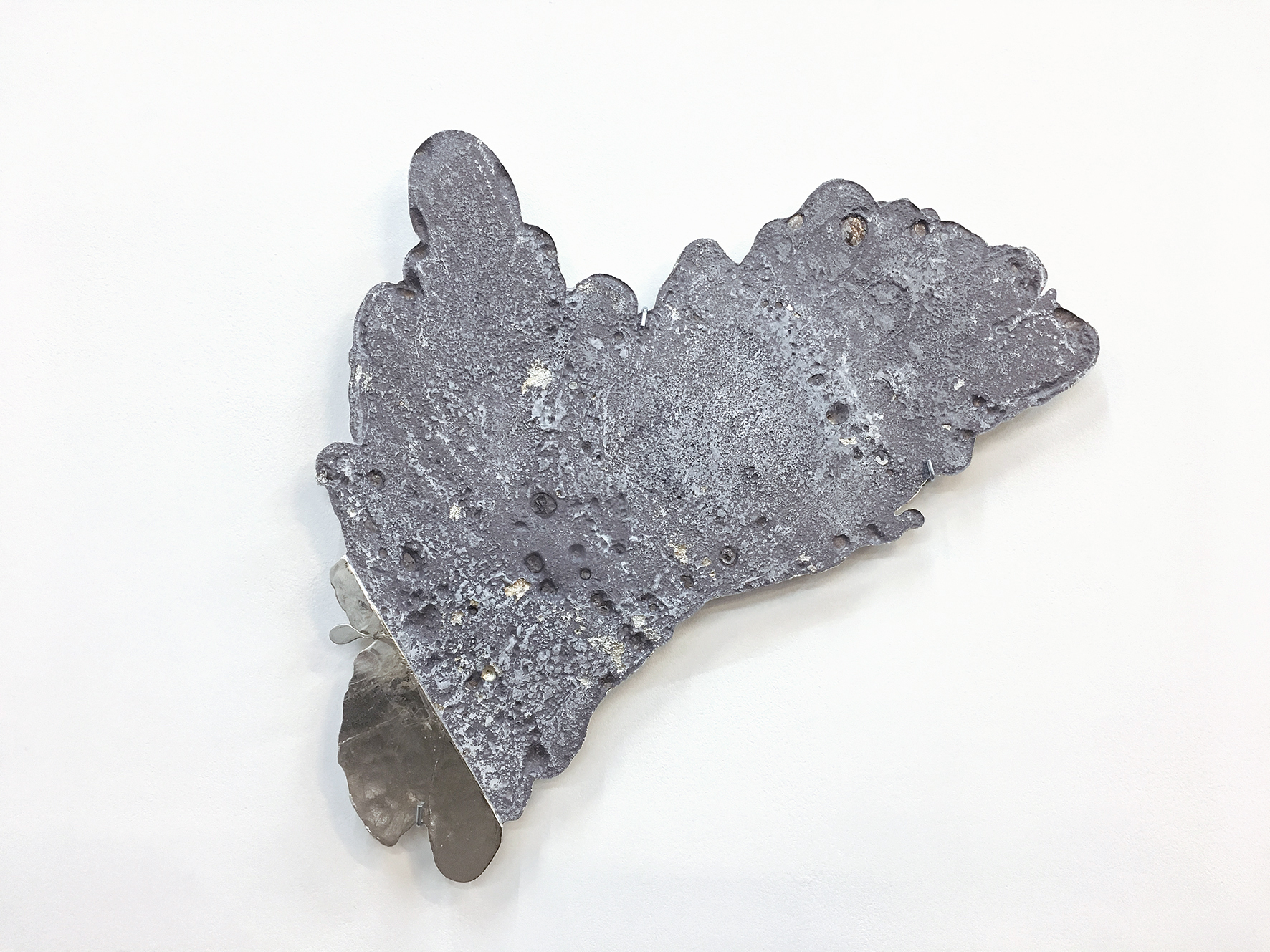

![The Economist [detail]](https://belmacz.com/wp-content/uploads/2023/05/FO_Economist_I_A_0010_2000px-scaled.jpg)
![DeBeers I [detail]](https://belmacz.com/wp-content/uploads/2023/05/MAD_17_0023-DEBEERS_I-detail.jpg)
![London Stock Exchange I [detail]](https://belmacz.com/wp-content/uploads/2023/05/MAD_17_0022-London-Stock-Exchange-I-detail.jpg)
